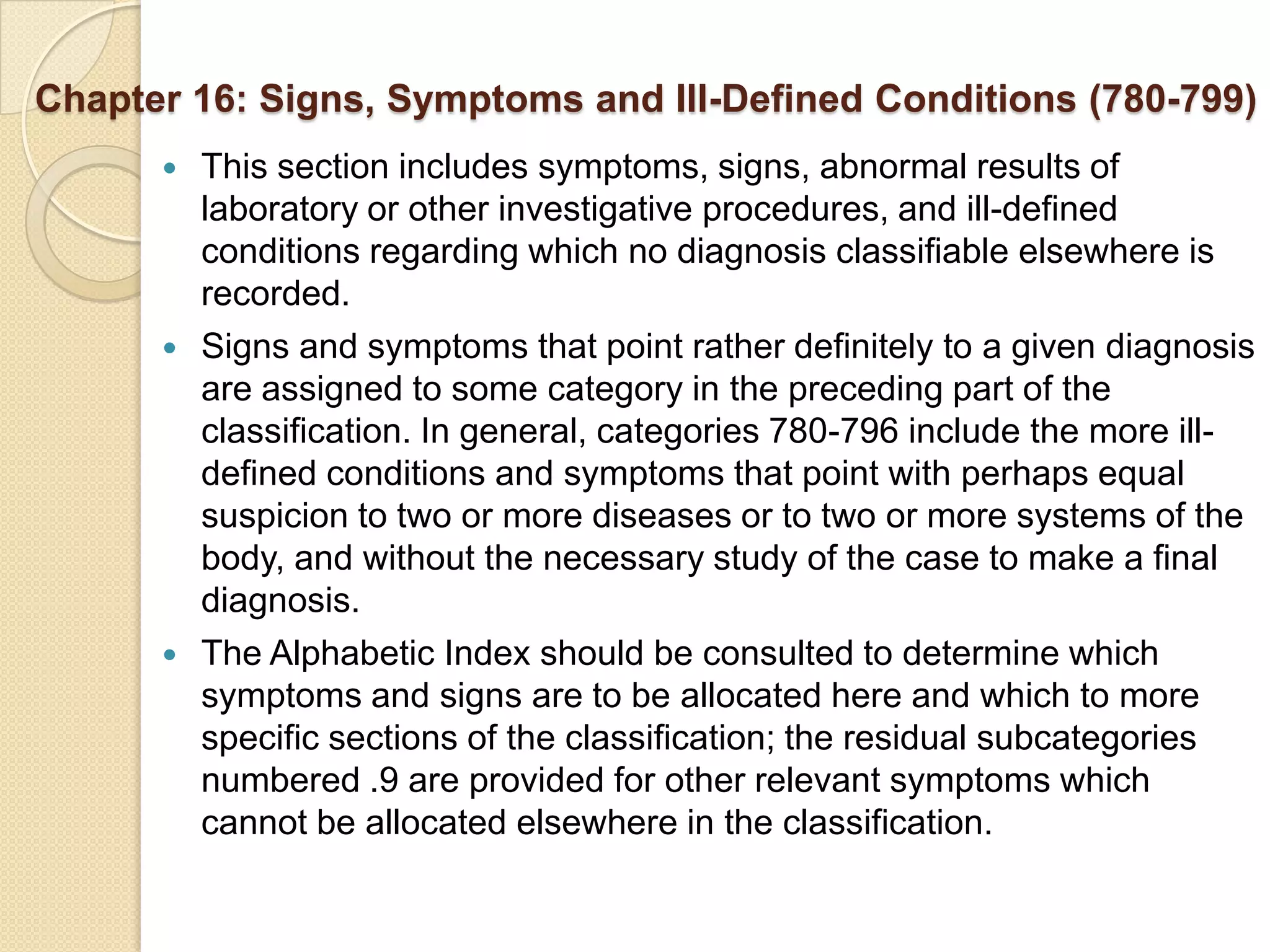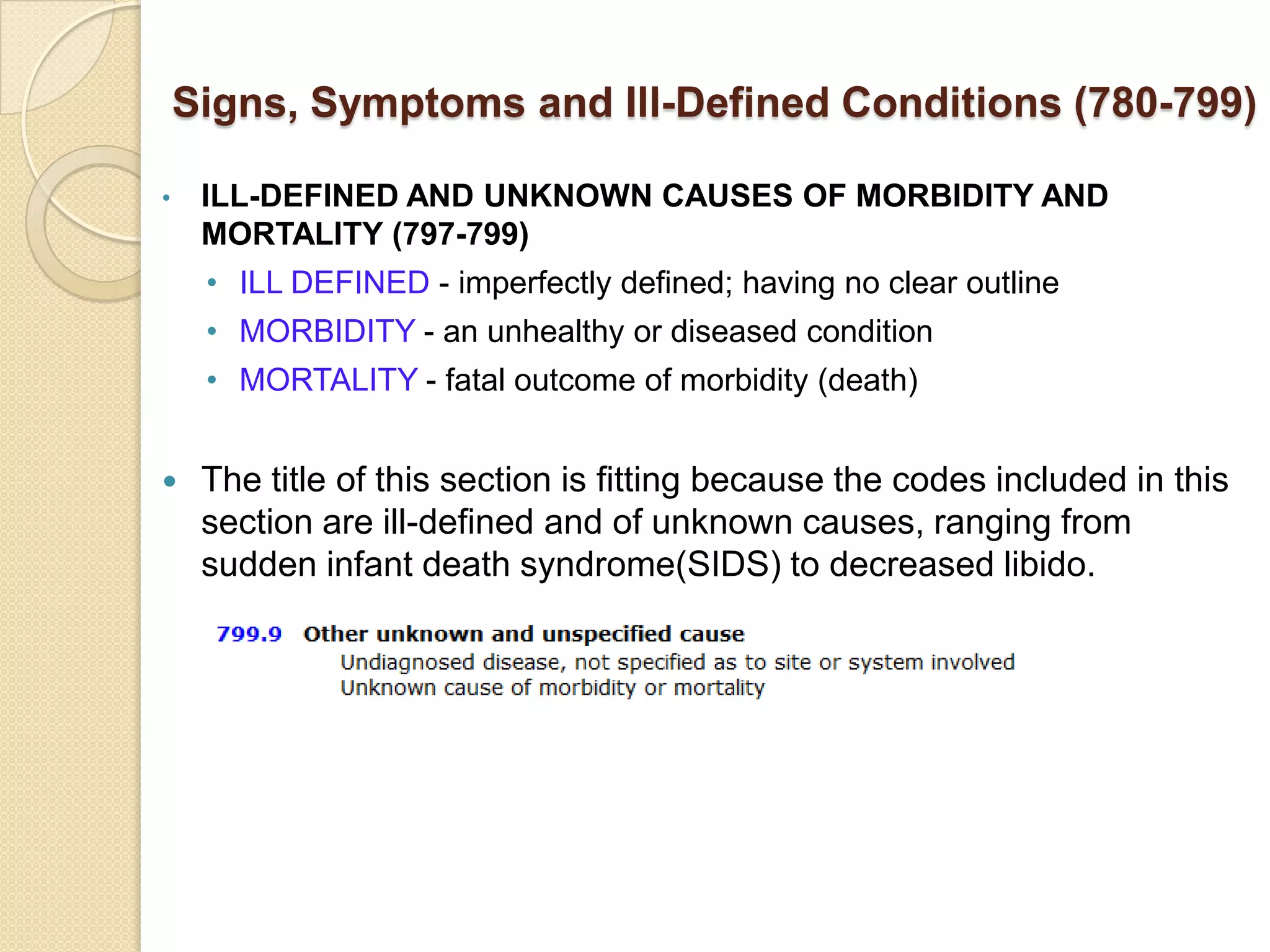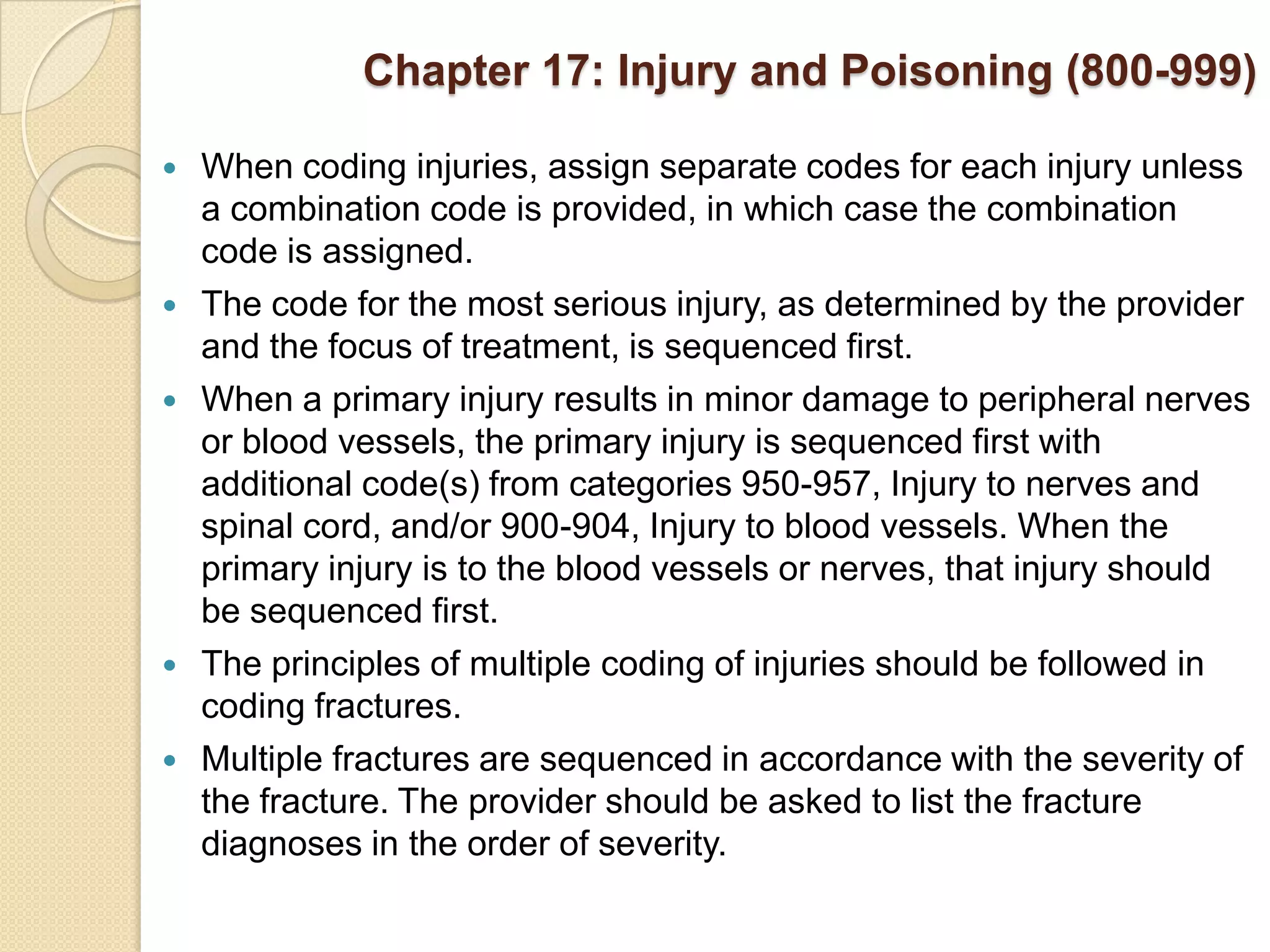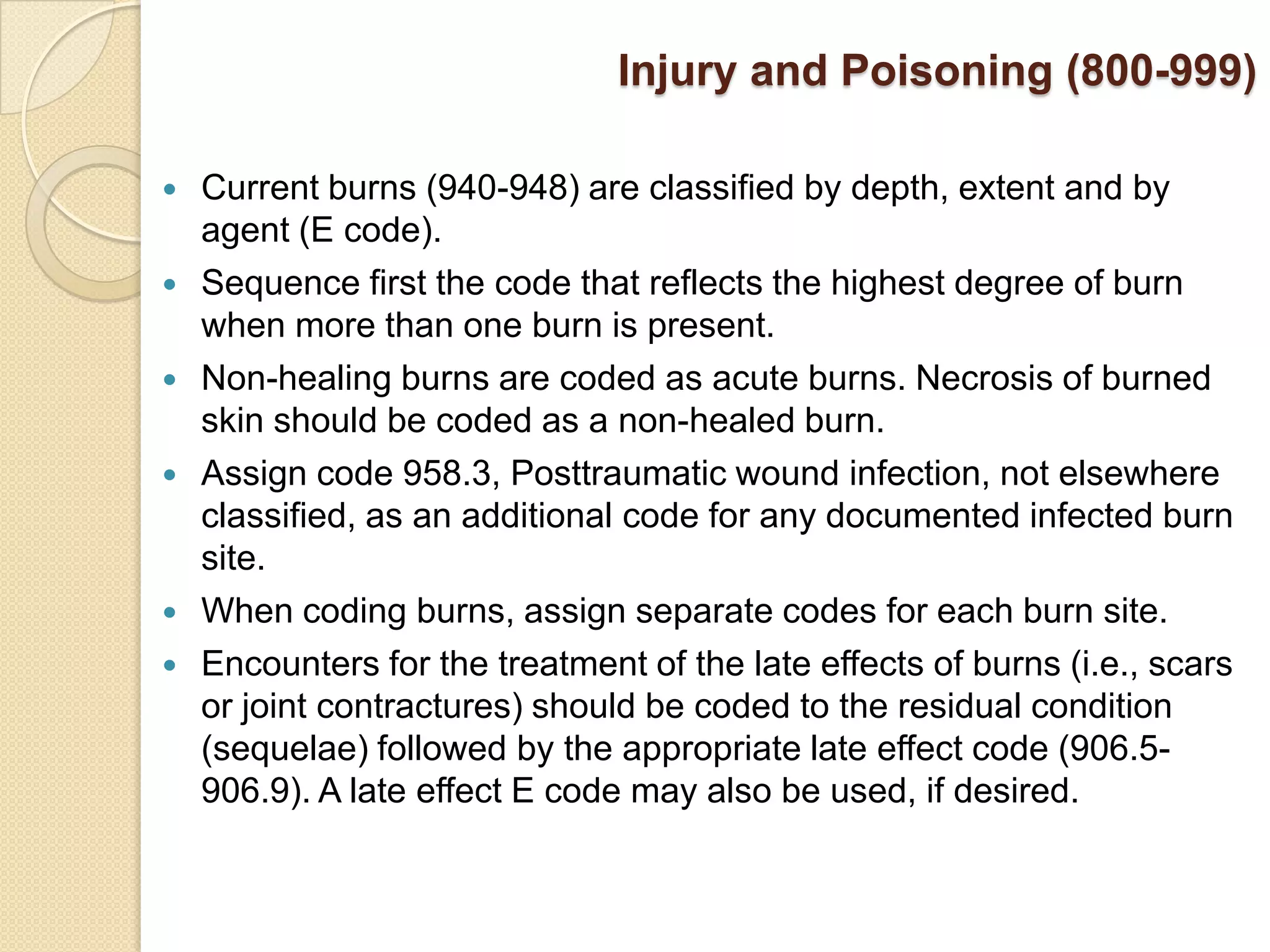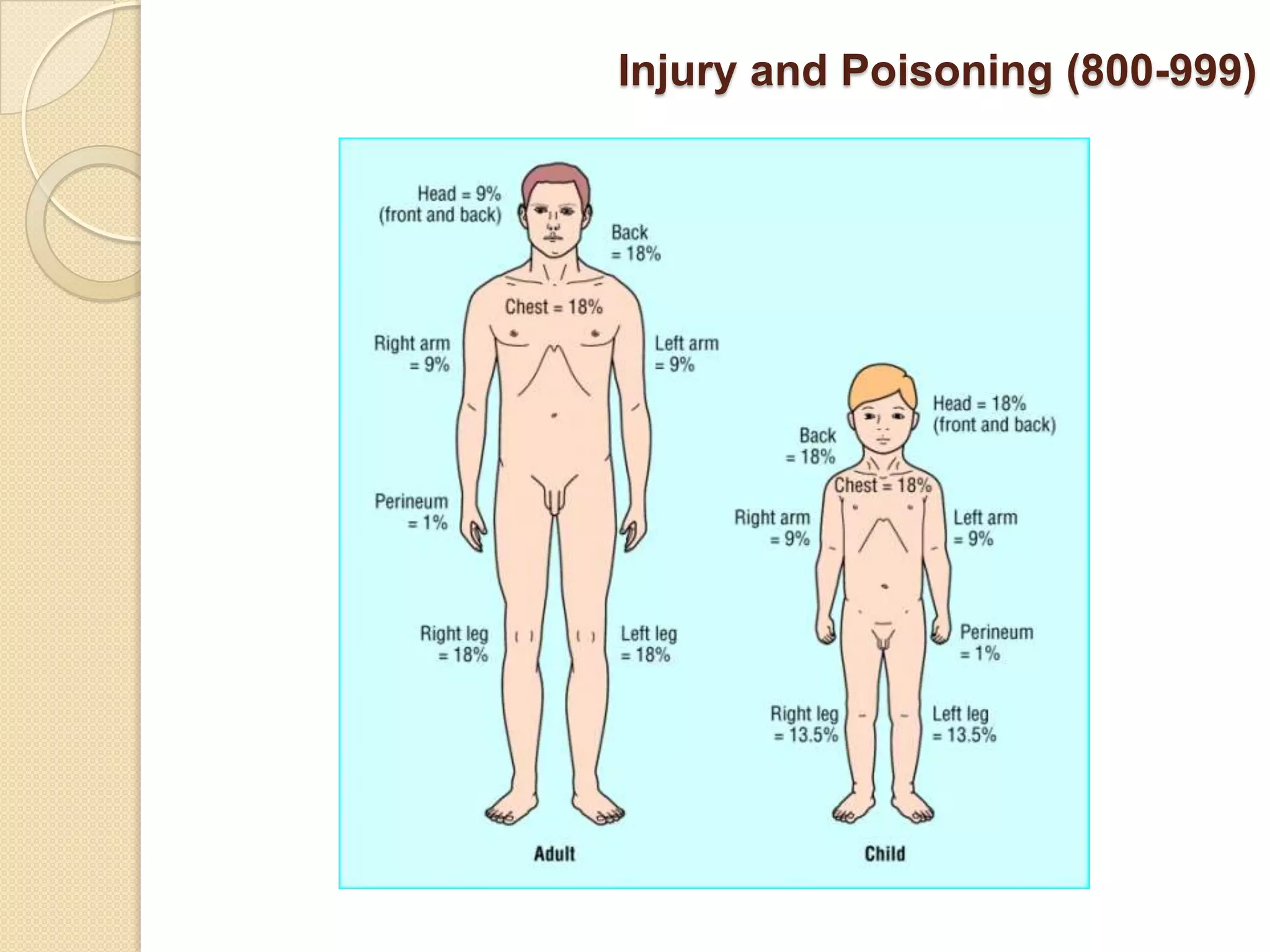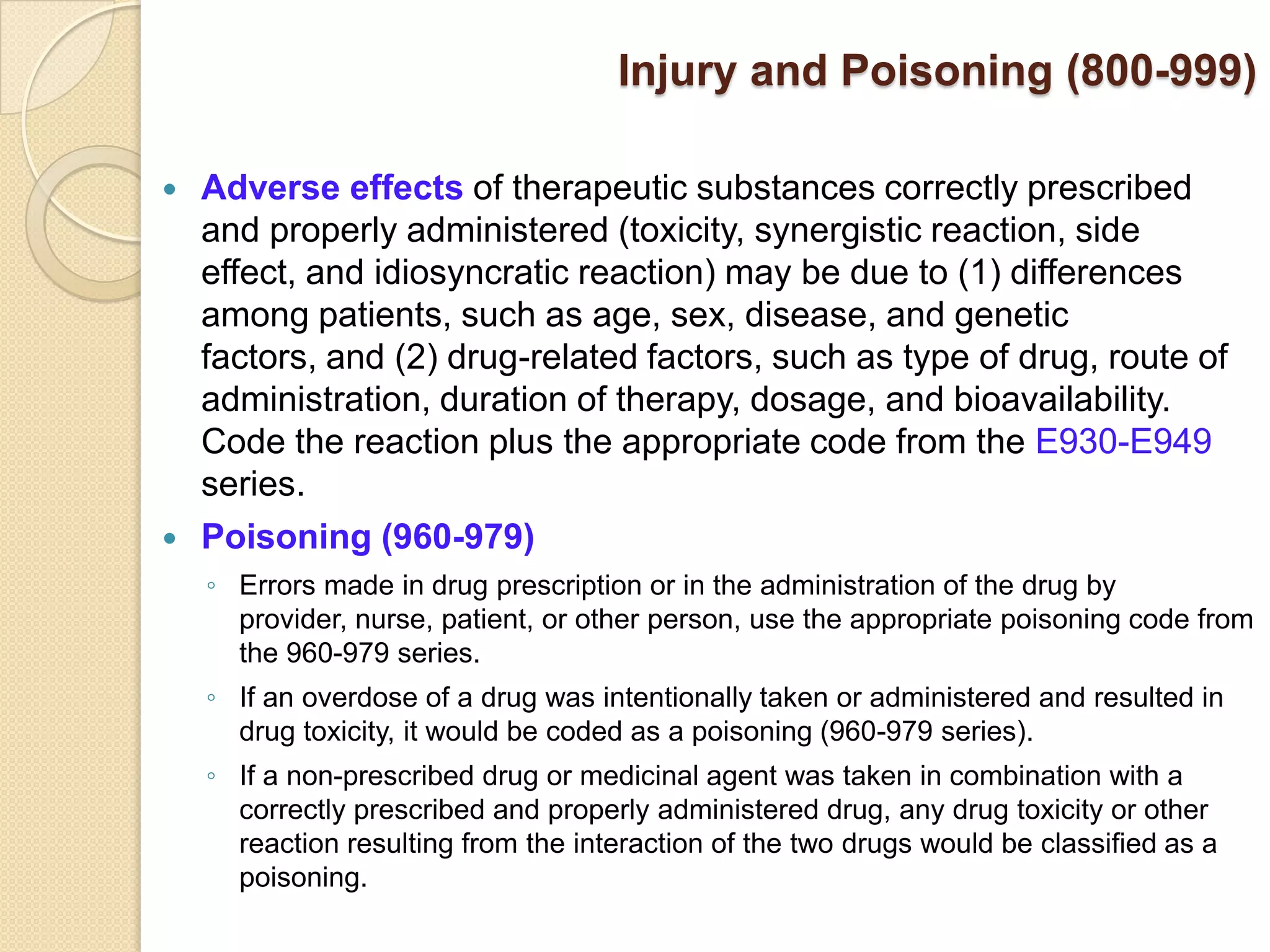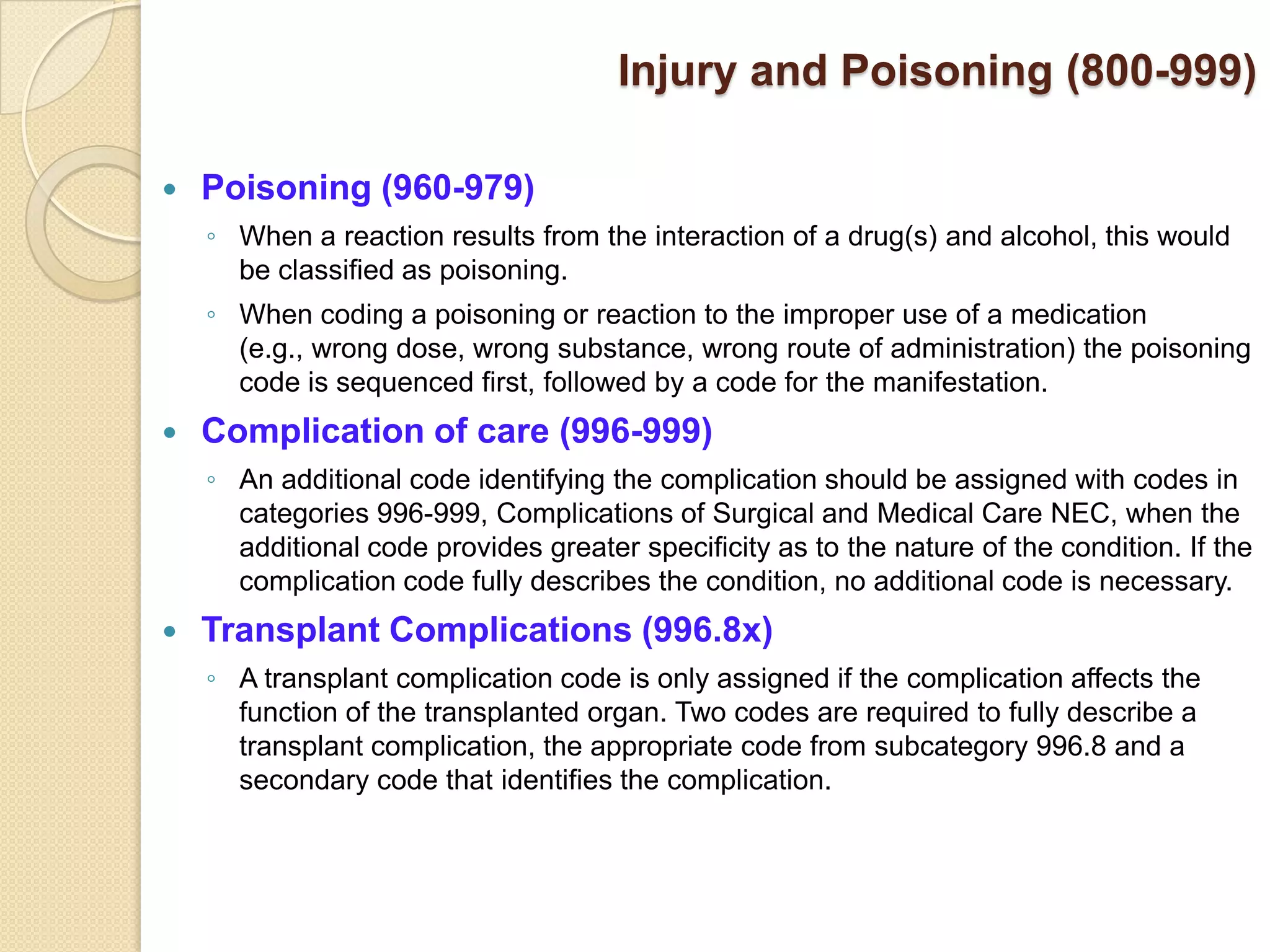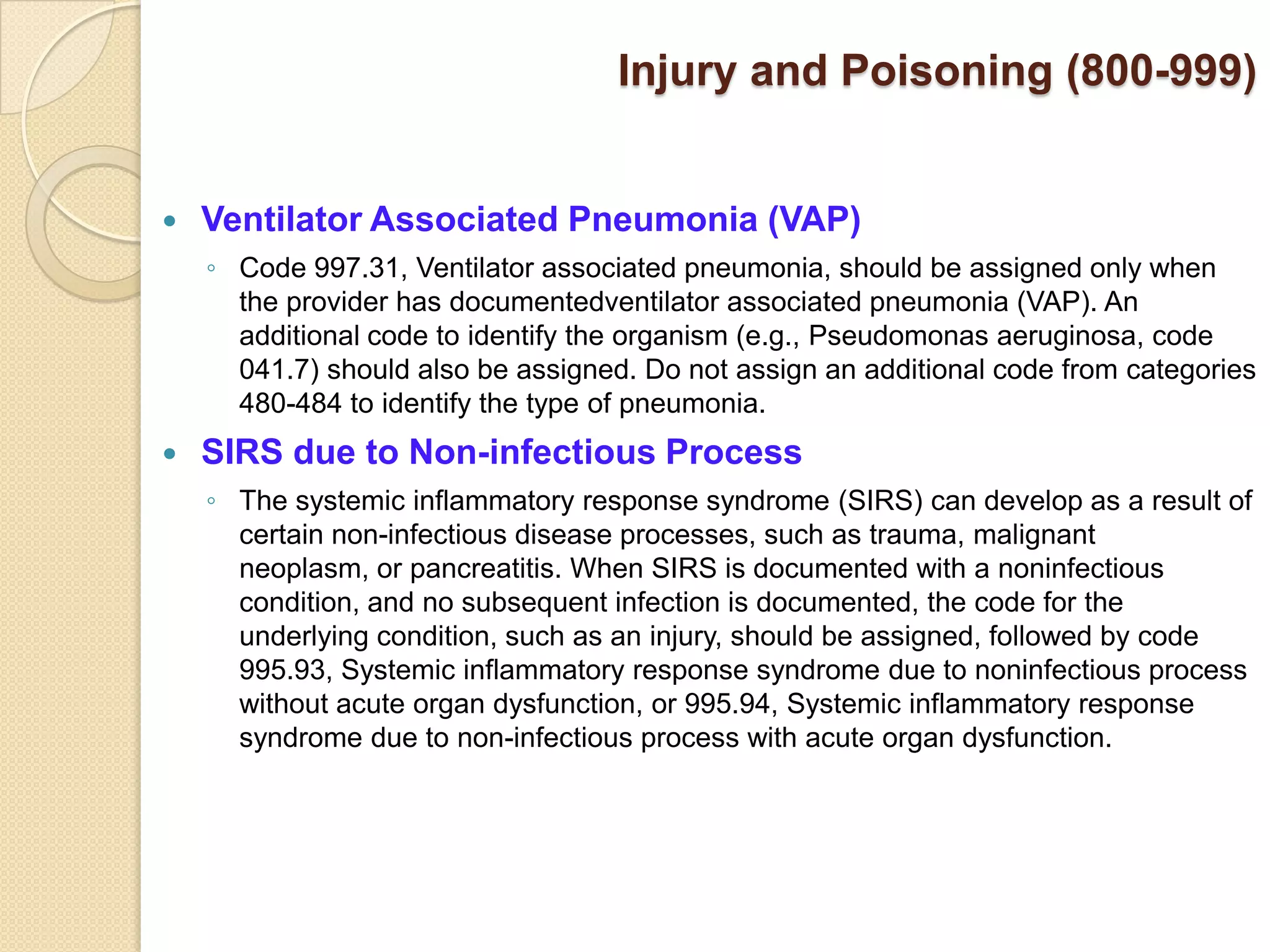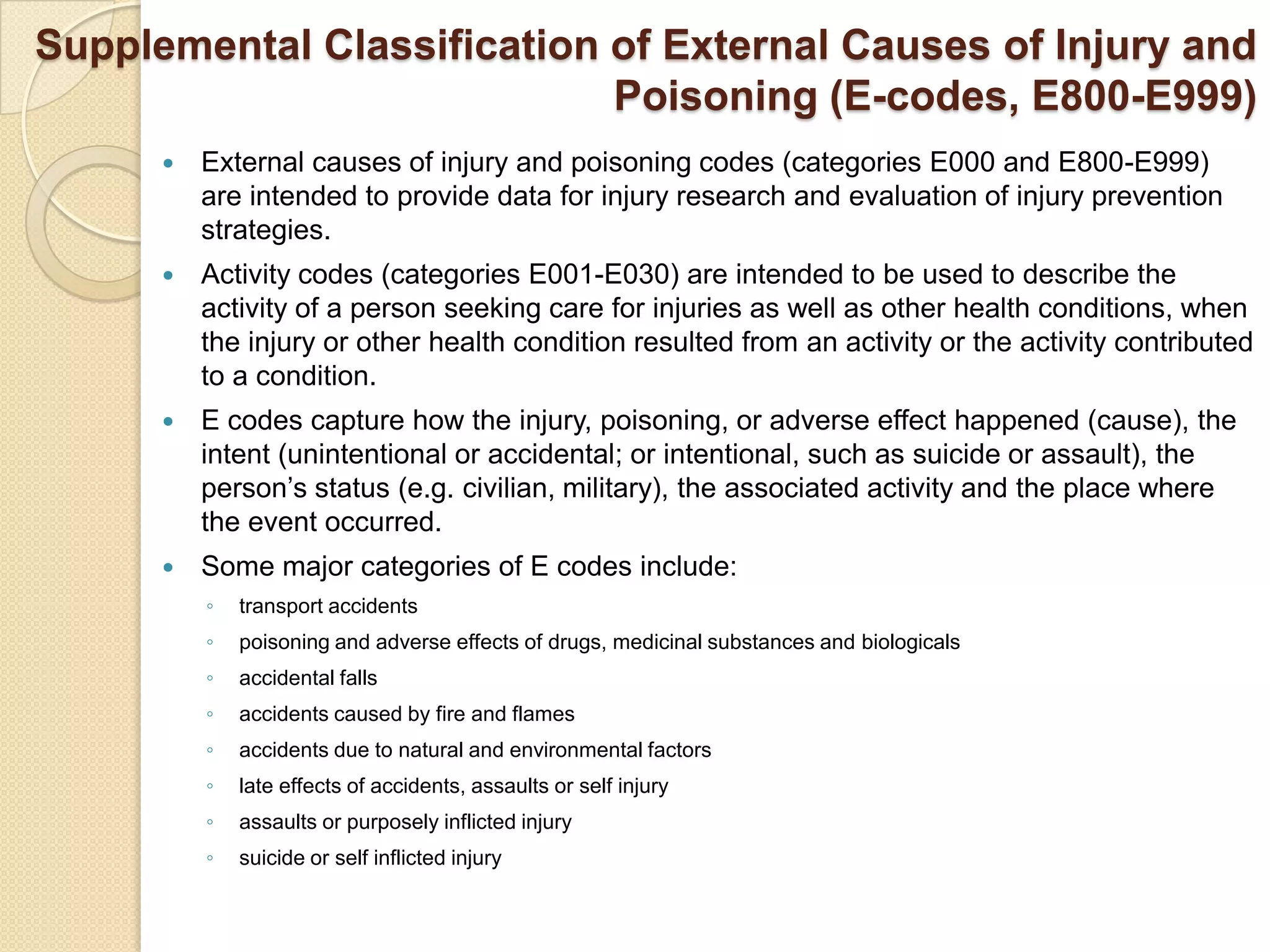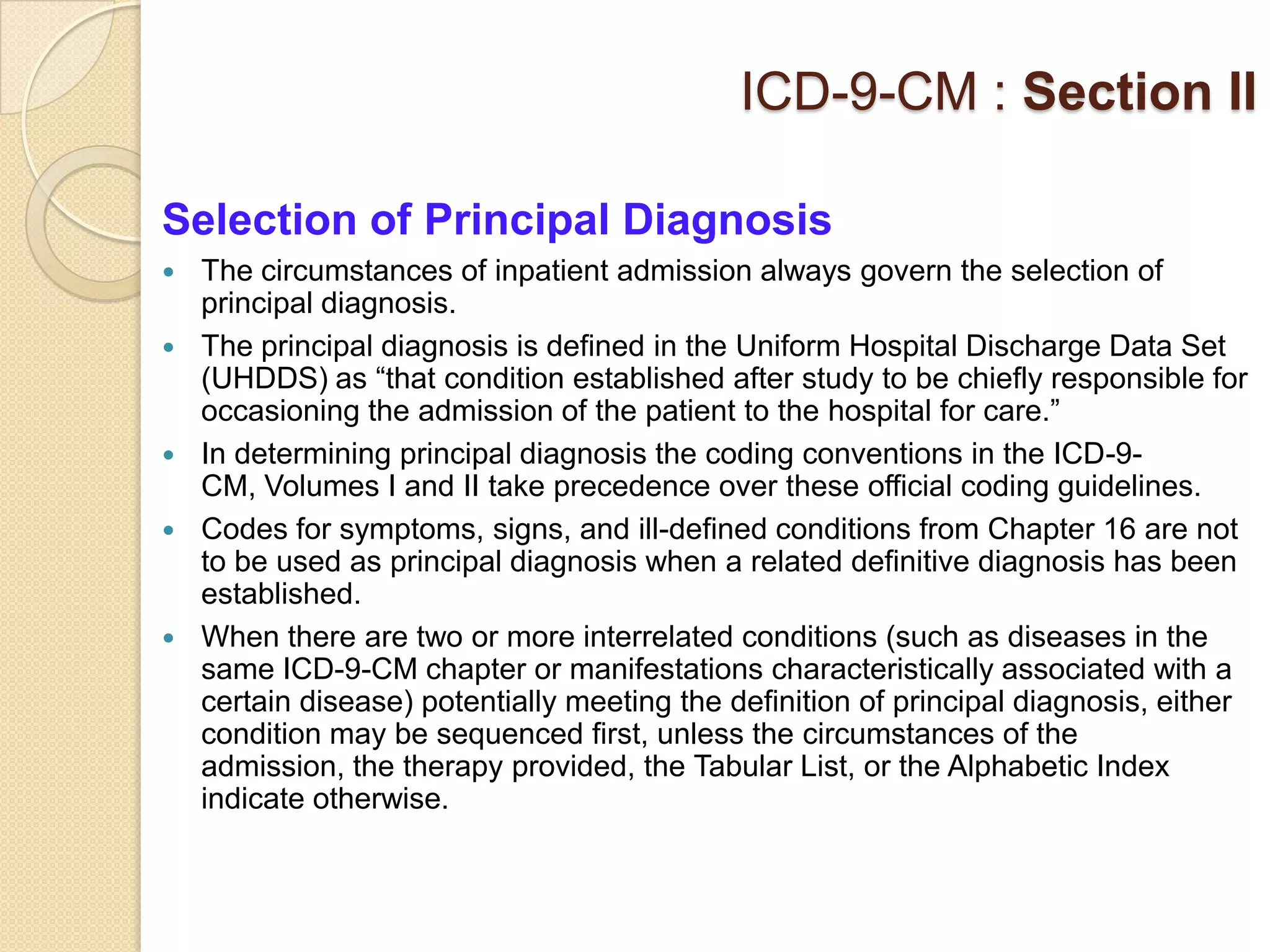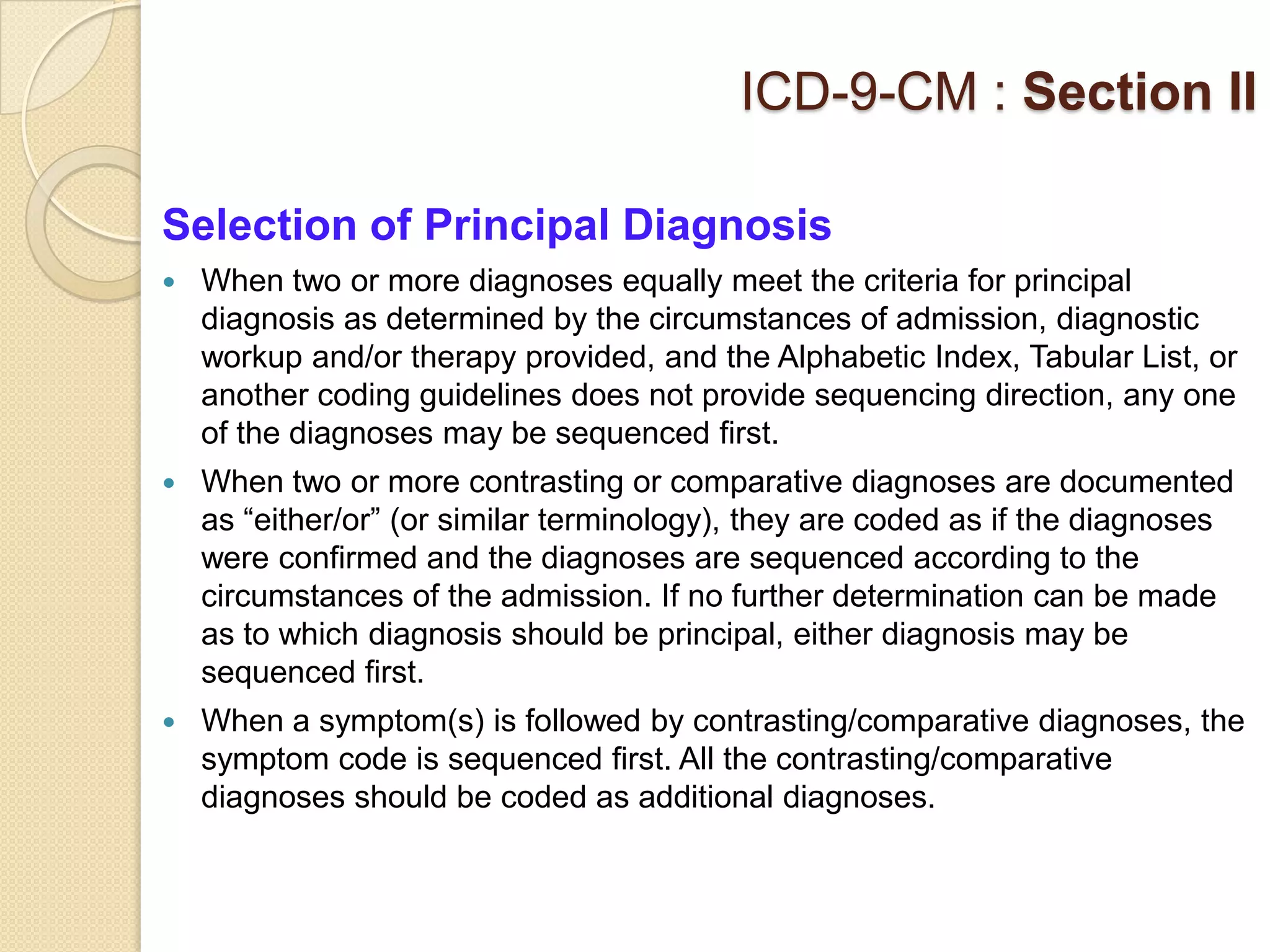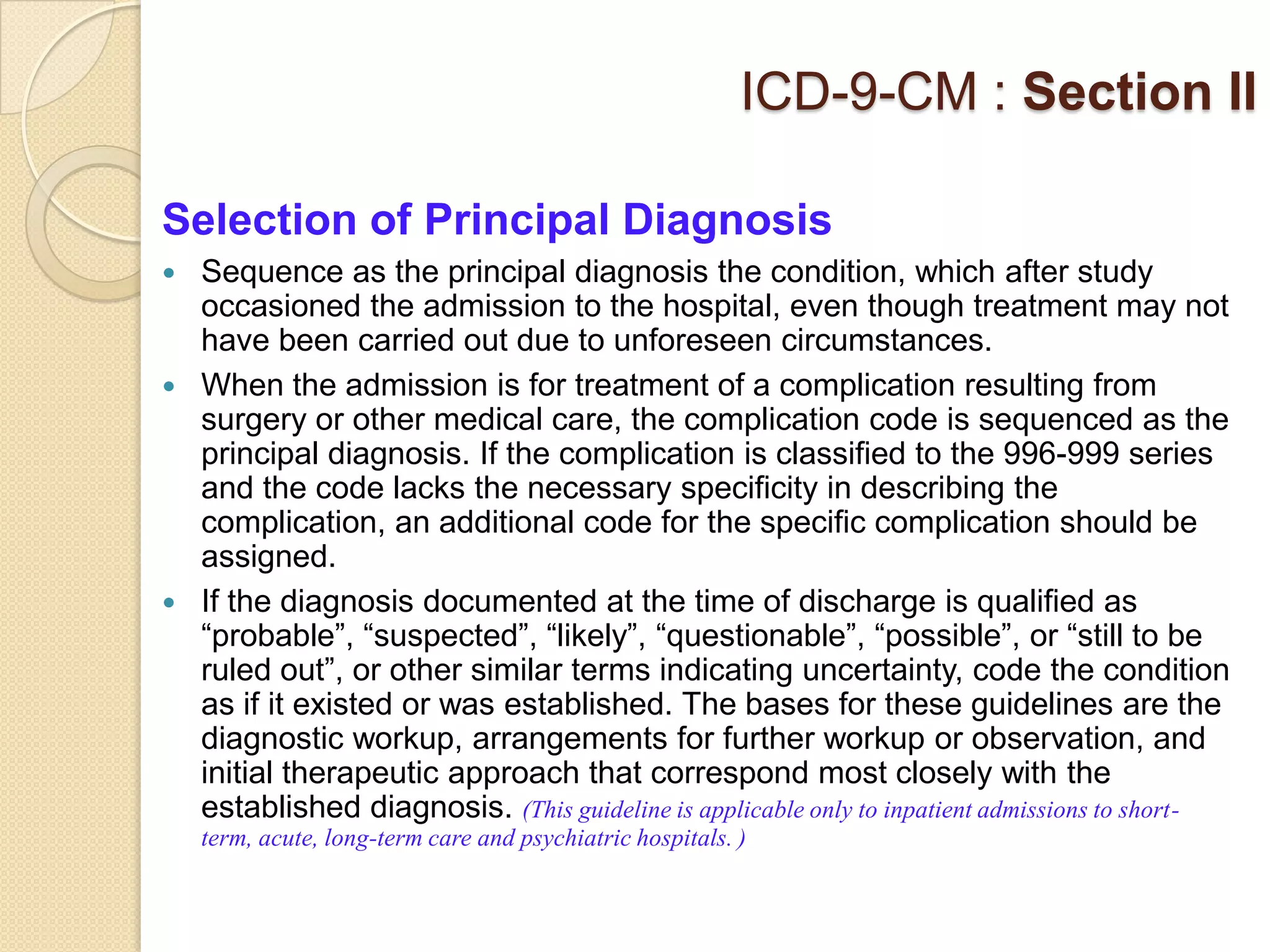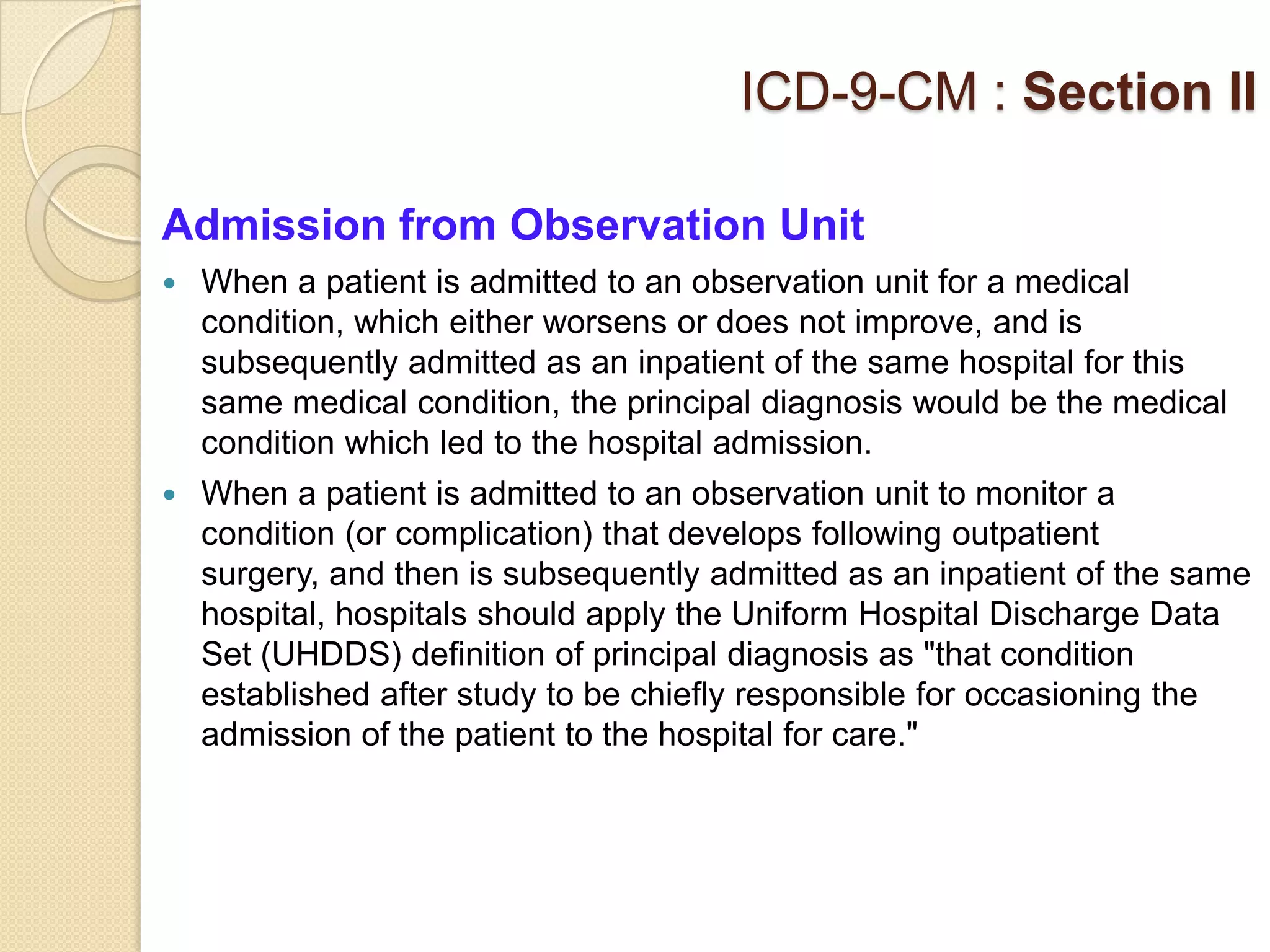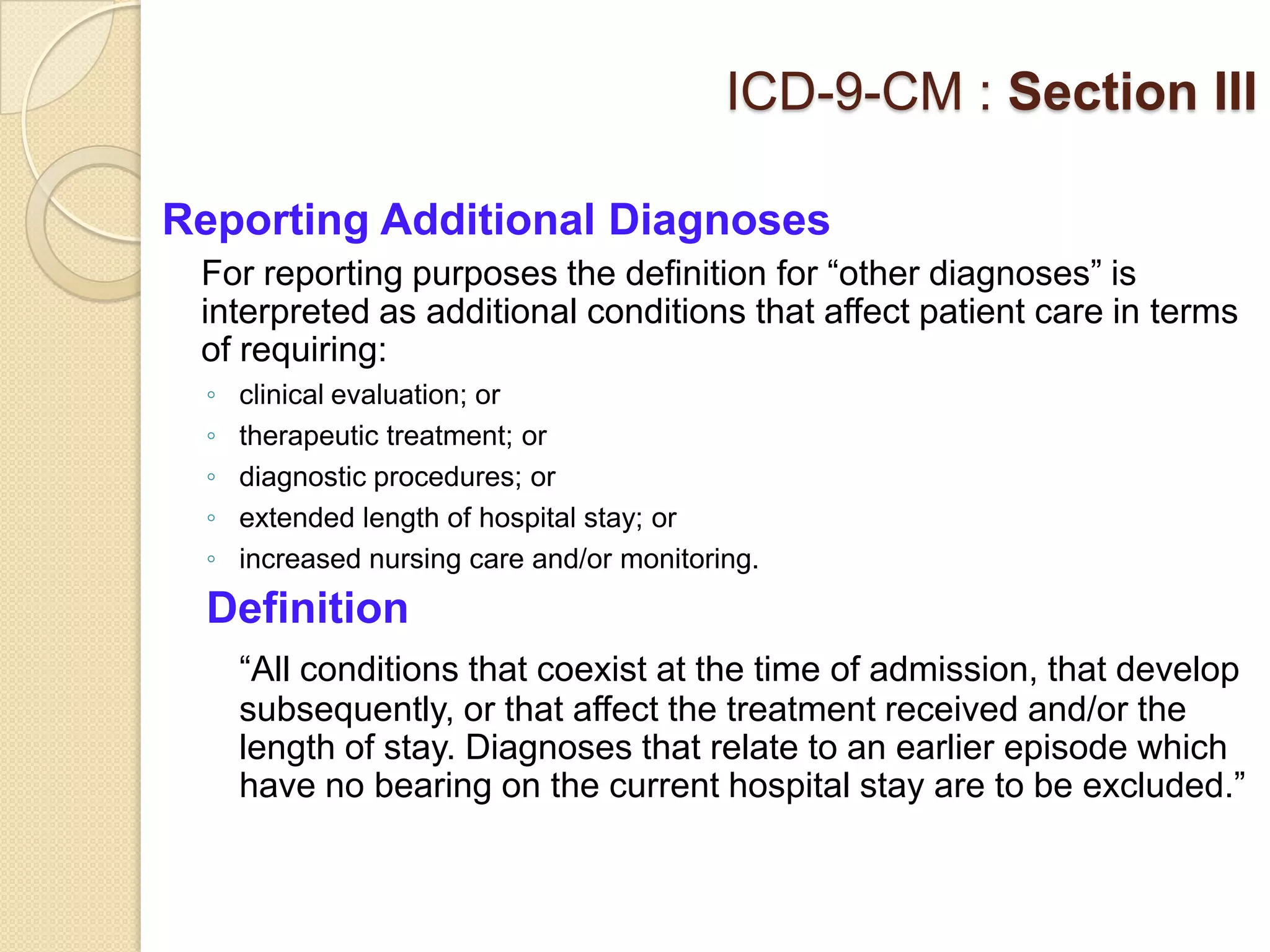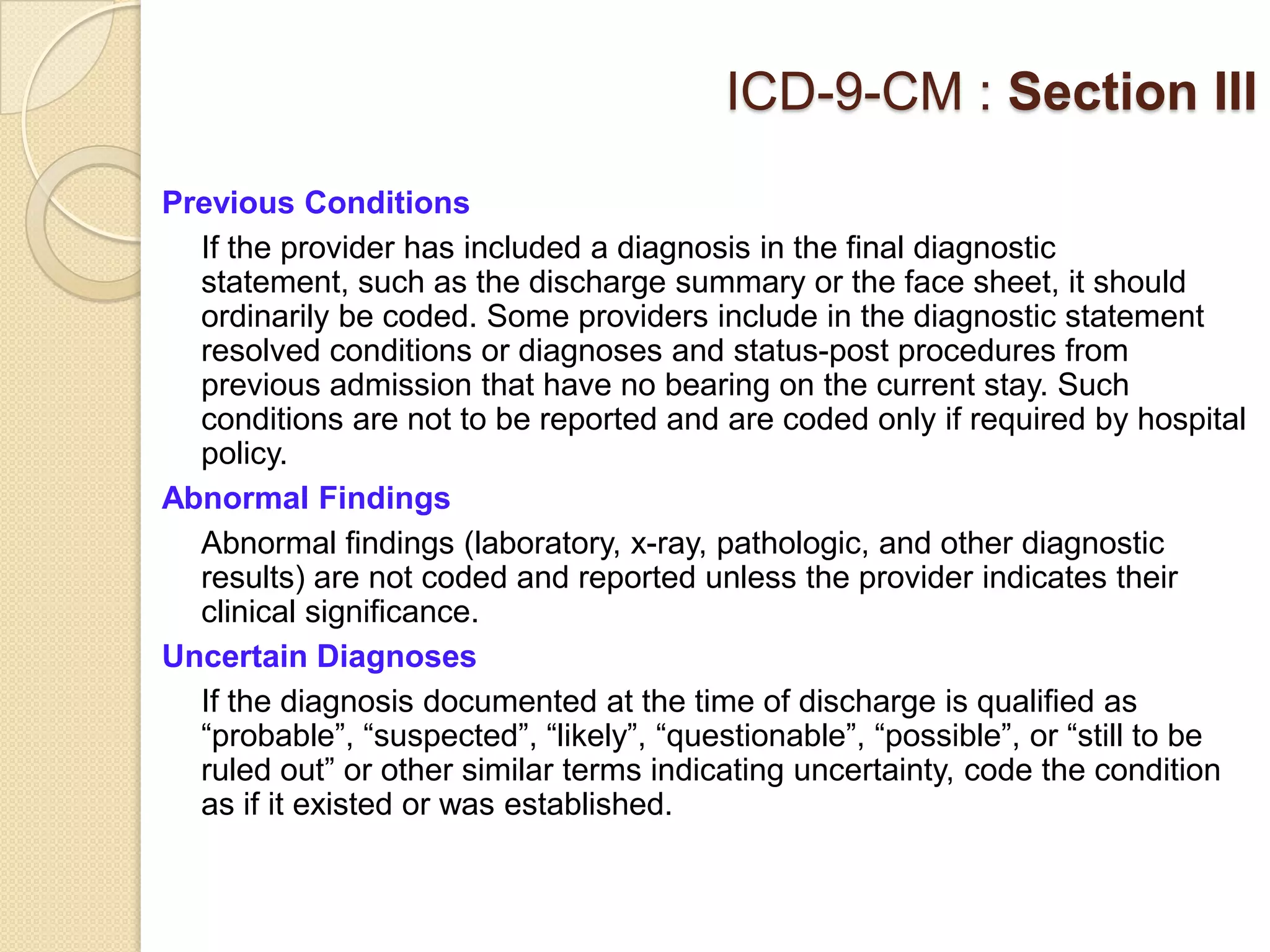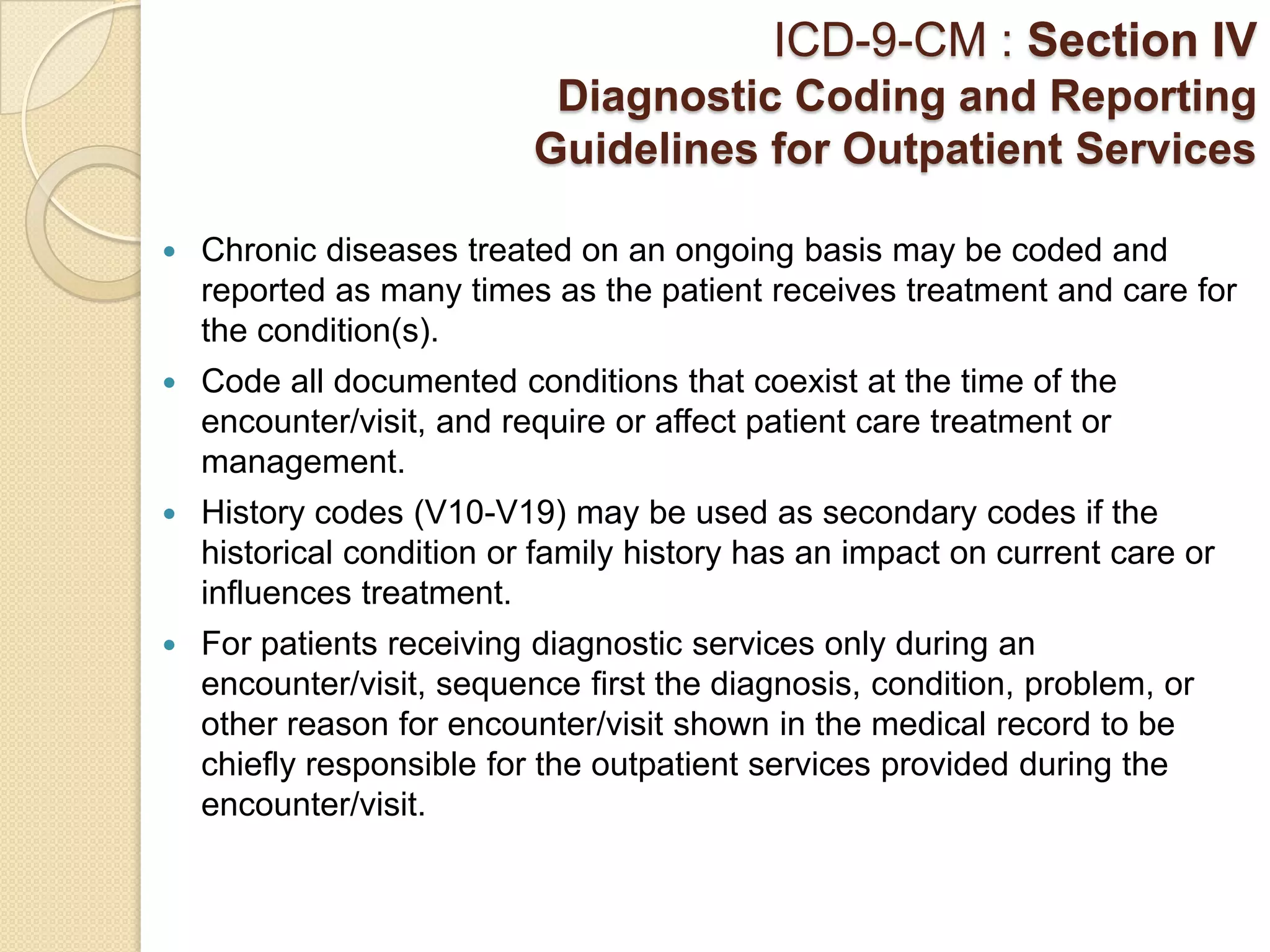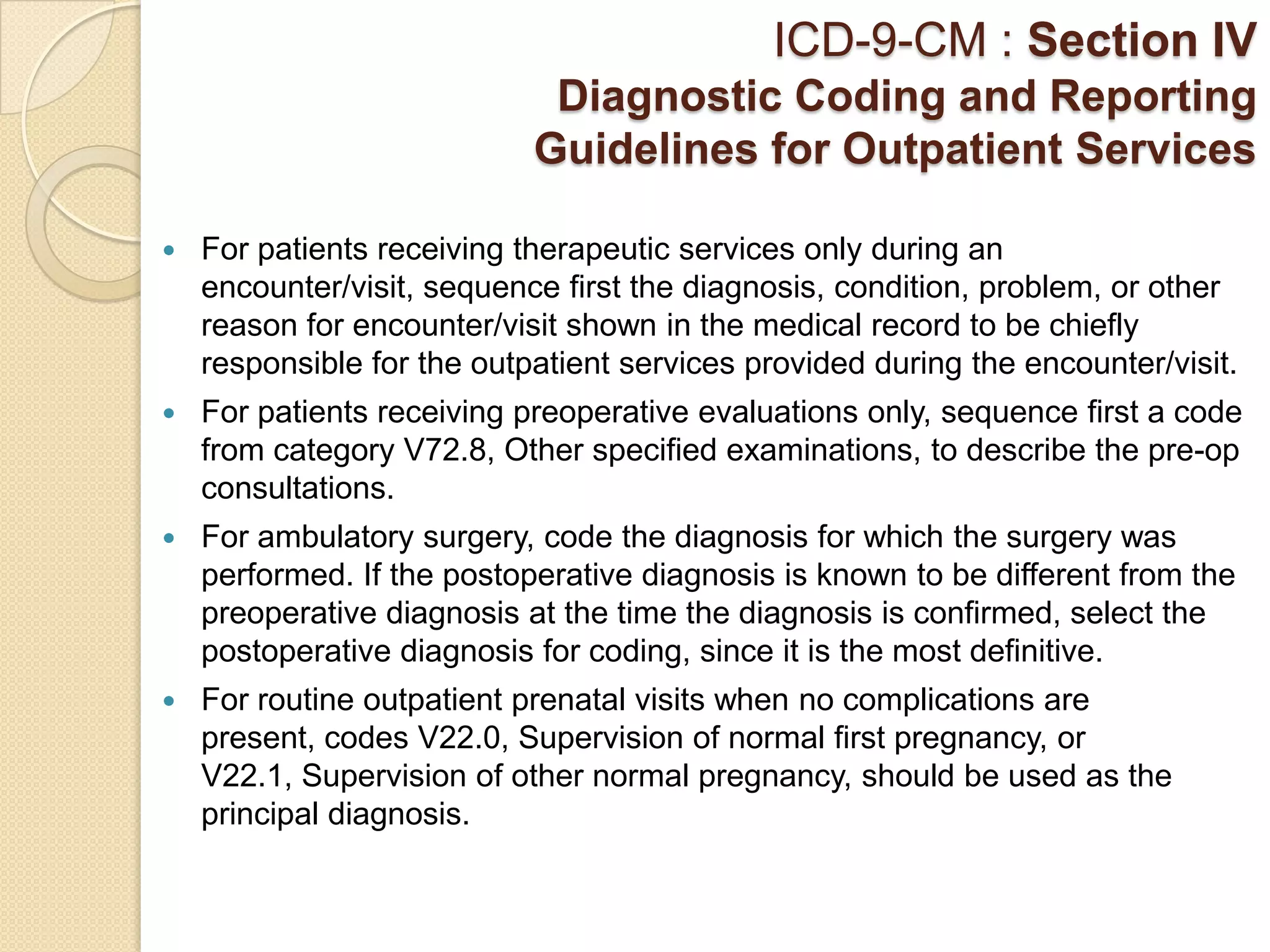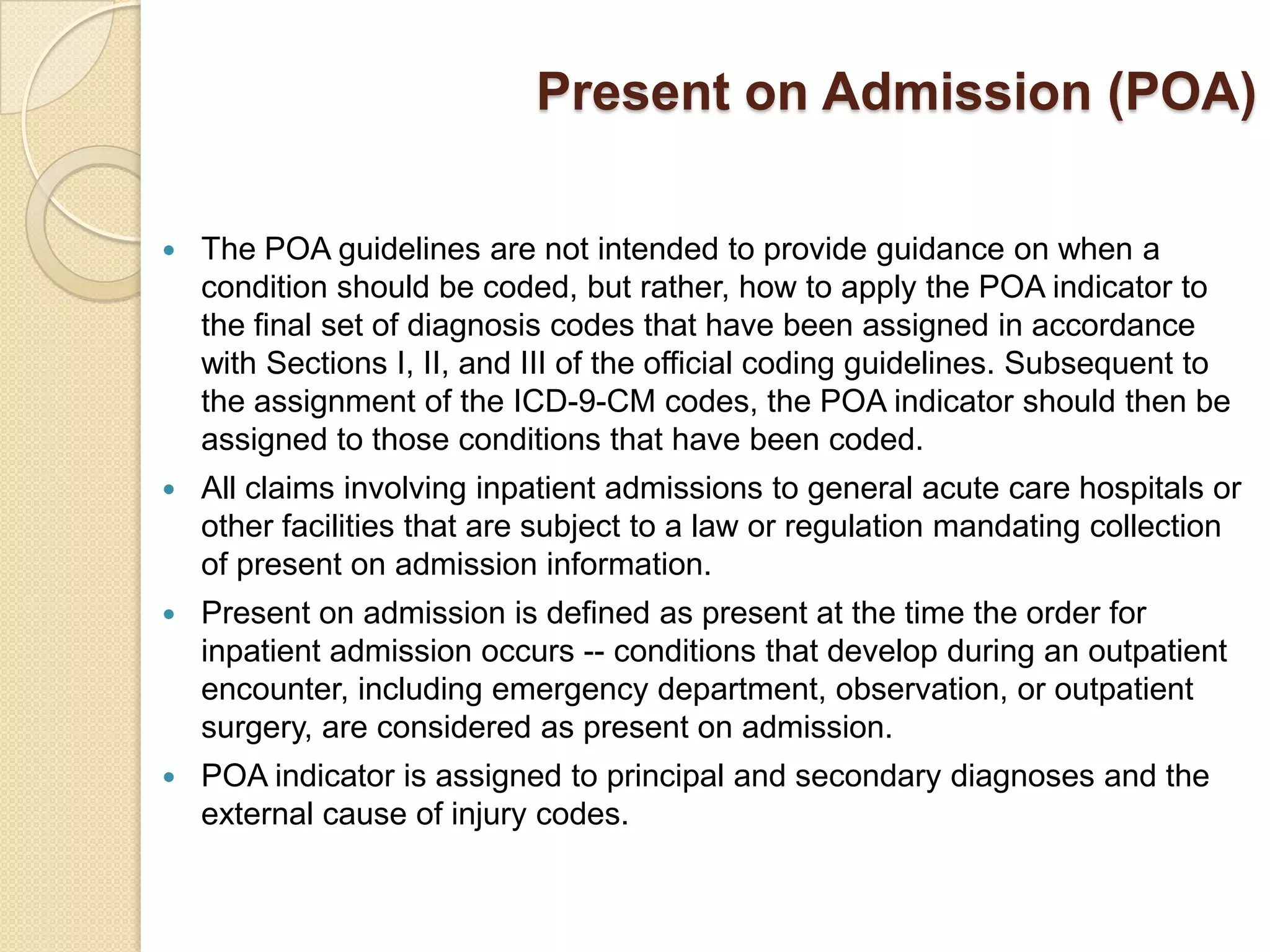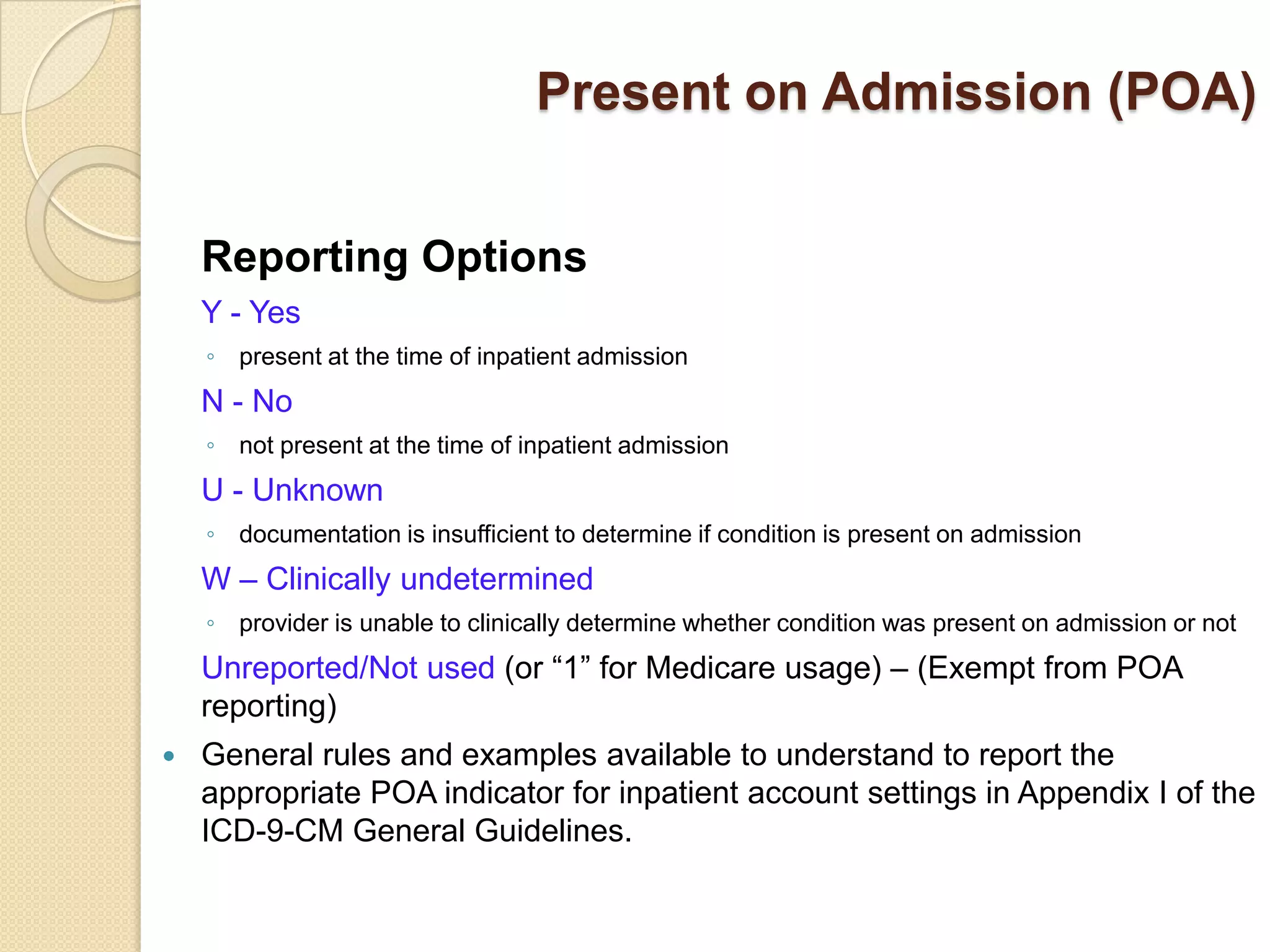Medical coding professionals assign codes to medical documentation of health care services provided to patients. The coder abstracts information from records of office visits, hospital stays, or ambulatory care and assigns codes according to classification systems like ICD-9-CM. Codes are used to bill and get paid for services. Coding involves both outpatient care like office visits and same-day procedures, as well as more complex inpatient care for hospital stays over 24 hours for conditions such as surgery or medical issues. Coders must understand multiple code sets and guidelines to accurately classify the services delivered to patients.
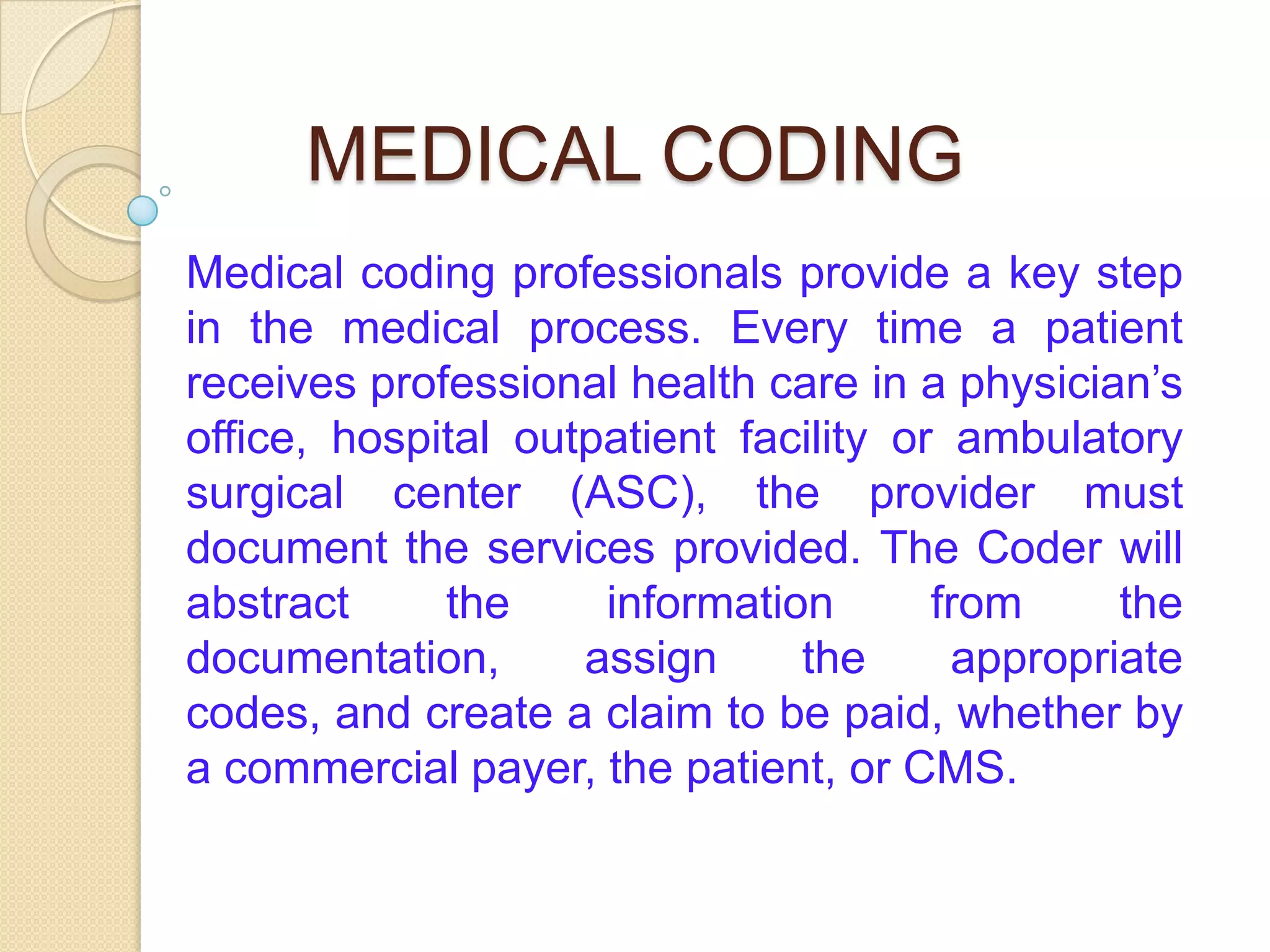
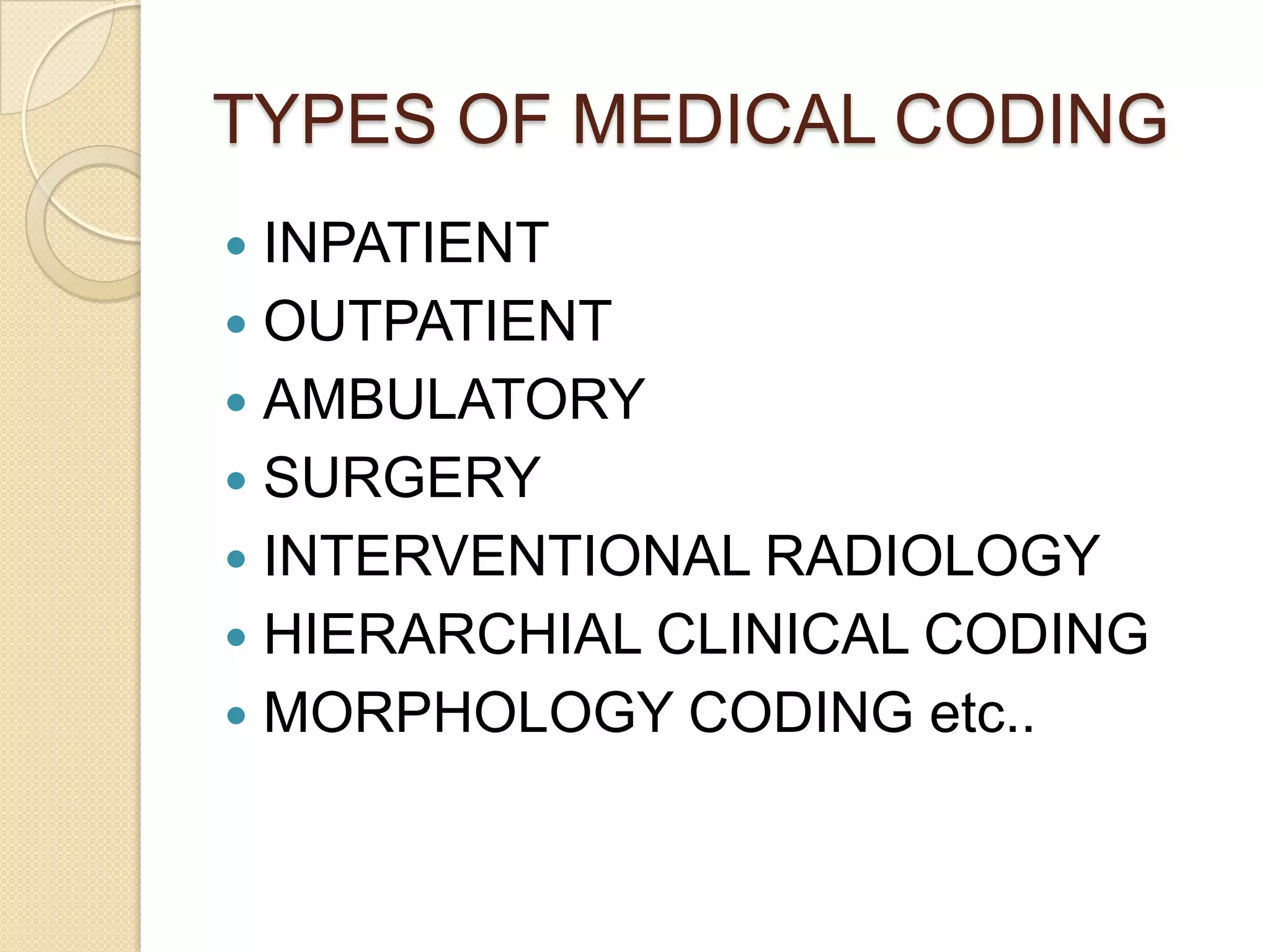
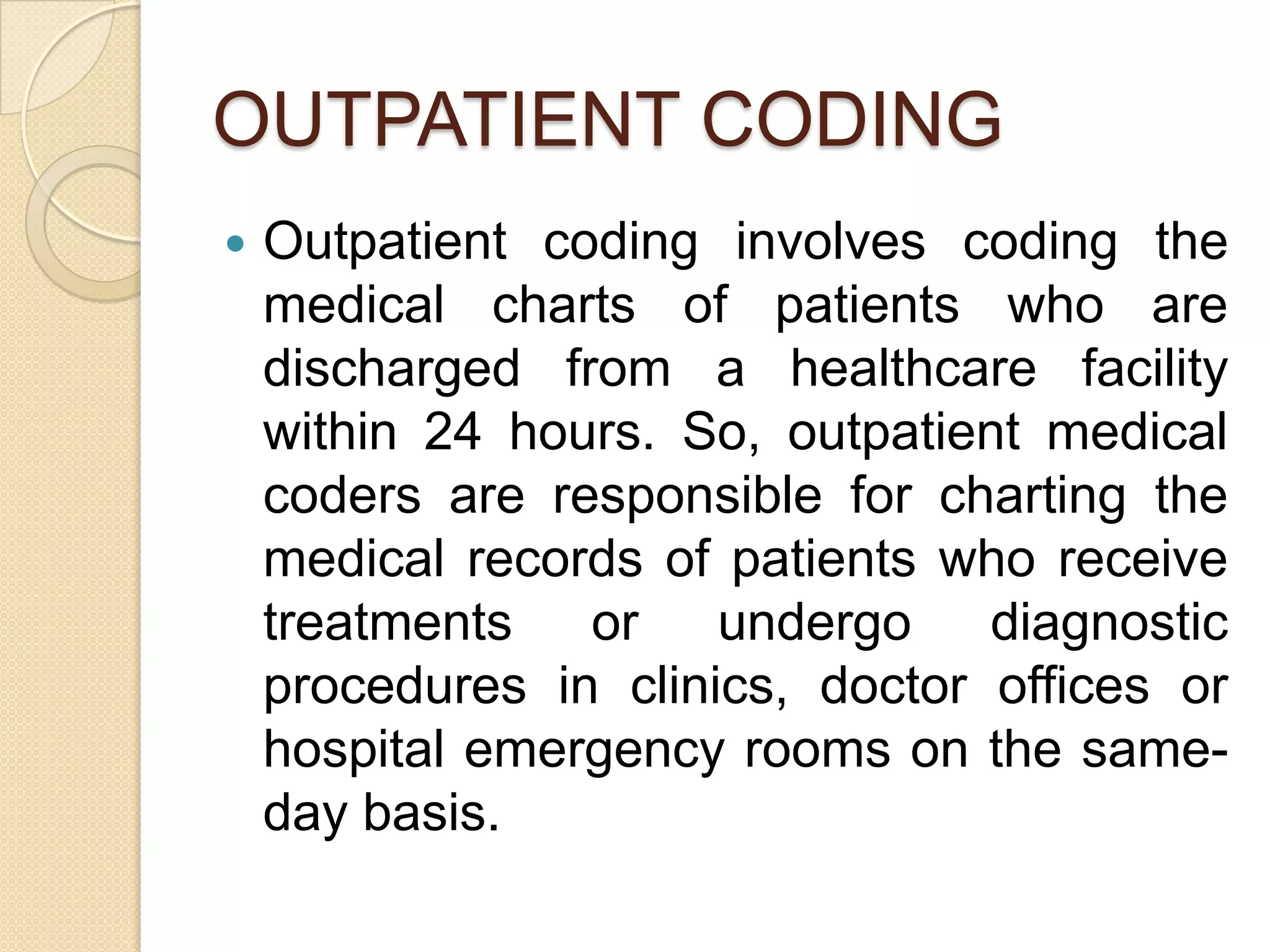

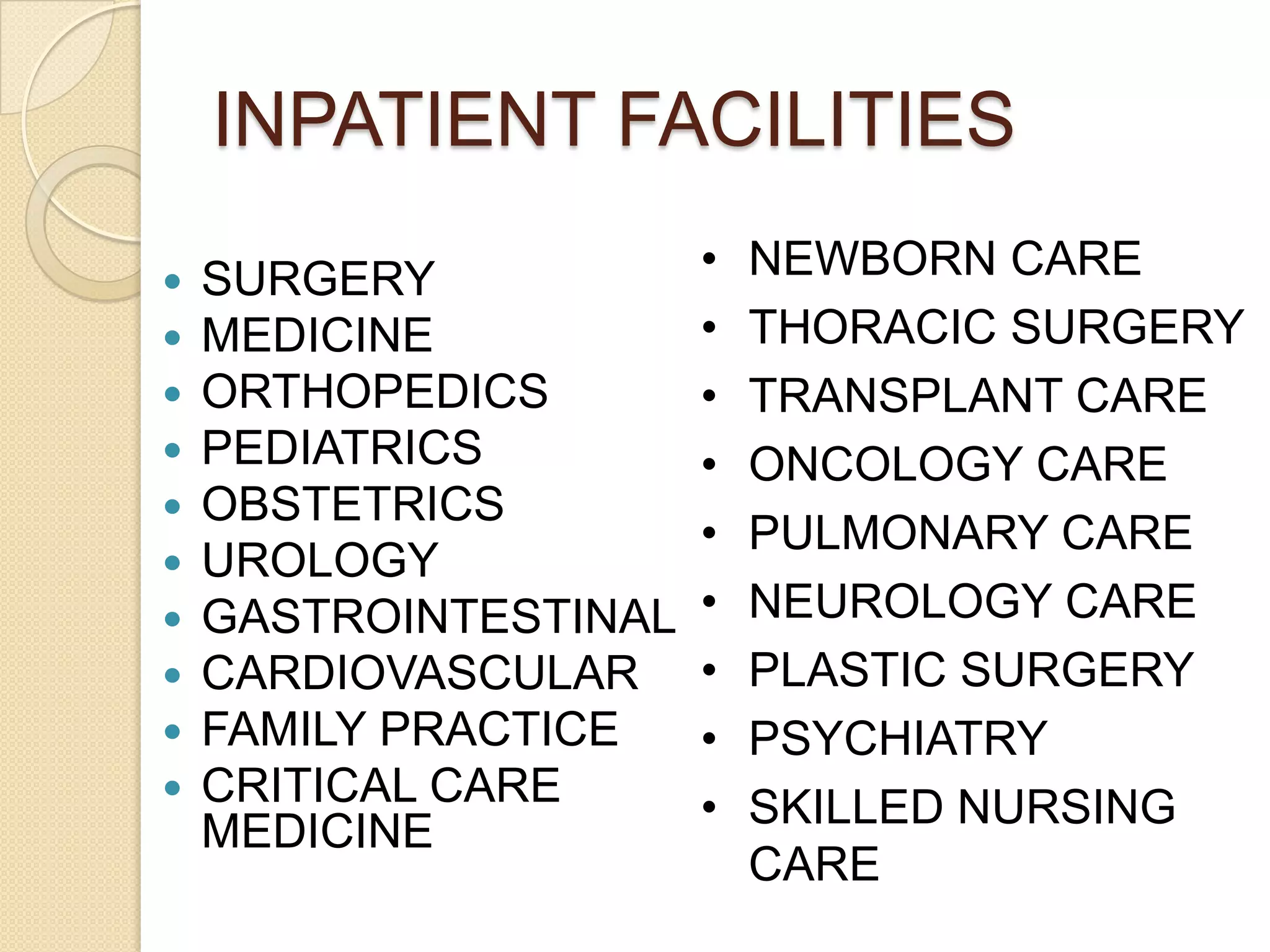
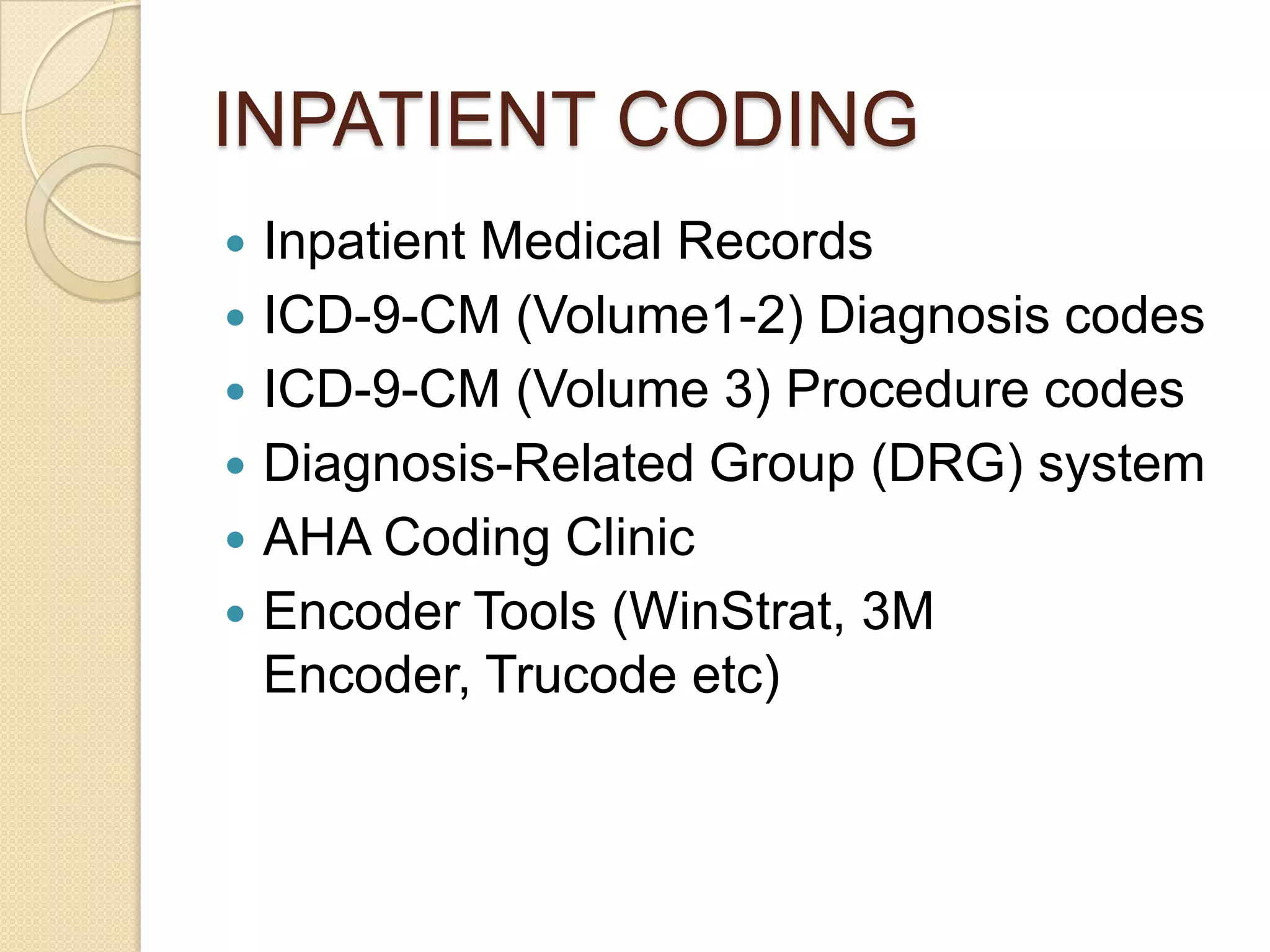
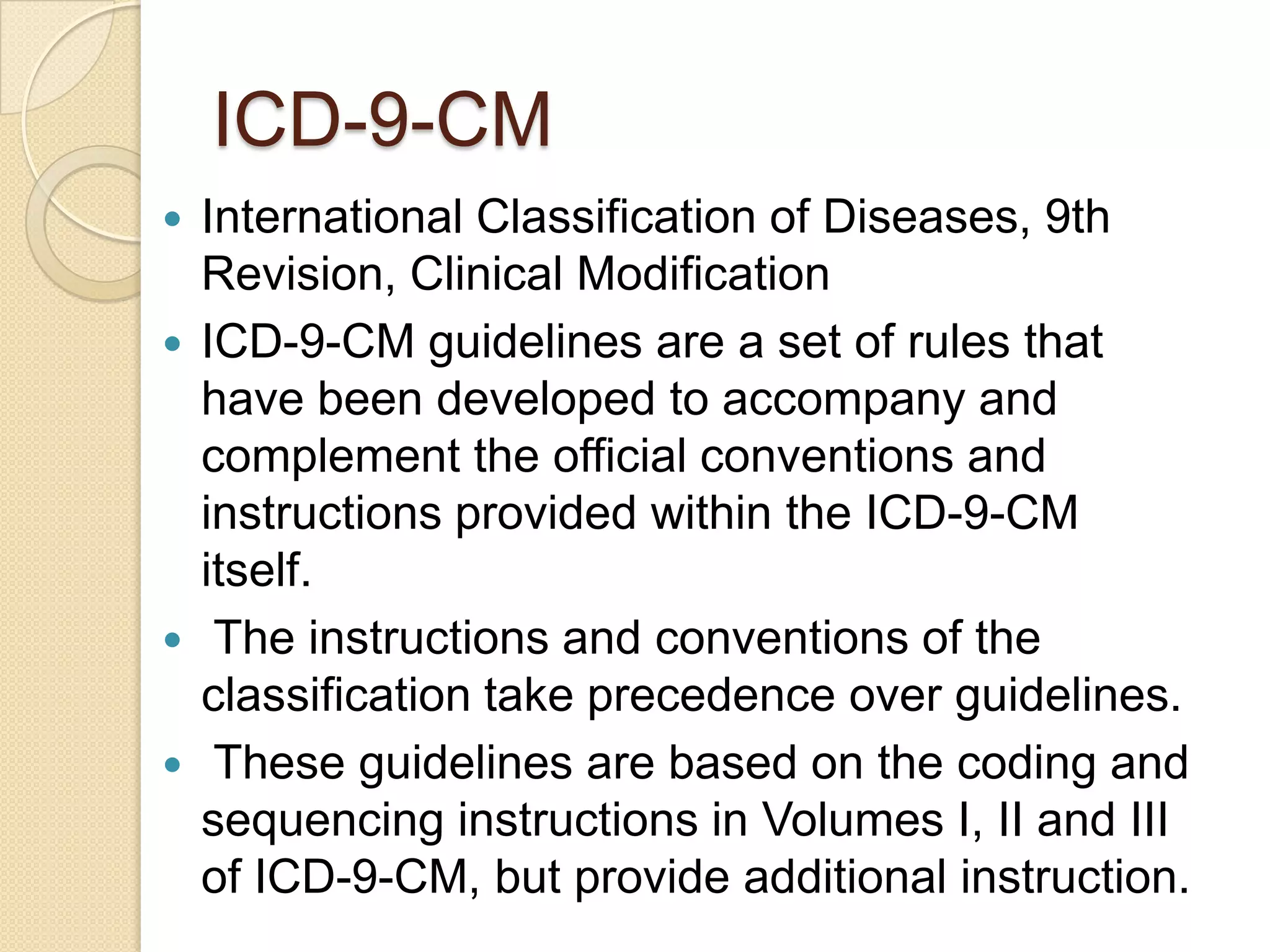
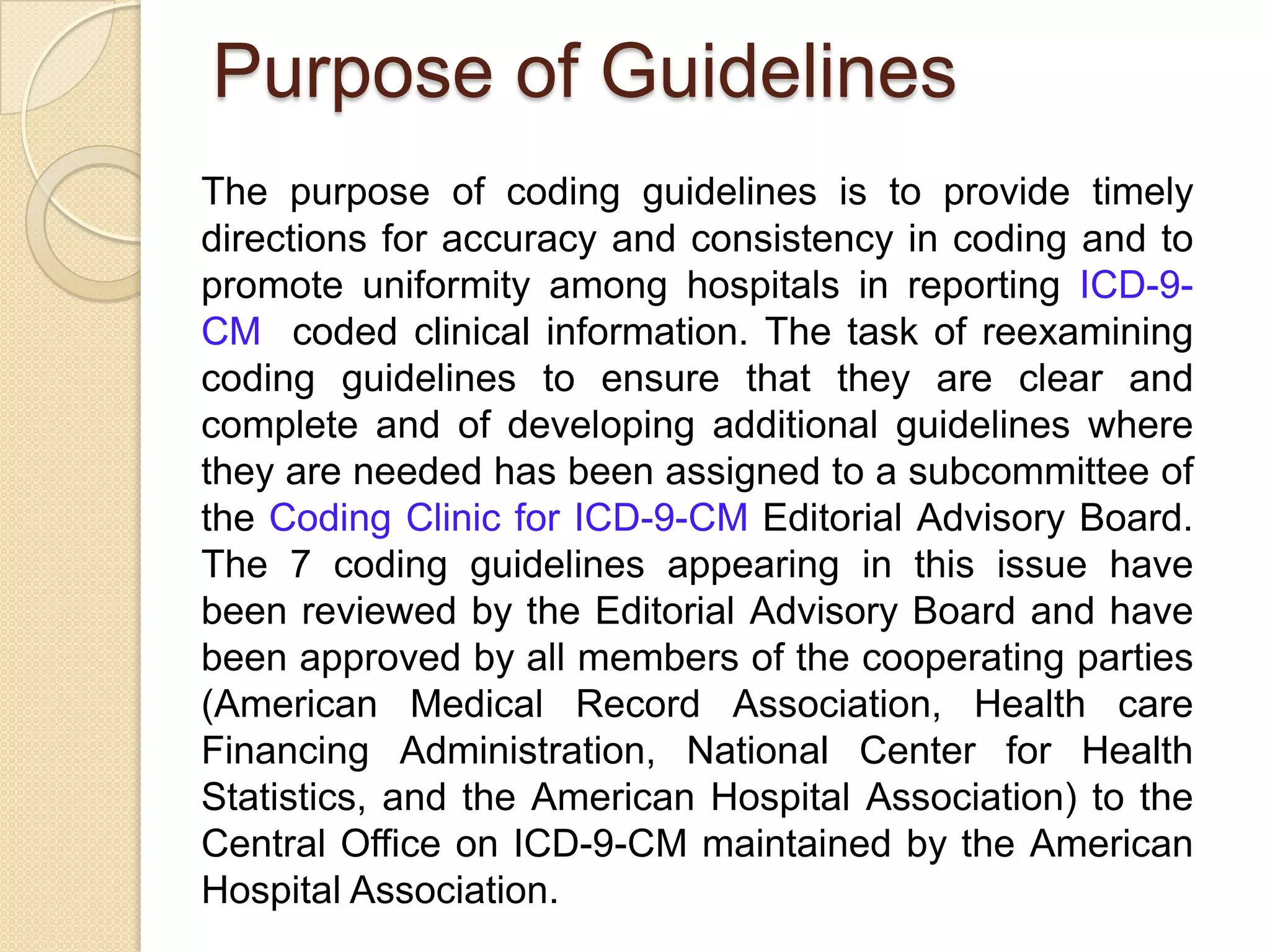
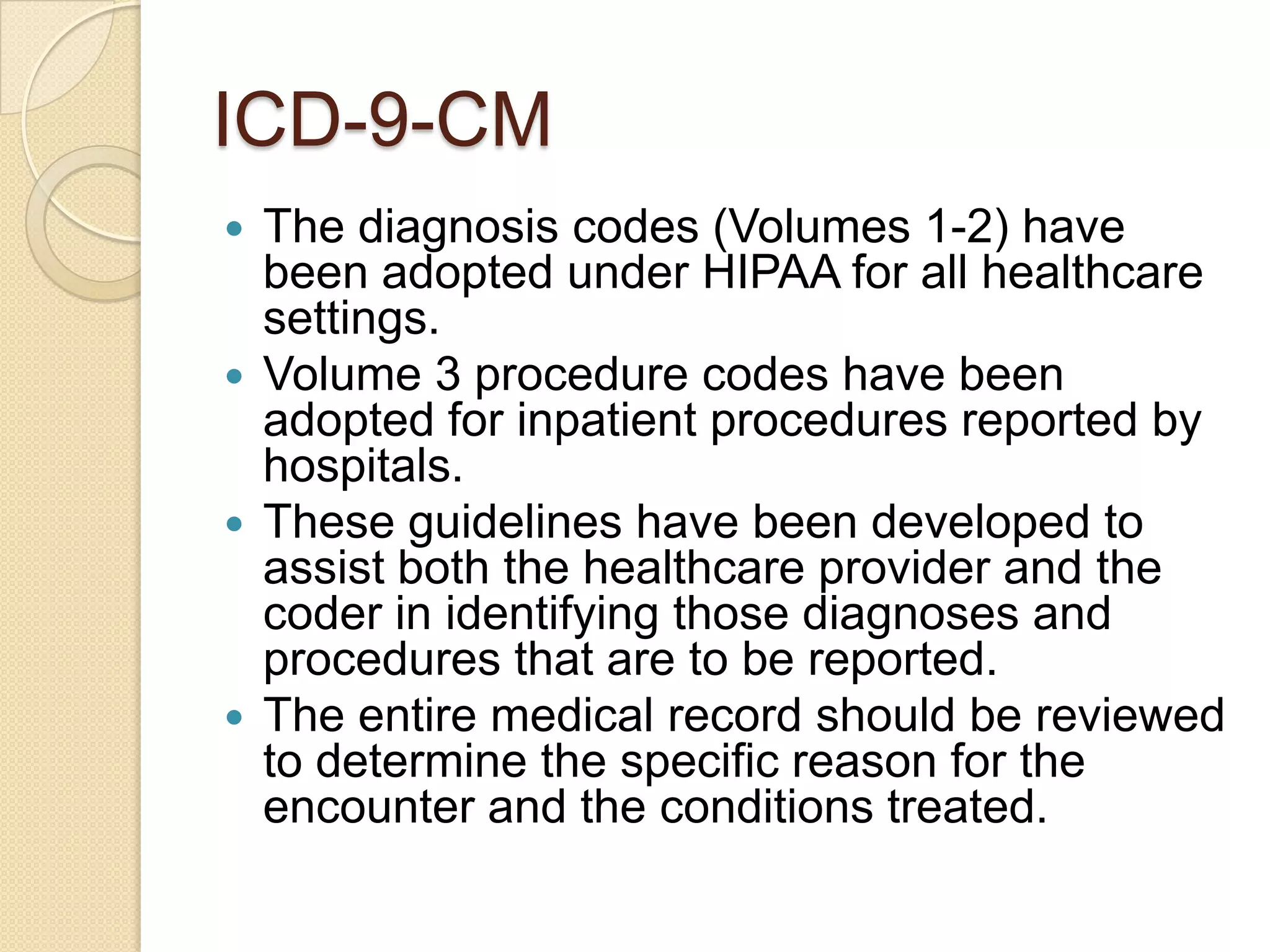
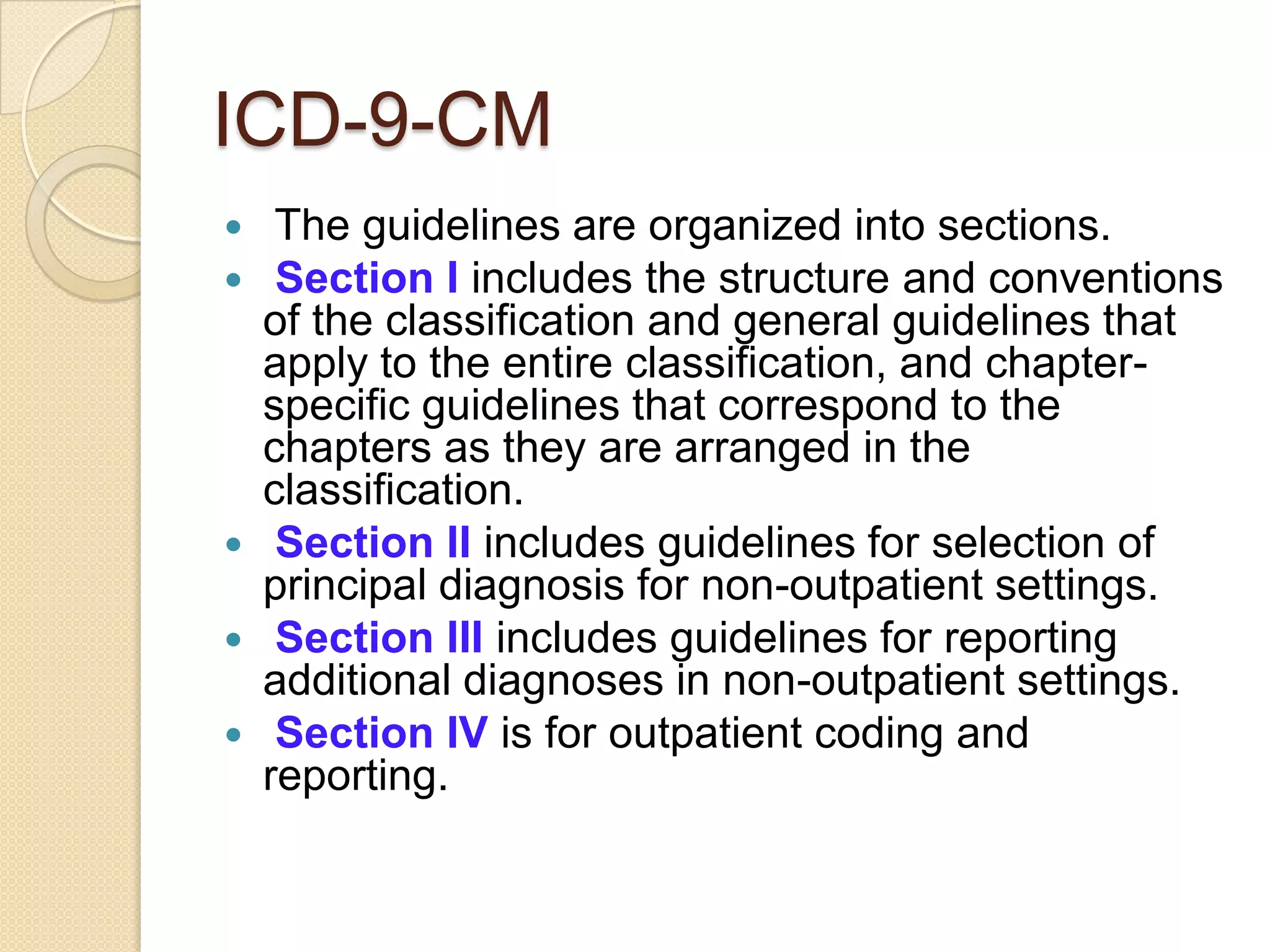
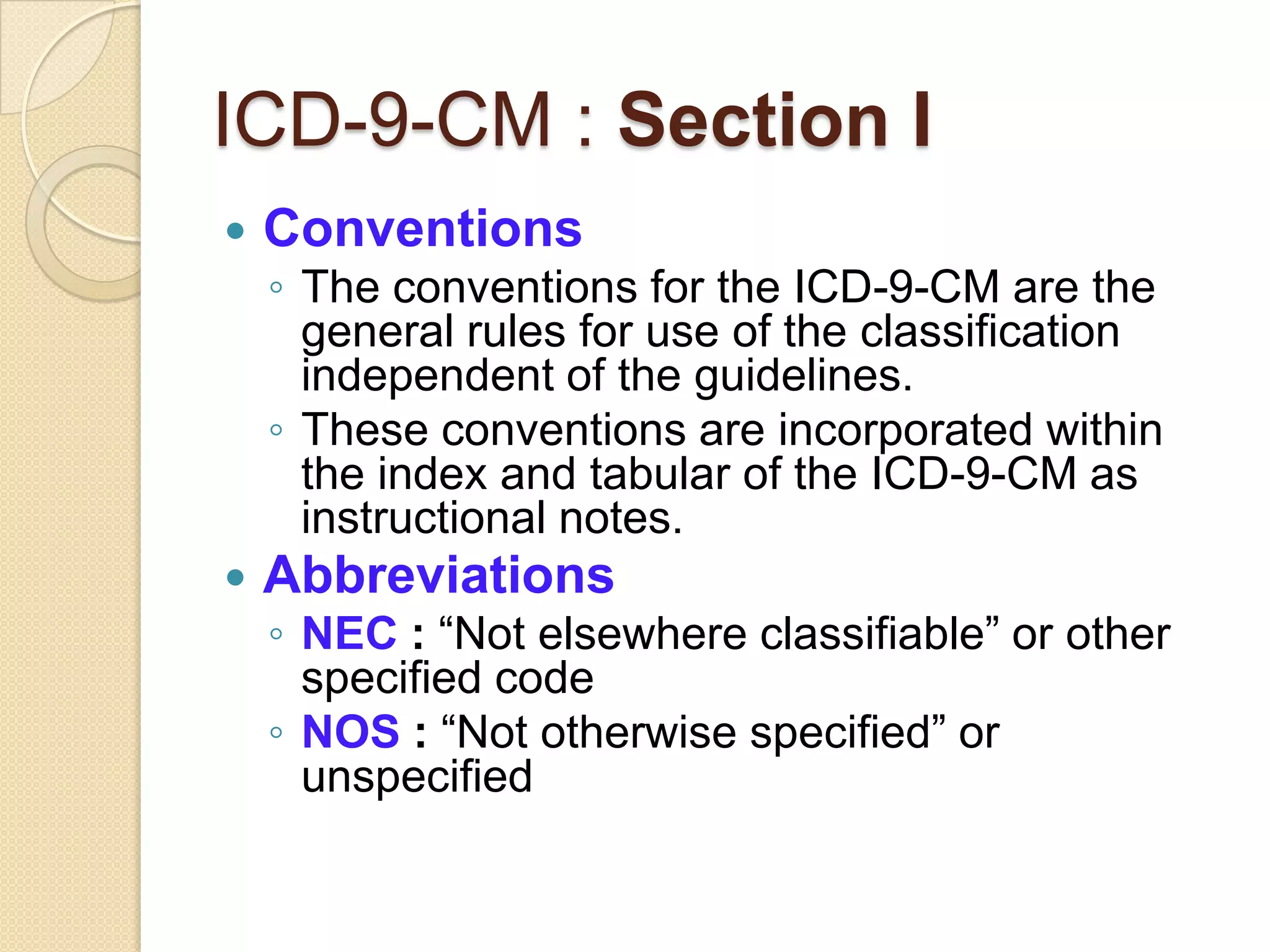
![ICD-9-CM : Section I
Punctuation
[ ] Brackets are used in the tabular list to
enclose synonyms, alternative wording or
explanatory phrases. Brackets are used in
the index to identify manifestation codes.](https://image.slidesharecdn.com/medicalcoding-120702214422-phpapp02/75/Medical-coding-and-ICD9CM-review-12-2048.jpg)
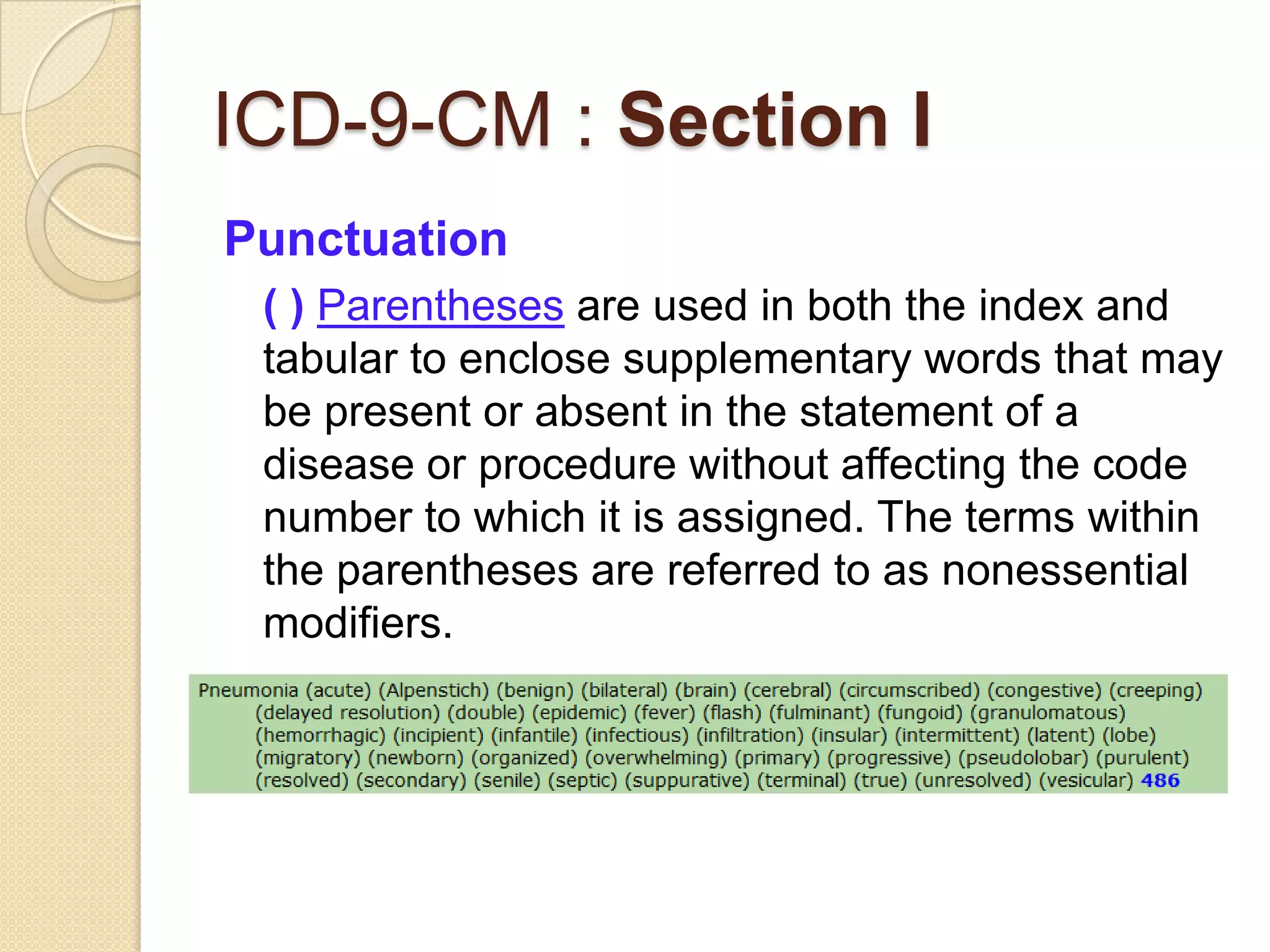
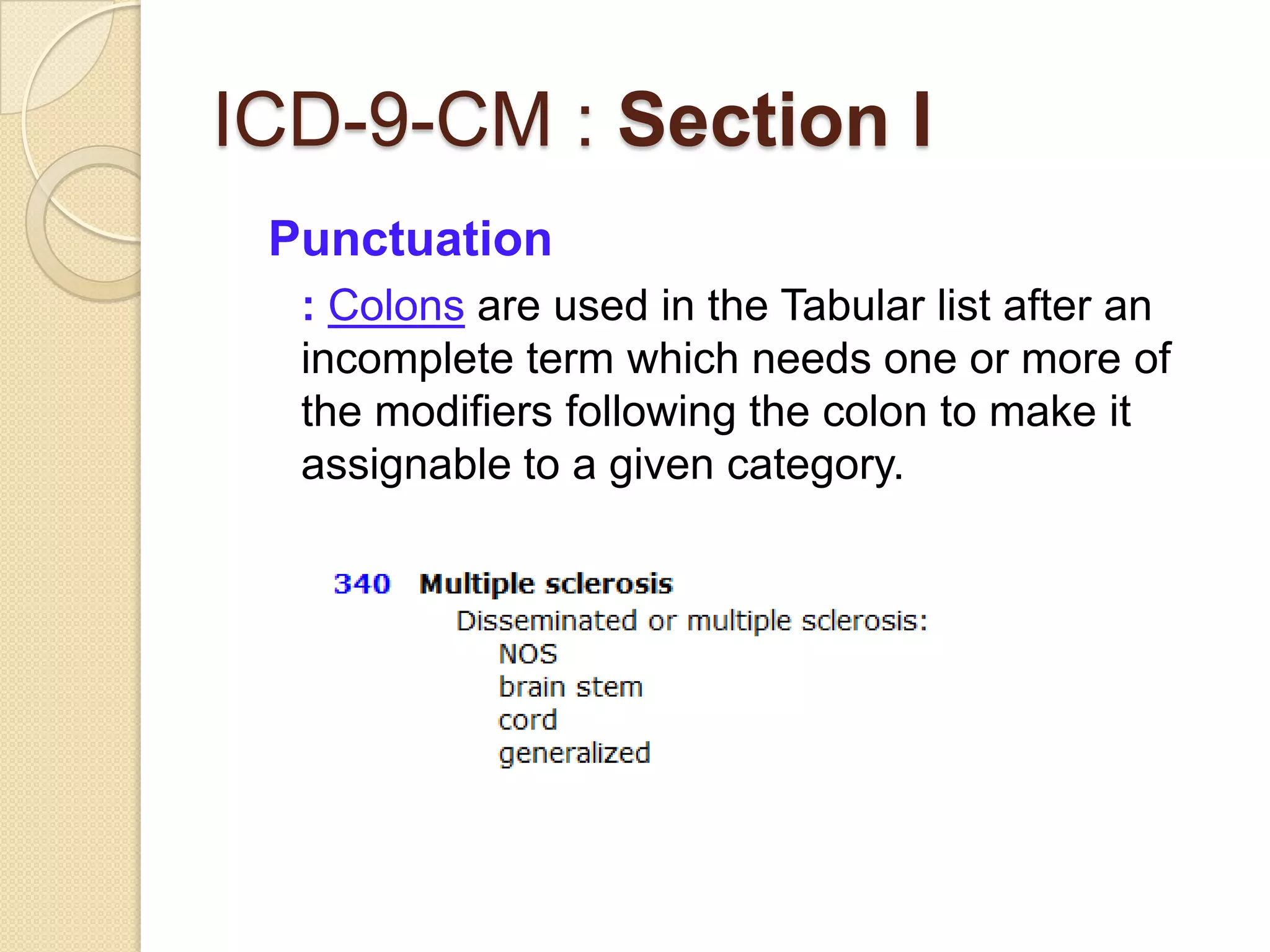
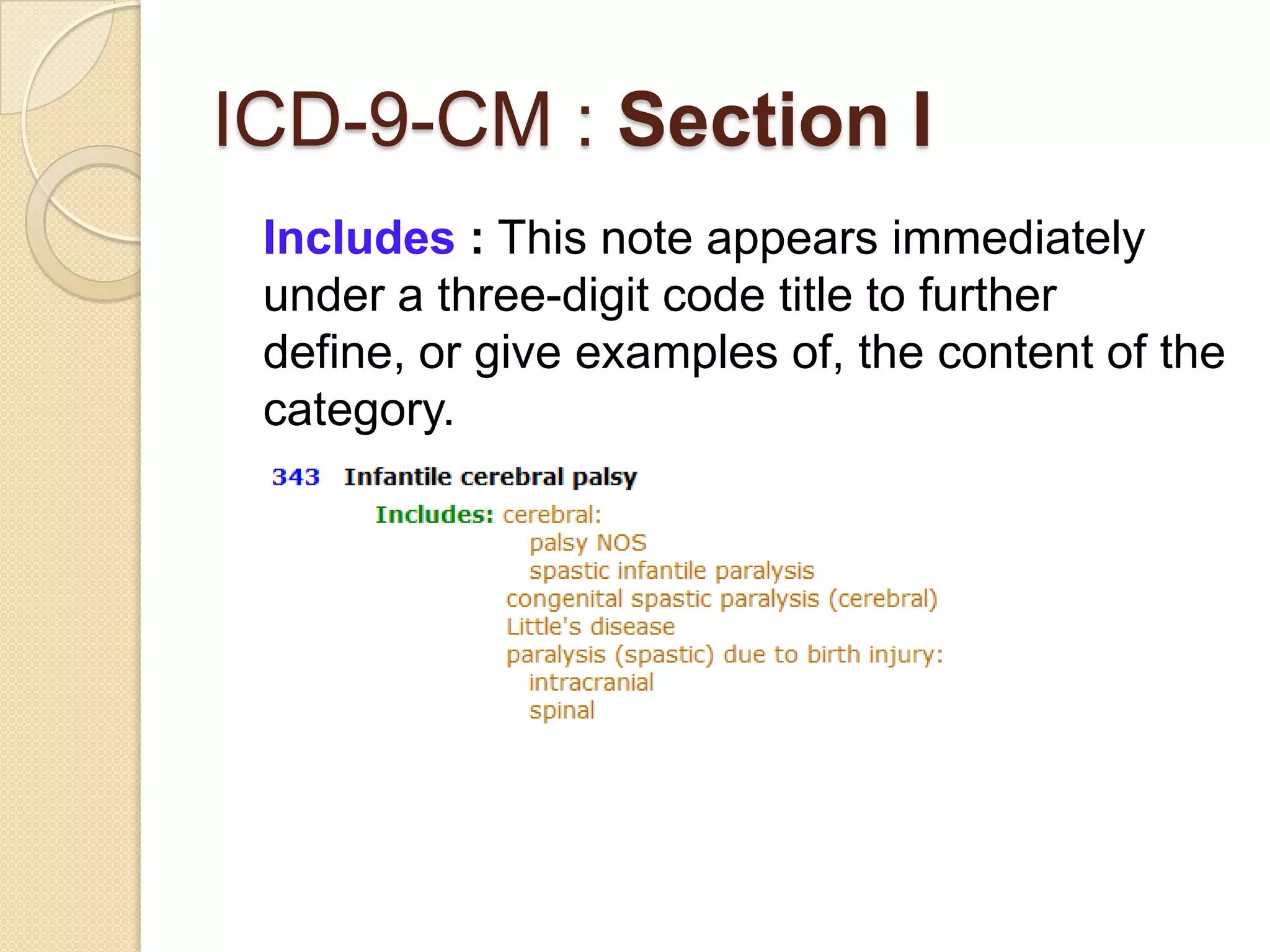

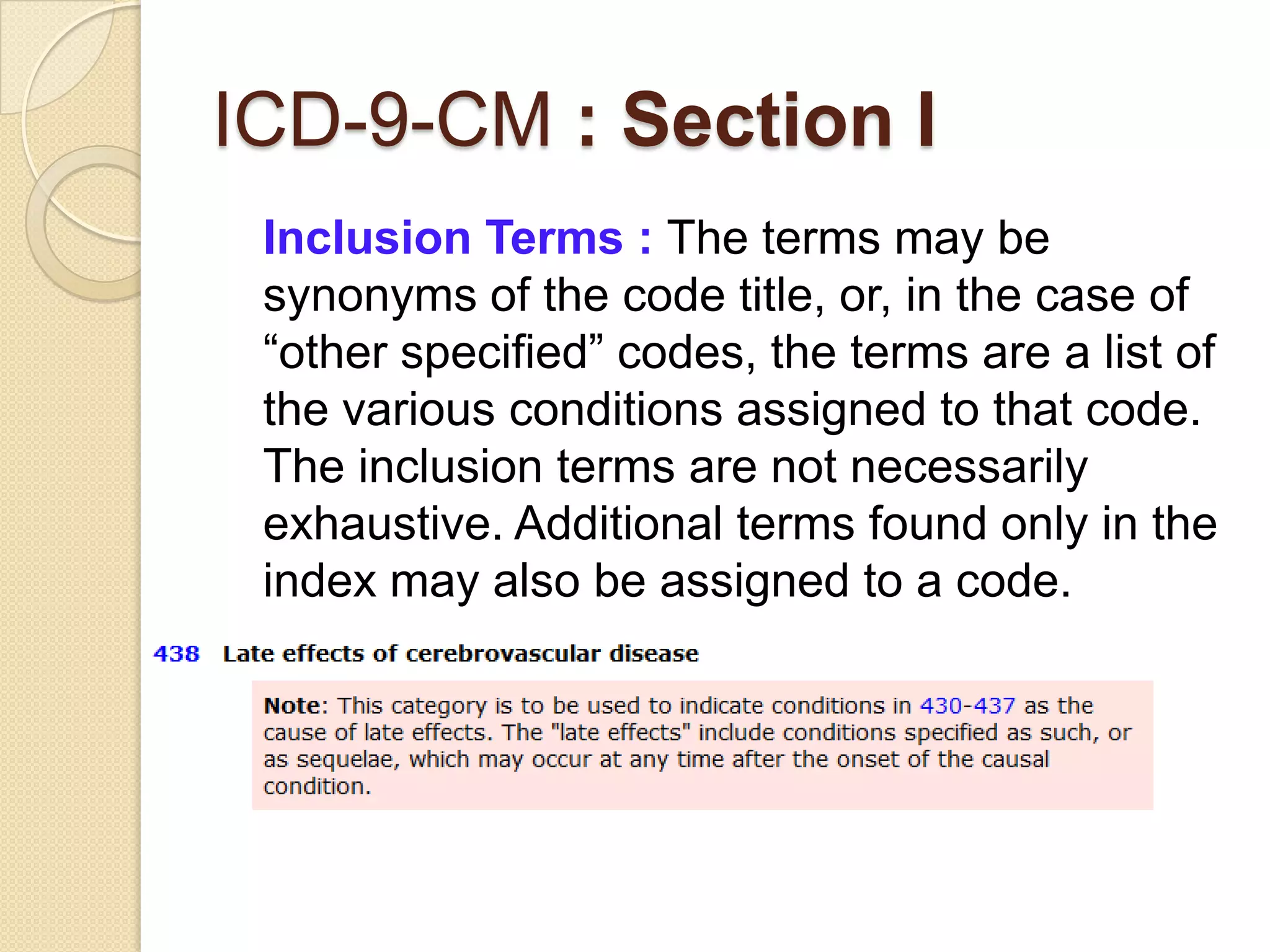
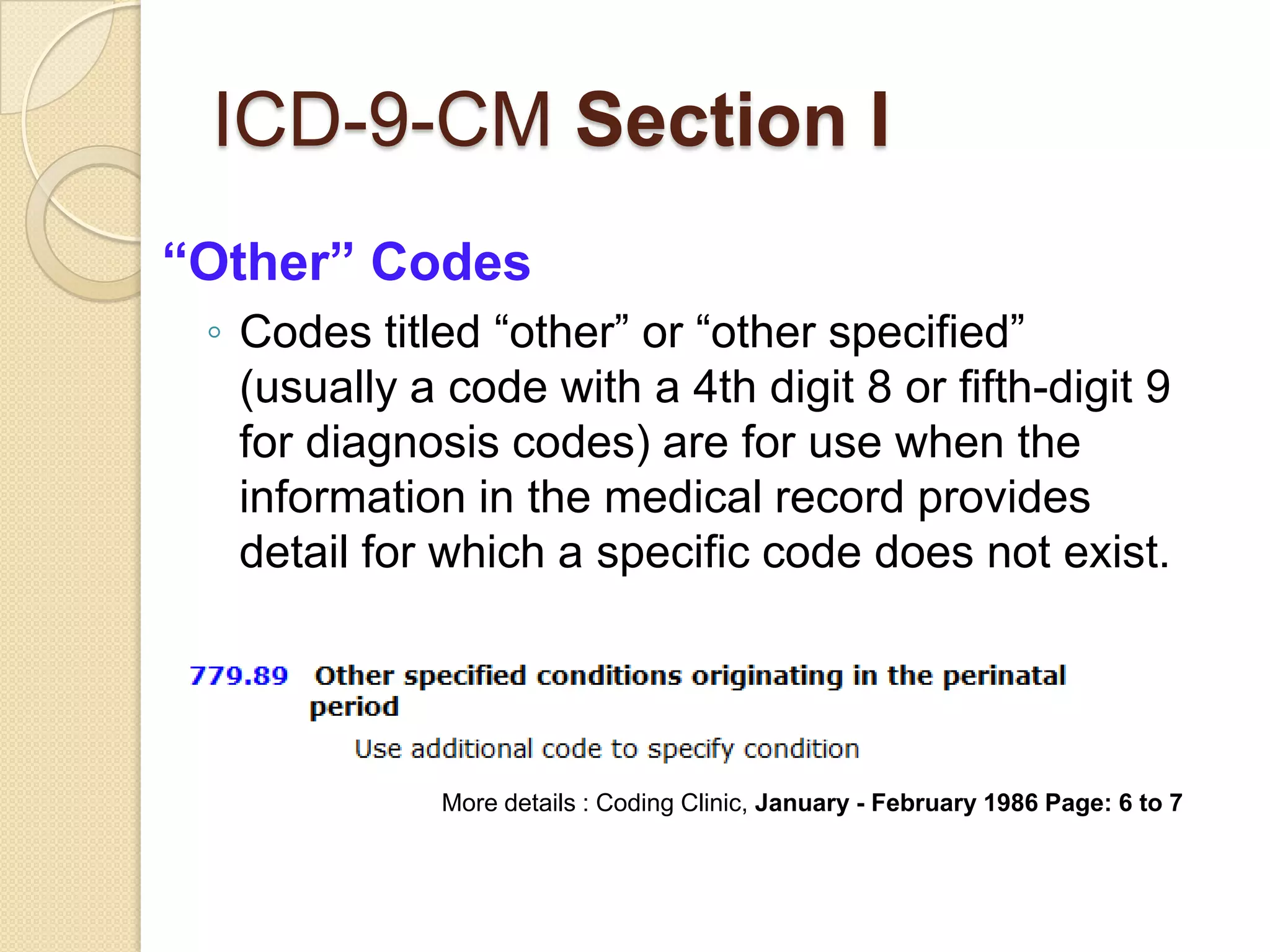
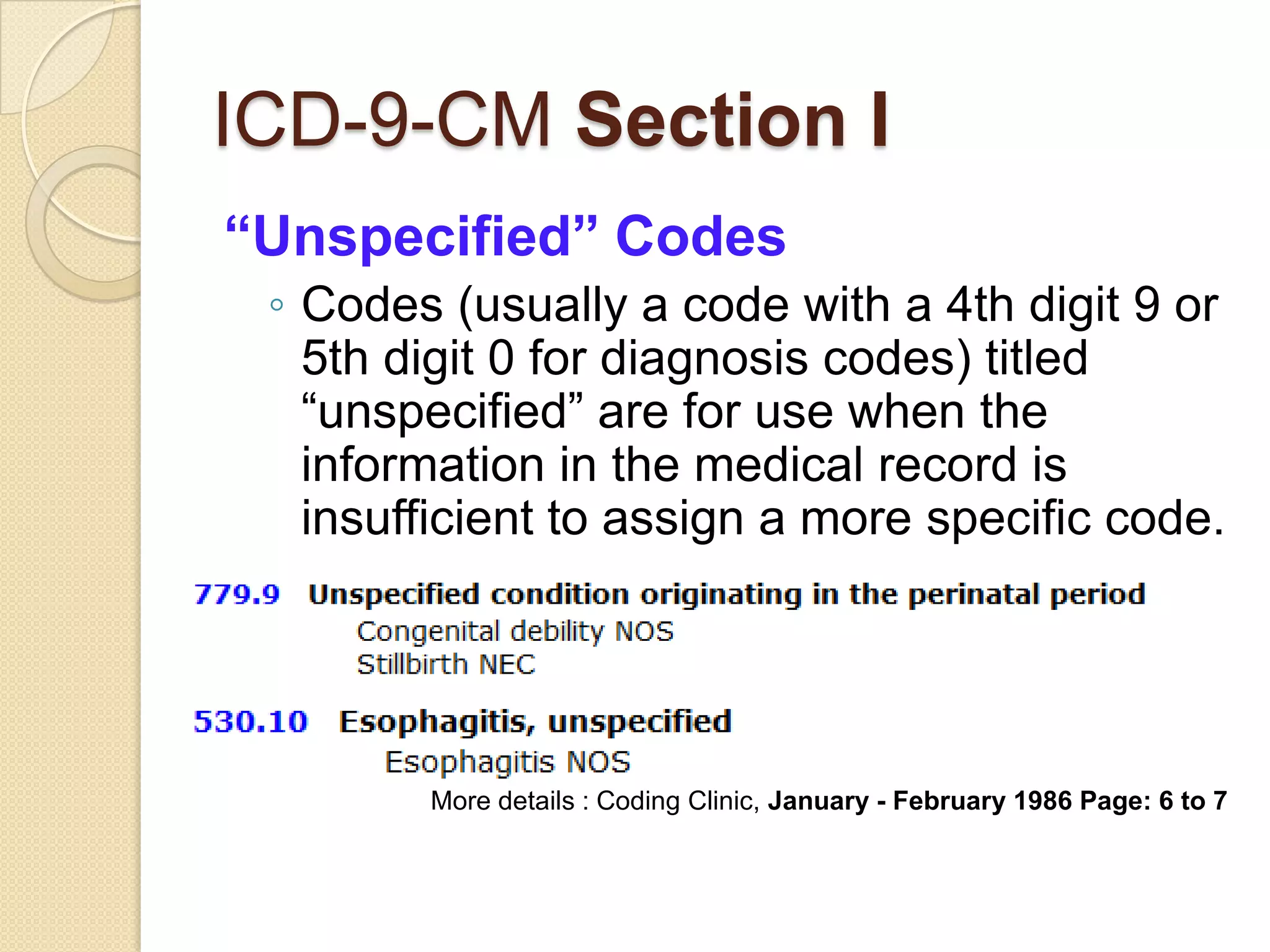

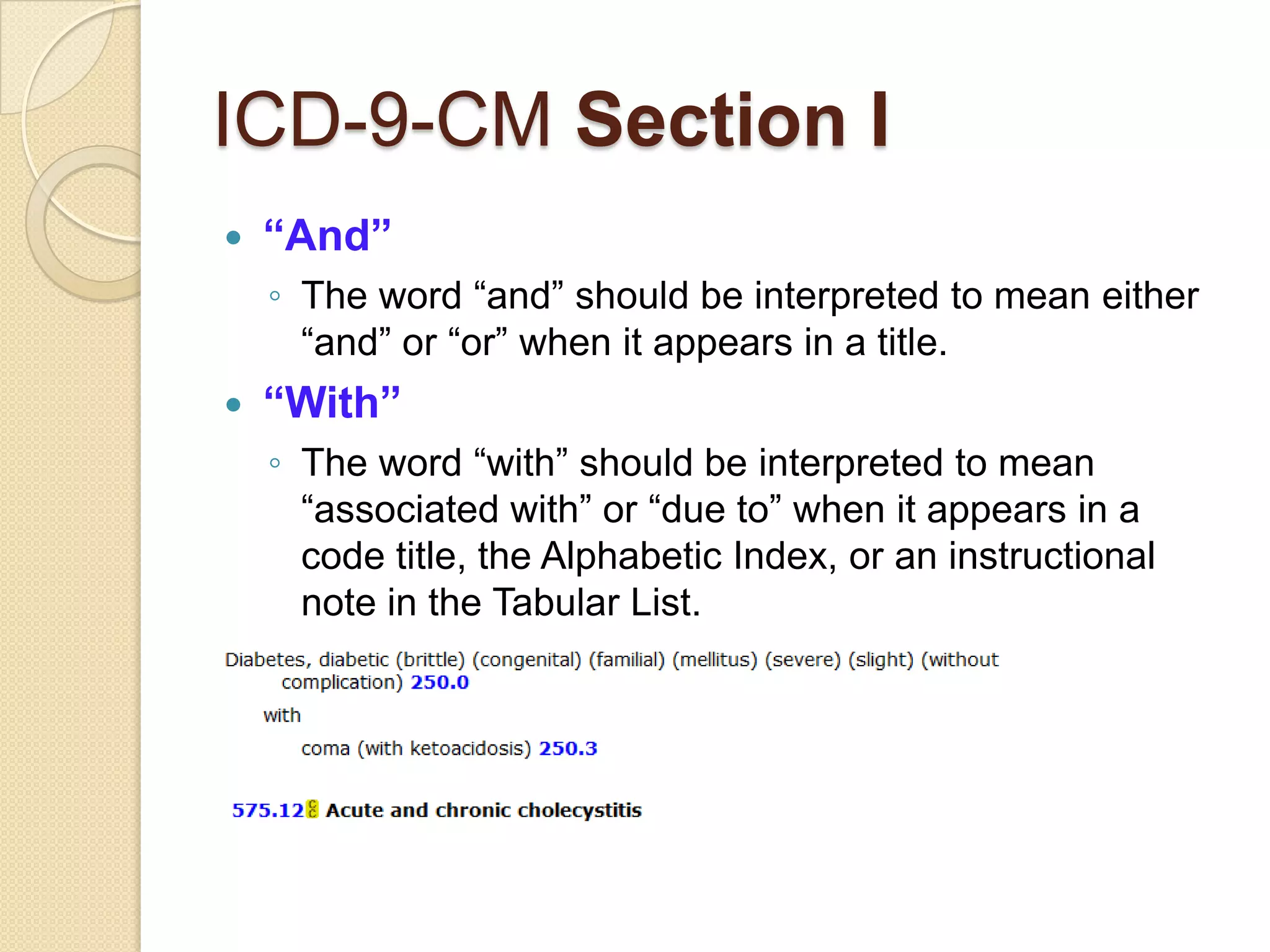
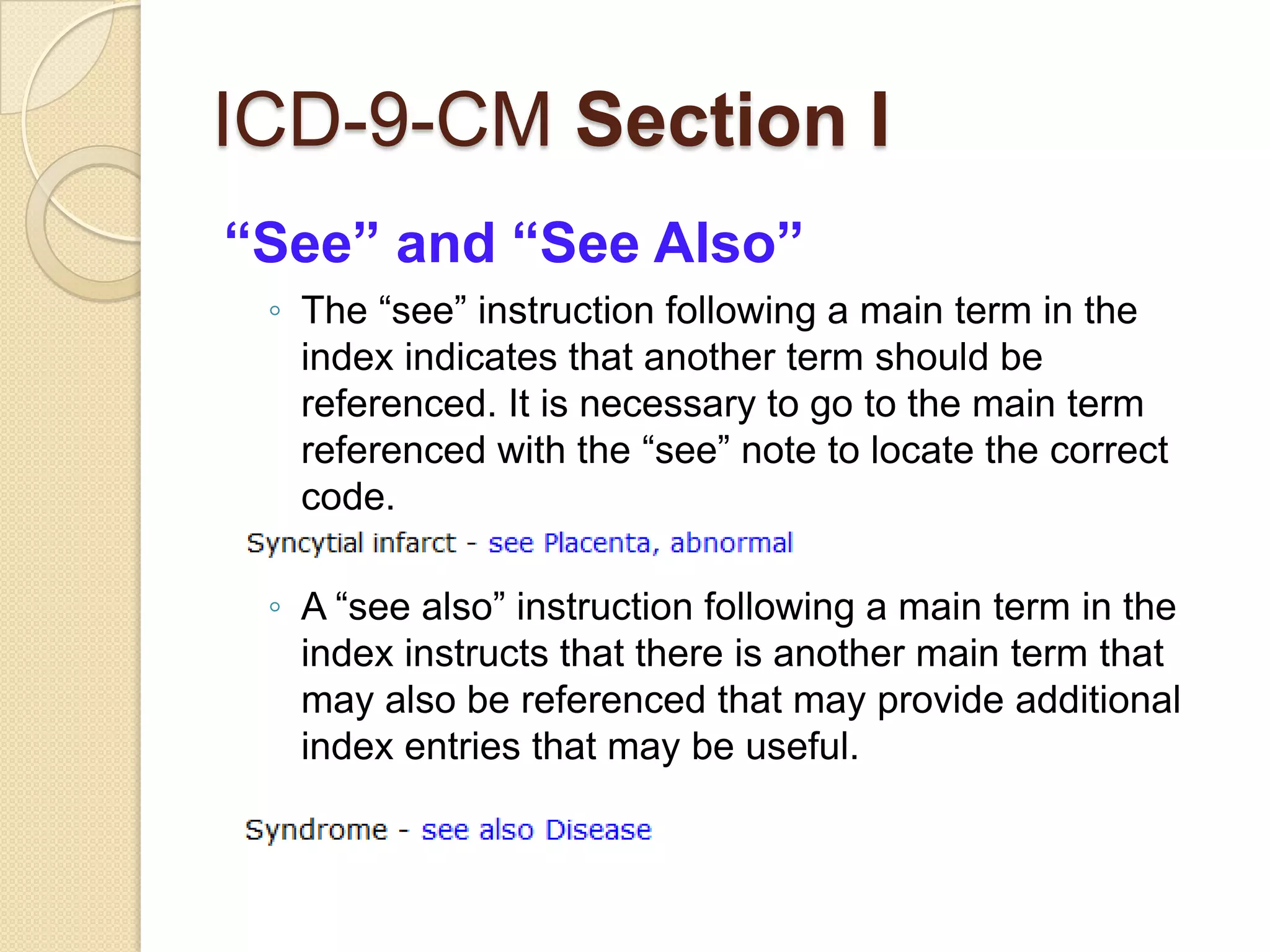
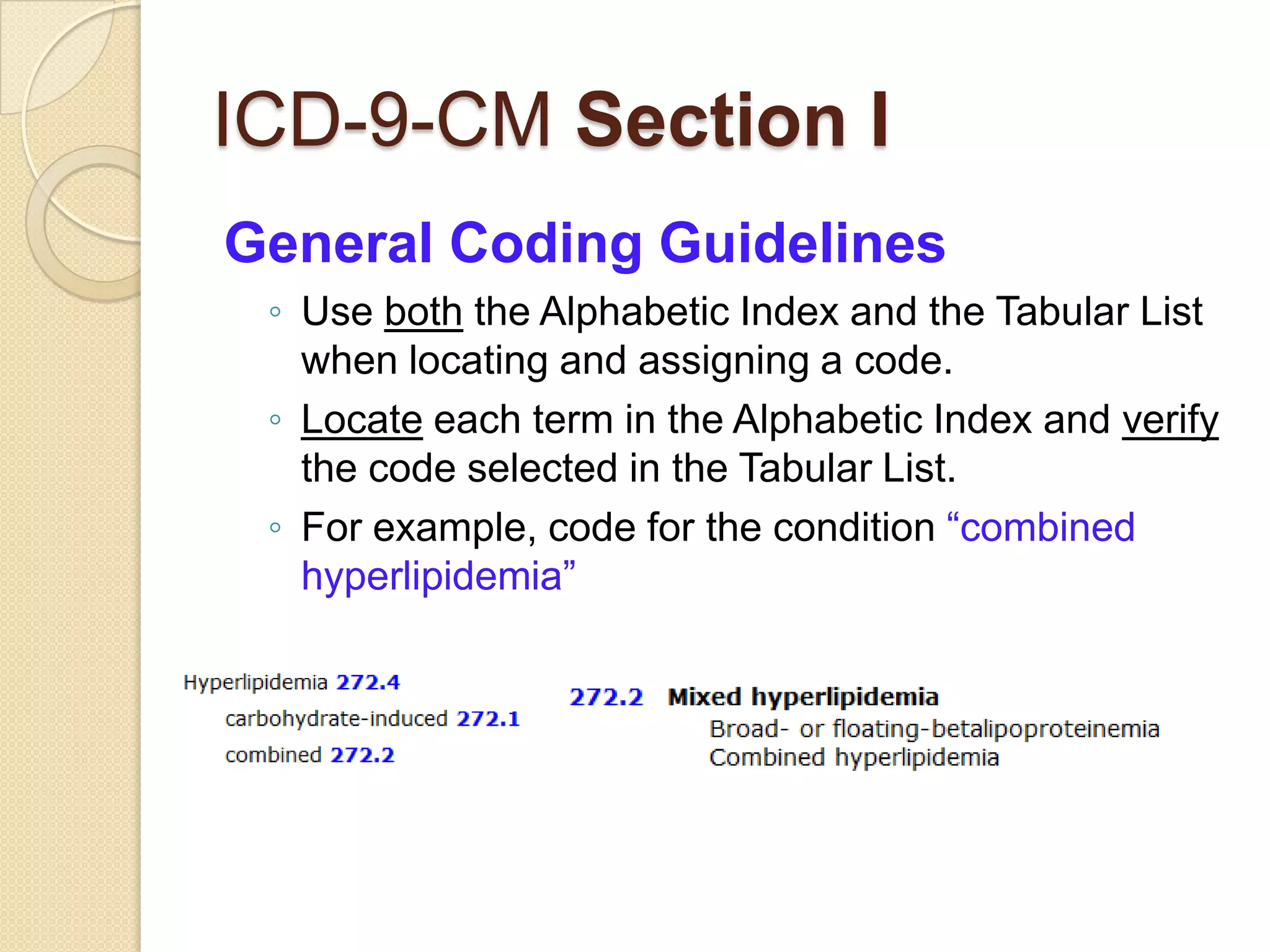
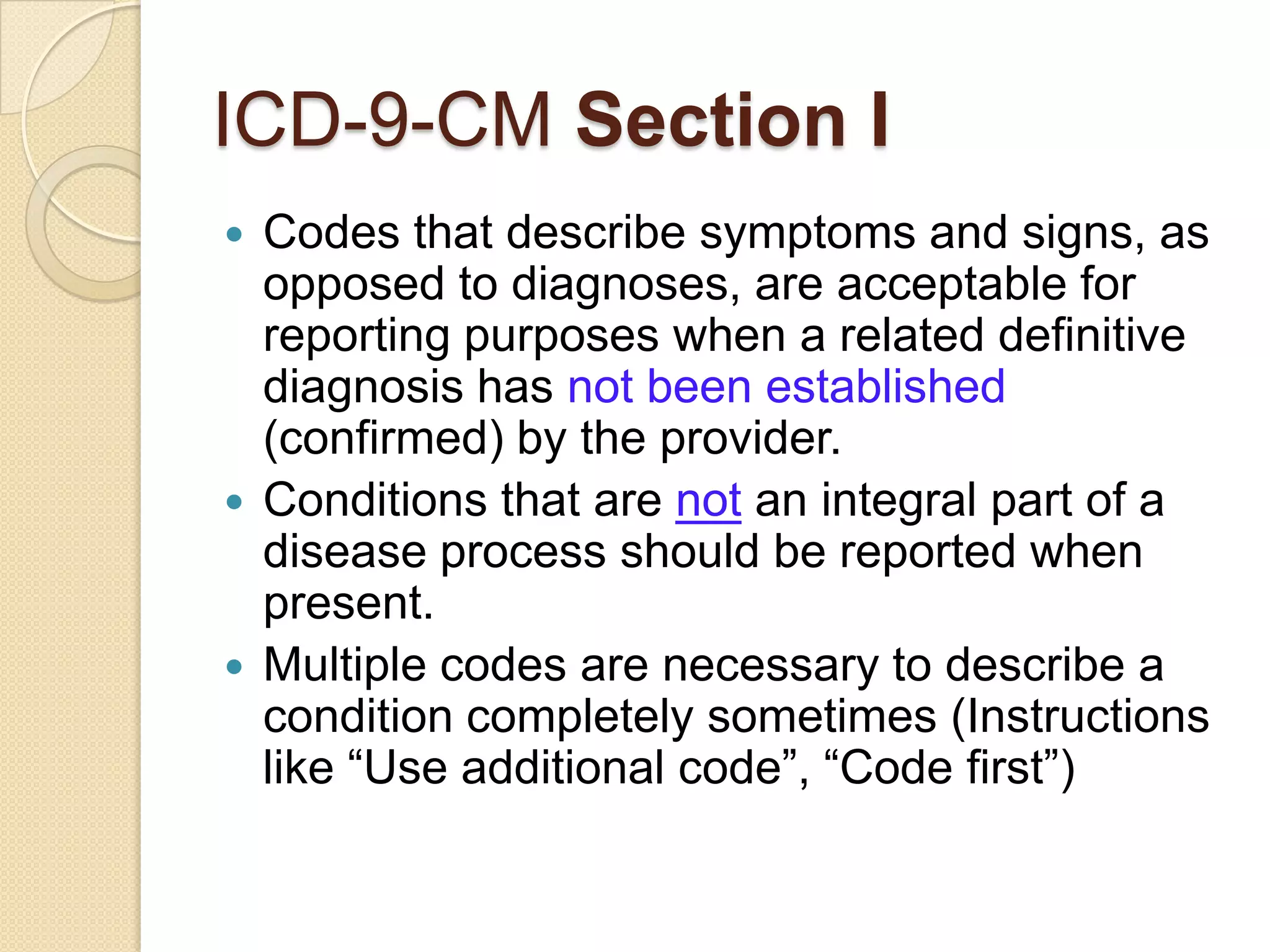

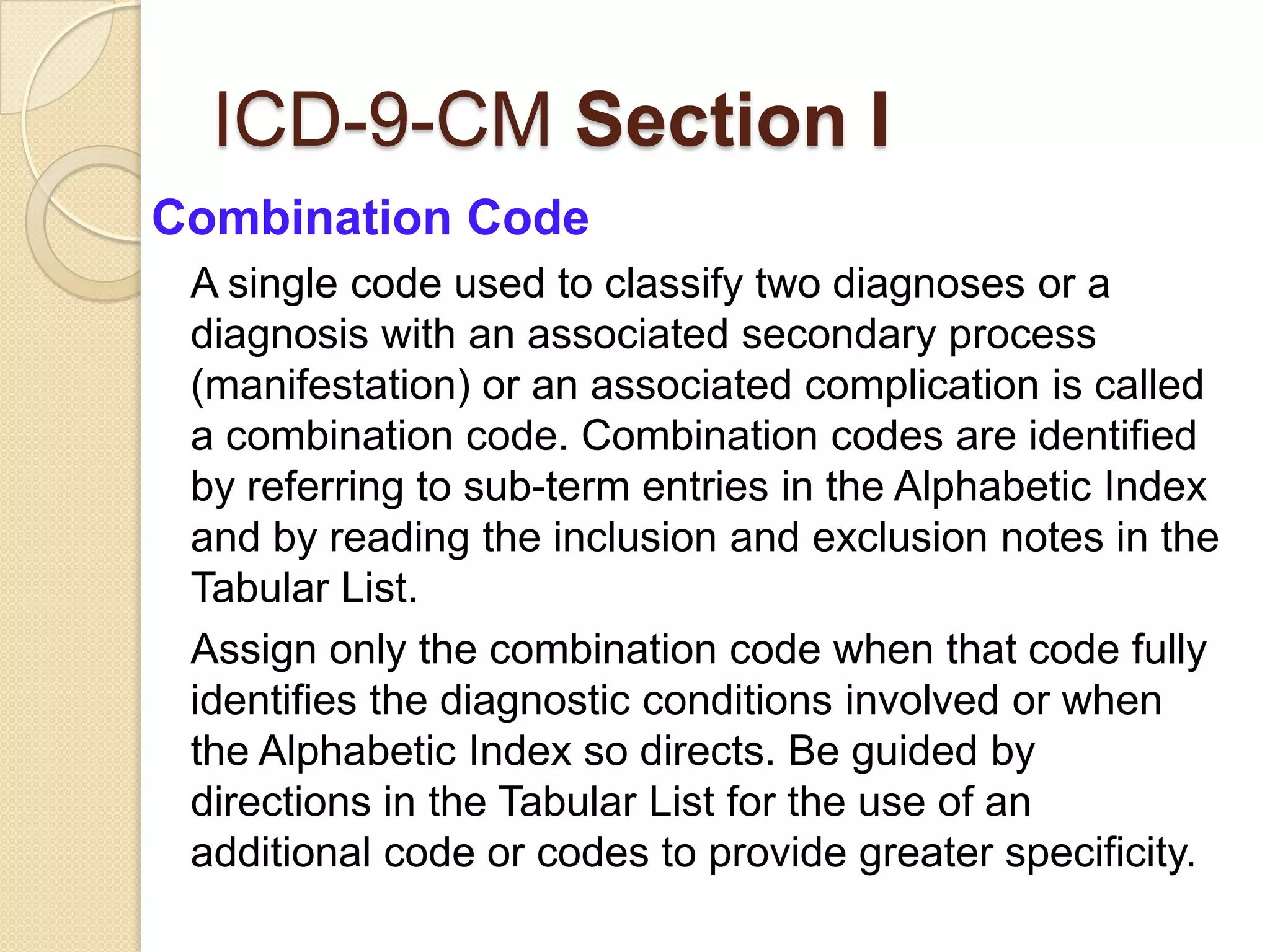
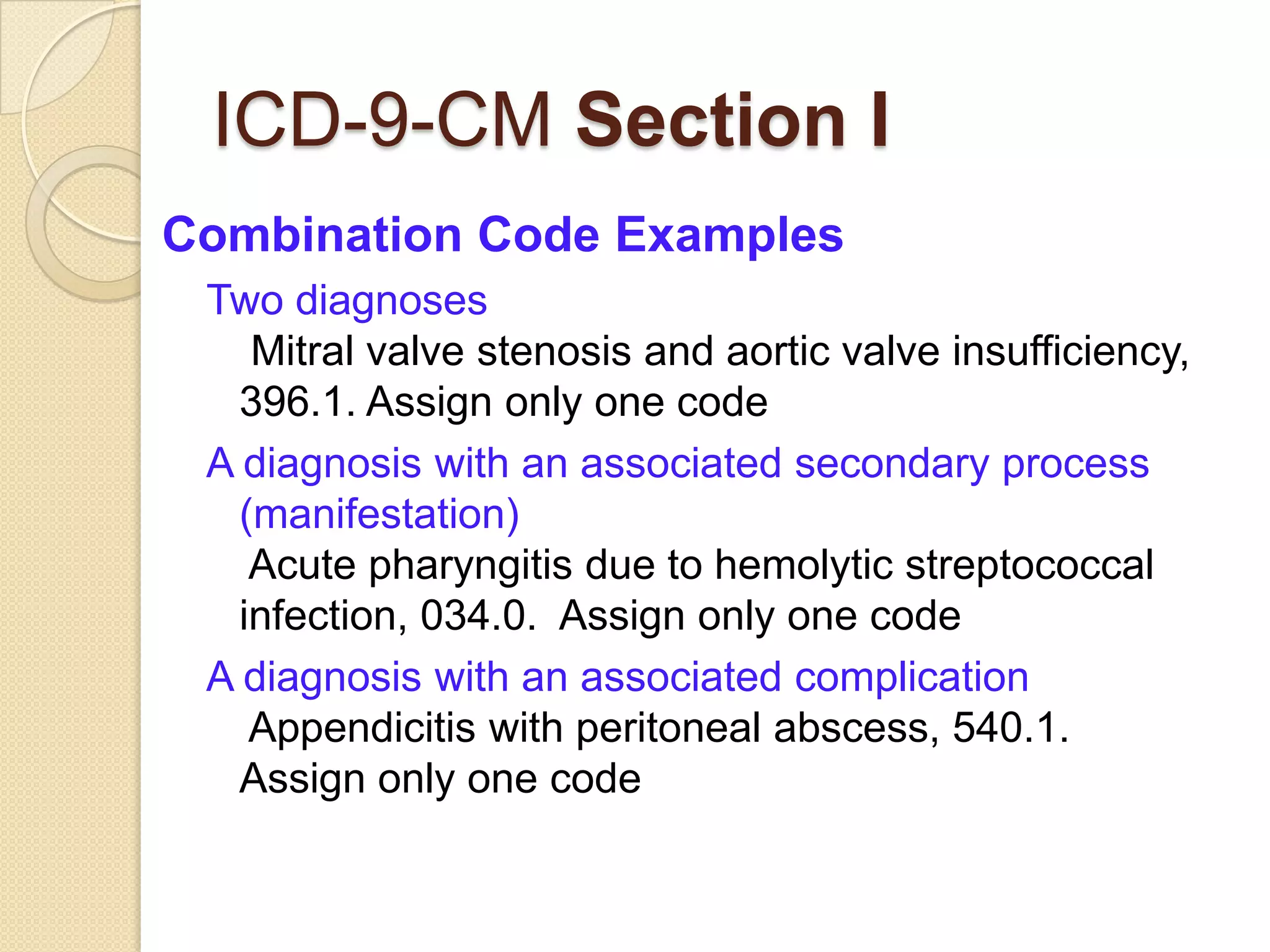
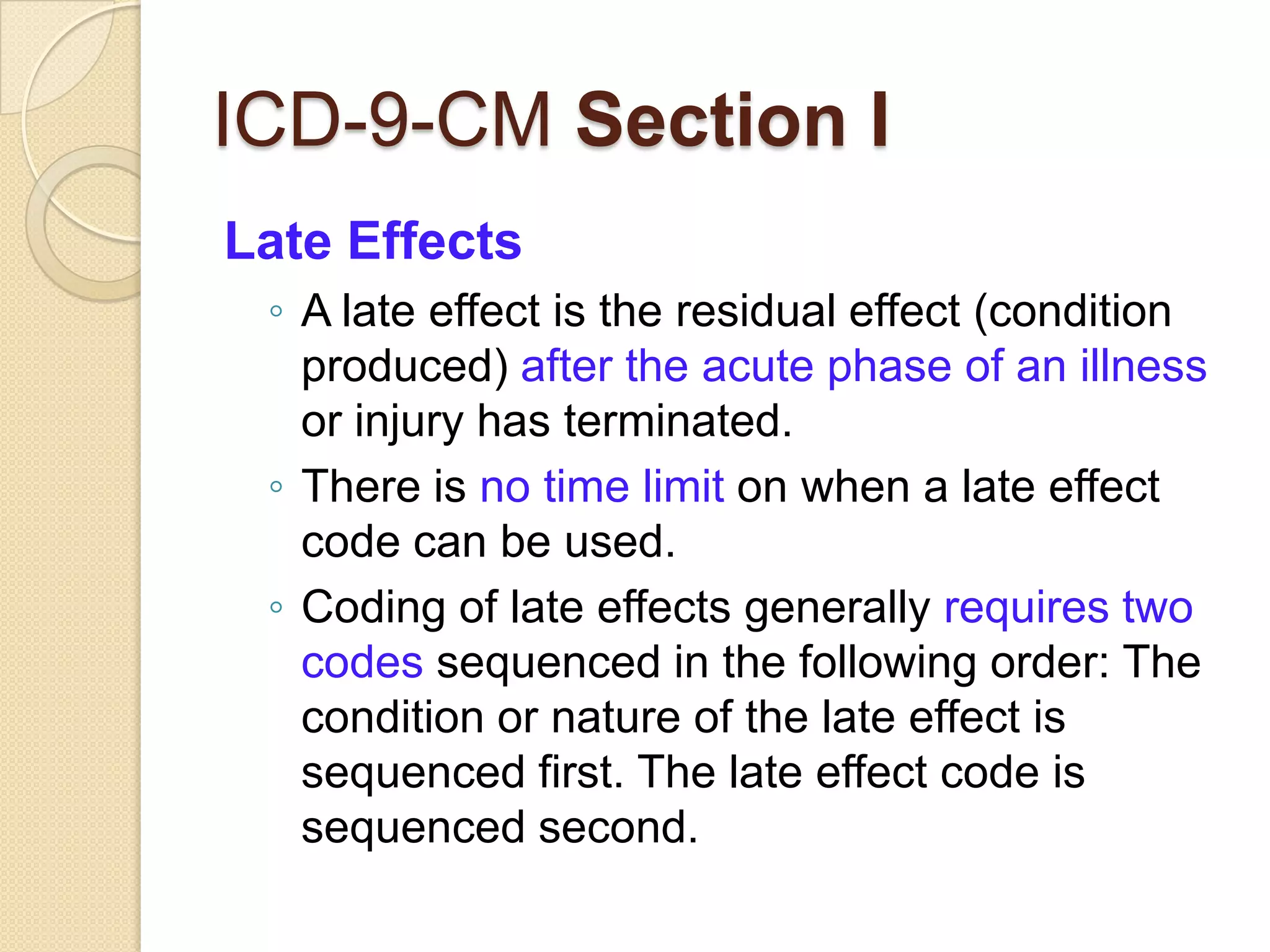
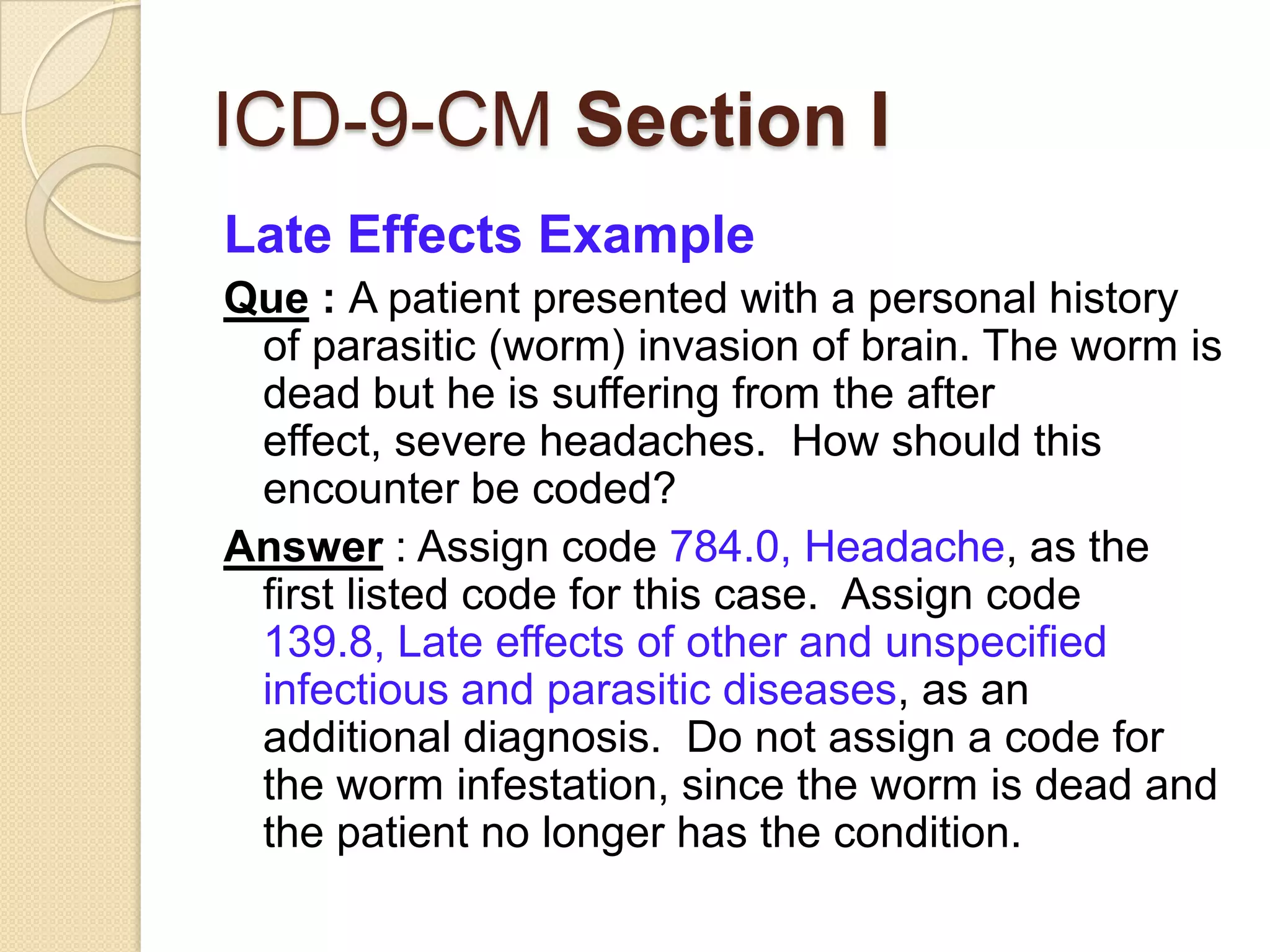

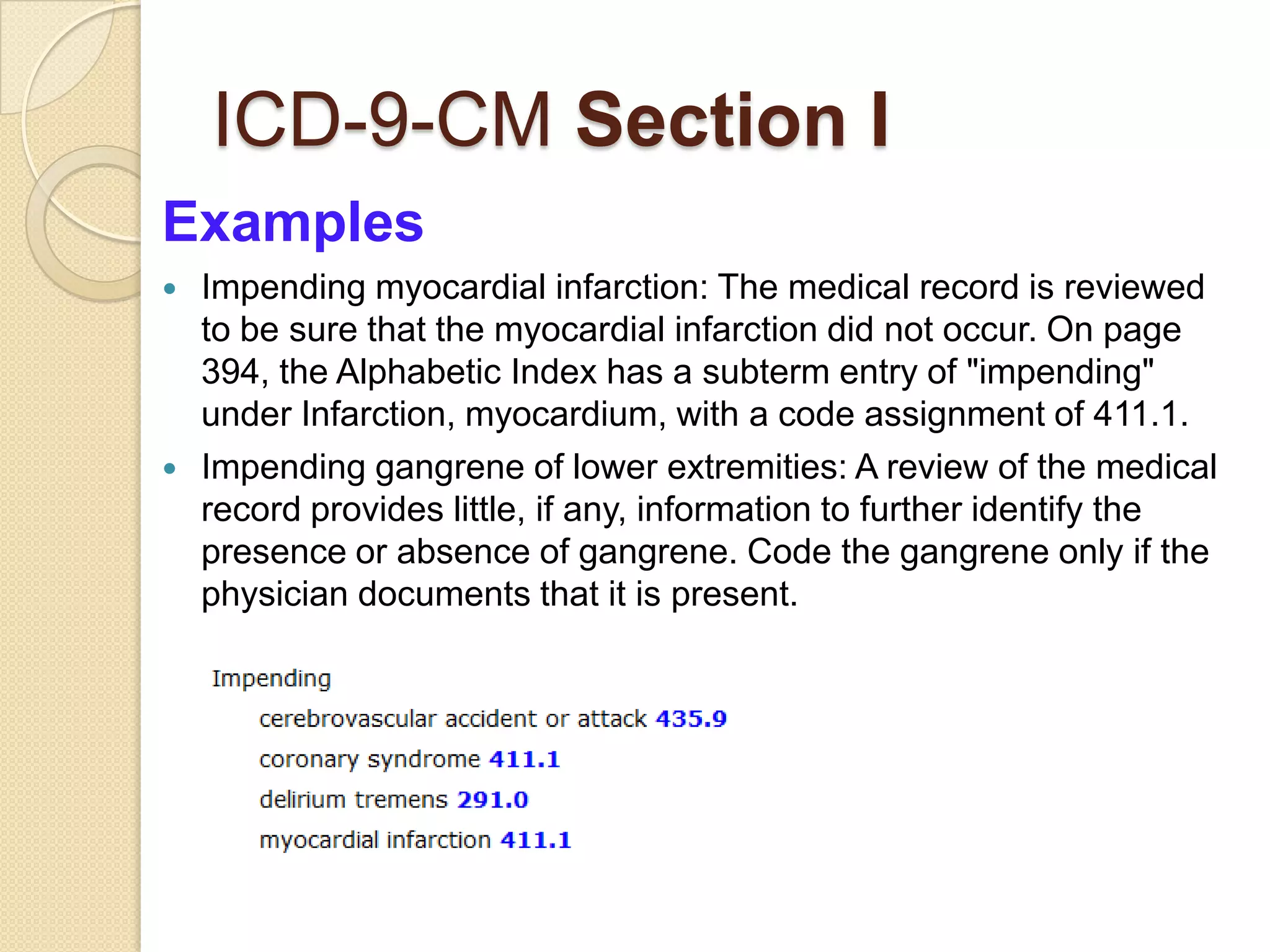
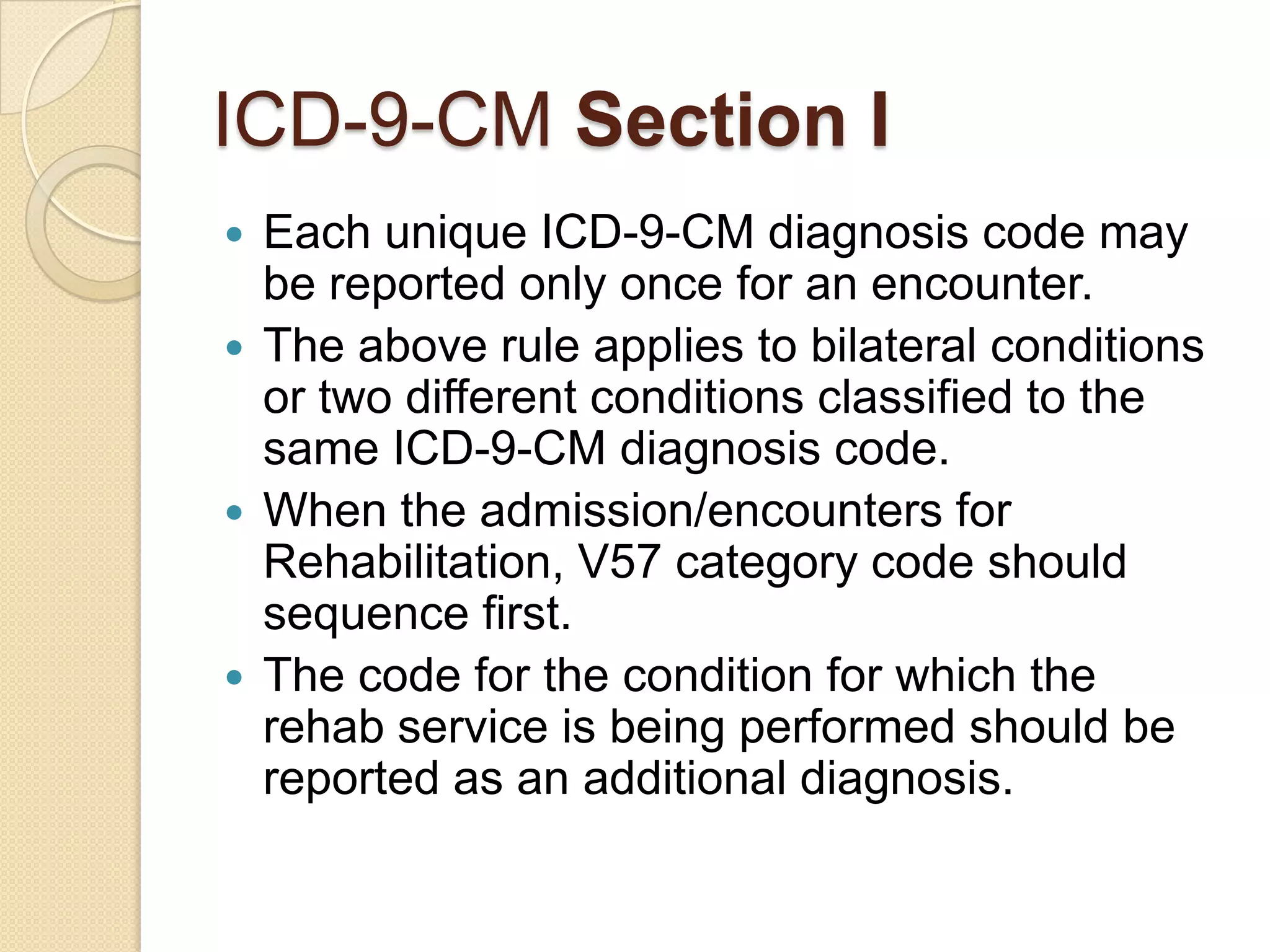

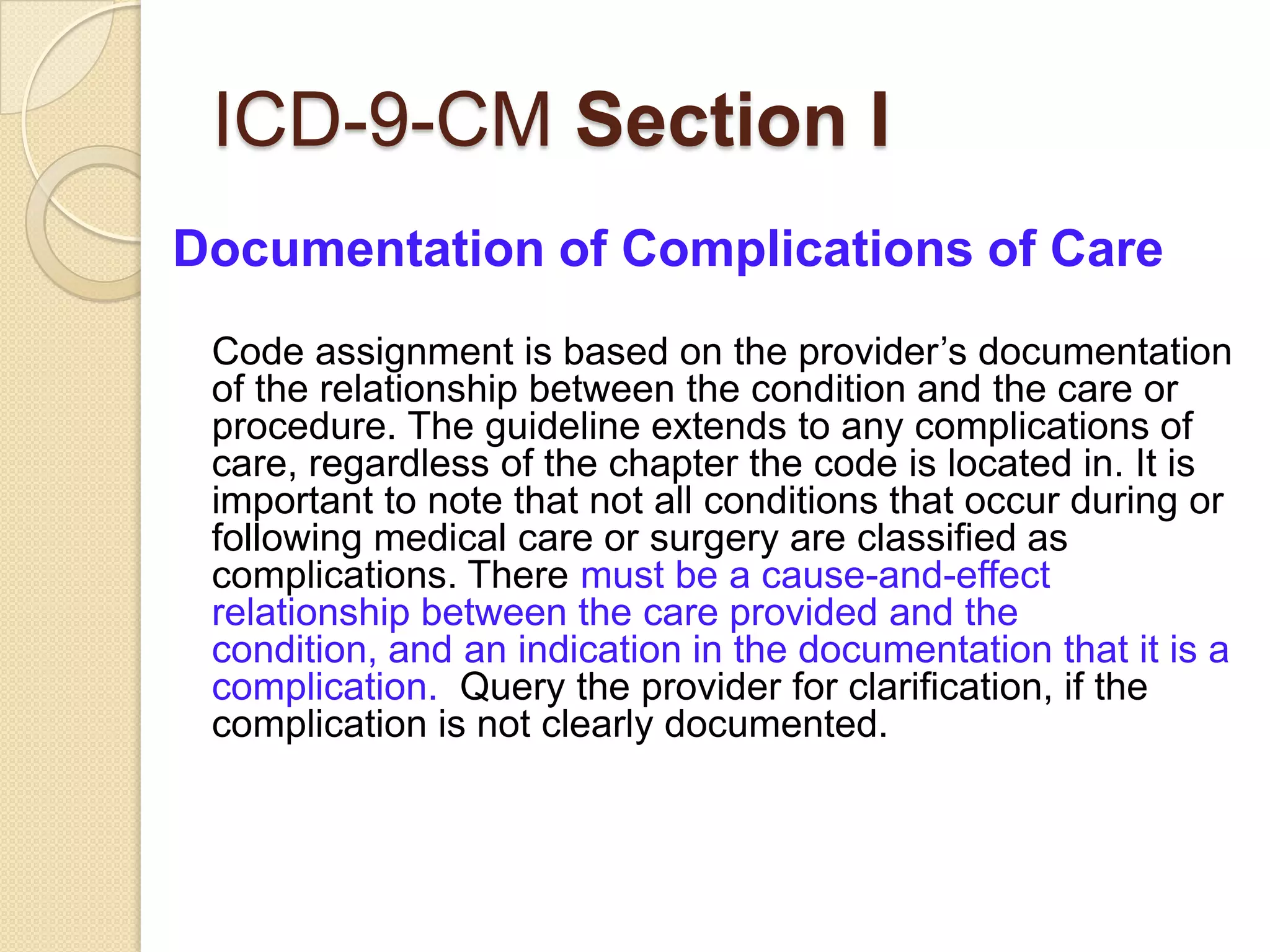
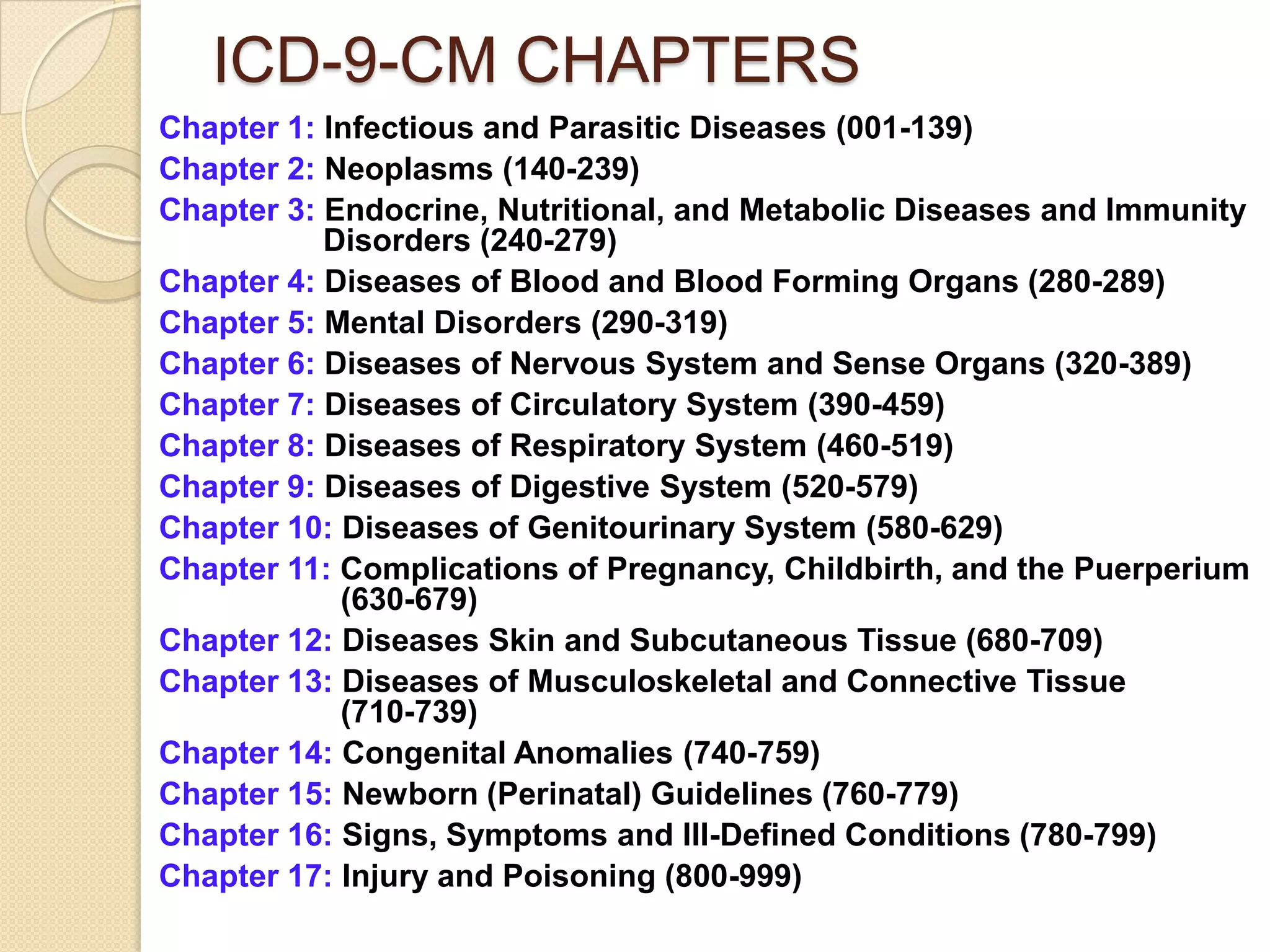

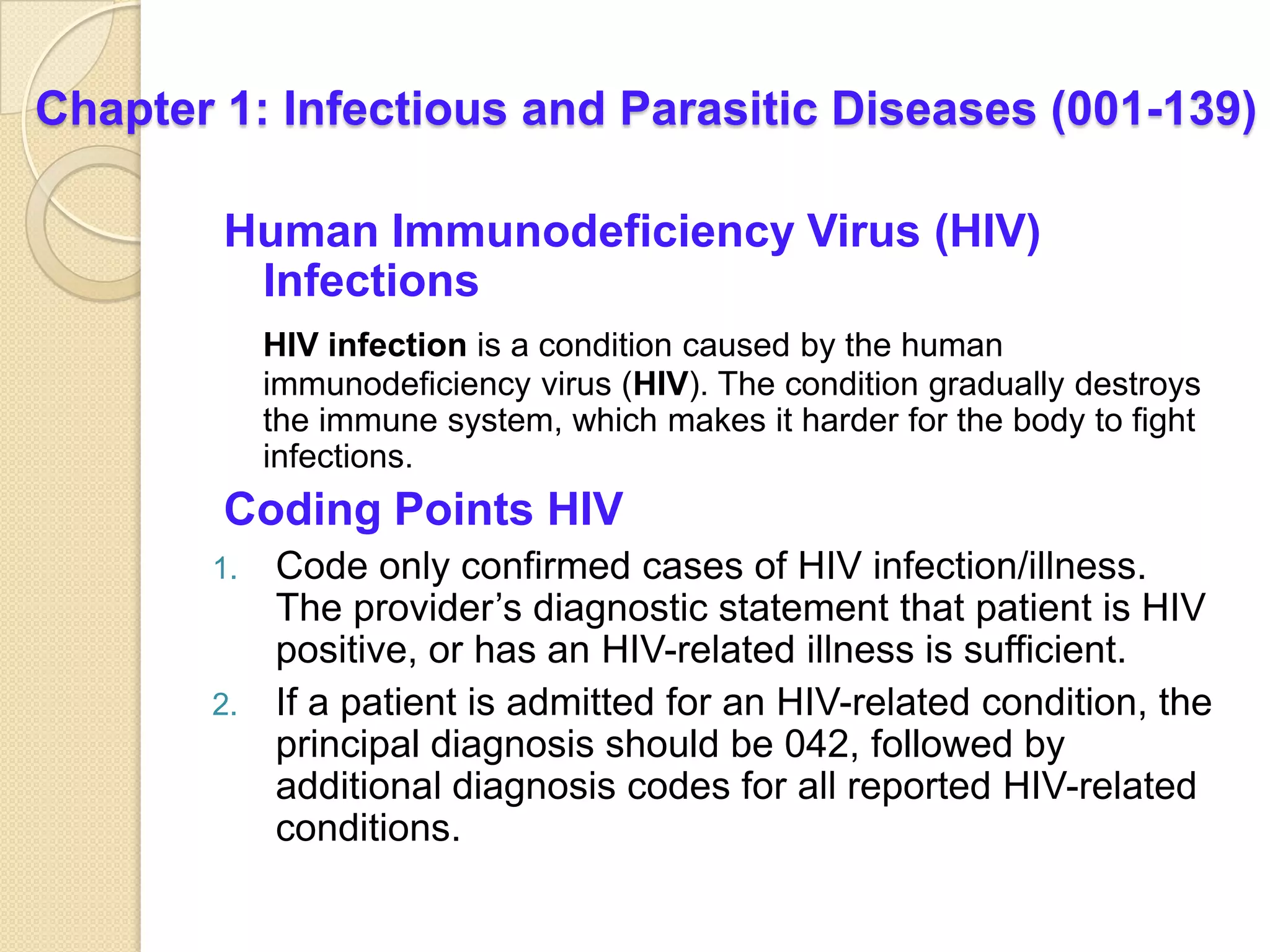
![Coding Points HIV
3. If a patient with HIV disease is admitted for an
unrelated condition (such as a traumatic injury), the
code for the unrelated condition (e.g., the nature of
injury code) should be the principal diagnosis. Other
diagnoses would be 042 followed by additional
diagnosis codes for all reported HIV-related conditions.
4. Whether the patient is newly diagnosed or has had
previous admissions/encounters for HIV conditions is
irrelevant to the sequencing decision.
5. V08 Asymptomatic human immunodeficiency virus
[HIV] infection, is to be applied when the patient without
any documentation of symptoms is listed as being “HIV
positive,” “known HIV,” “HIV test positive,” or similar
terminology.](https://image.slidesharecdn.com/medicalcoding-120702214422-phpapp02/75/Medical-coding-and-ICD9CM-review-38-2048.jpg)
![Coding Points HIV
6. Patients with inconclusive HIV serology, but no
definitive diagnosis or manifestations of the illness, may
be assigned code 795.71, Inconclusive serologic test for
Human Immunodeficiency Virus [HIV].
7. Once a patient has developed an HIV-related
illness, the patient should always be assigned code 042
on every subsequent admission/encounter.
8. HIV Infection in Pregnancy, Childbirth and the
Puerperium, Codes from Chapter 15 always take
sequencing priority(647.6x) followed by 042 and the
code(s) for the HIV-related illness(es).](https://image.slidesharecdn.com/medicalcoding-120702214422-phpapp02/75/Medical-coding-and-ICD9CM-review-39-2048.jpg)
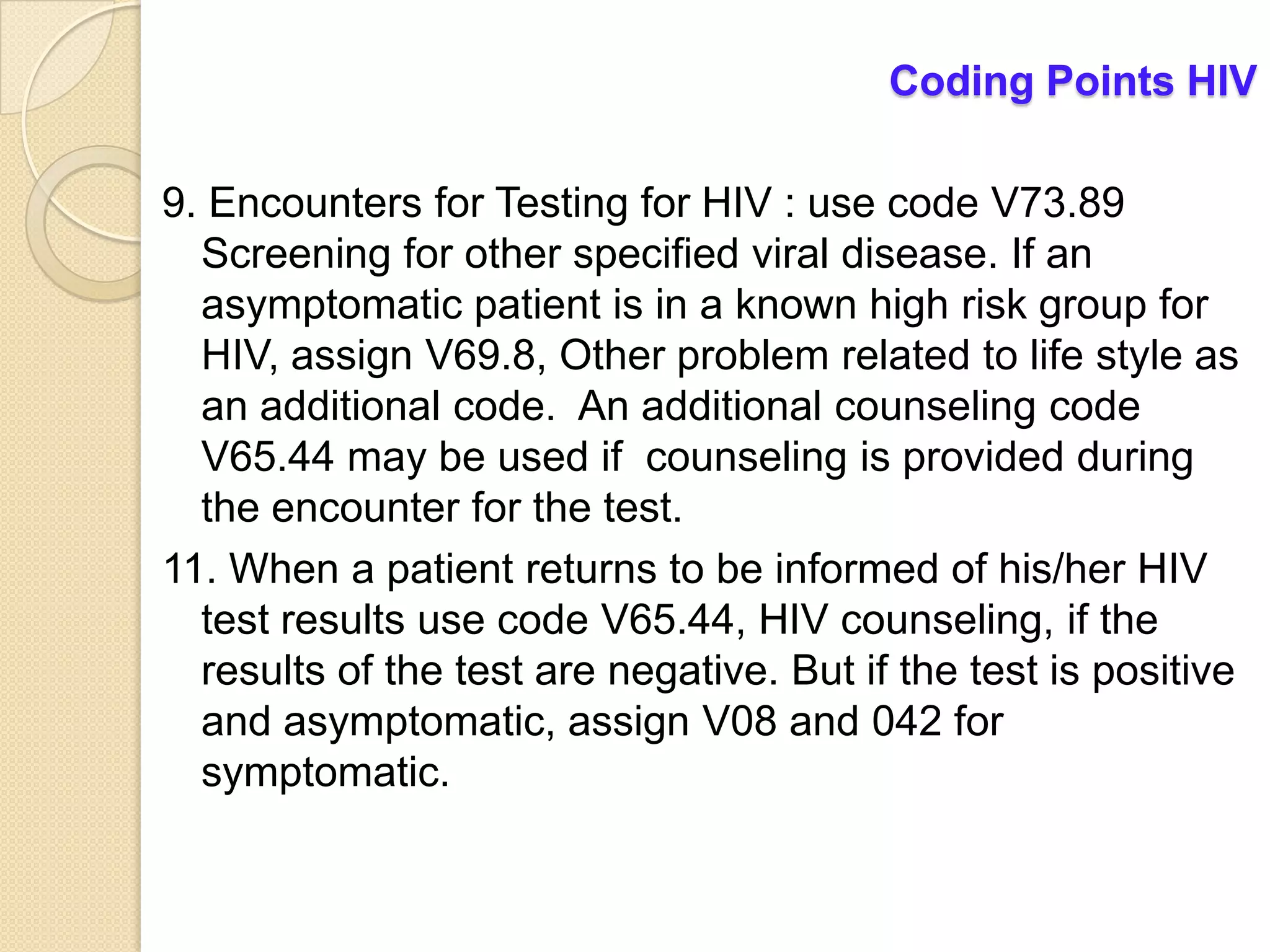
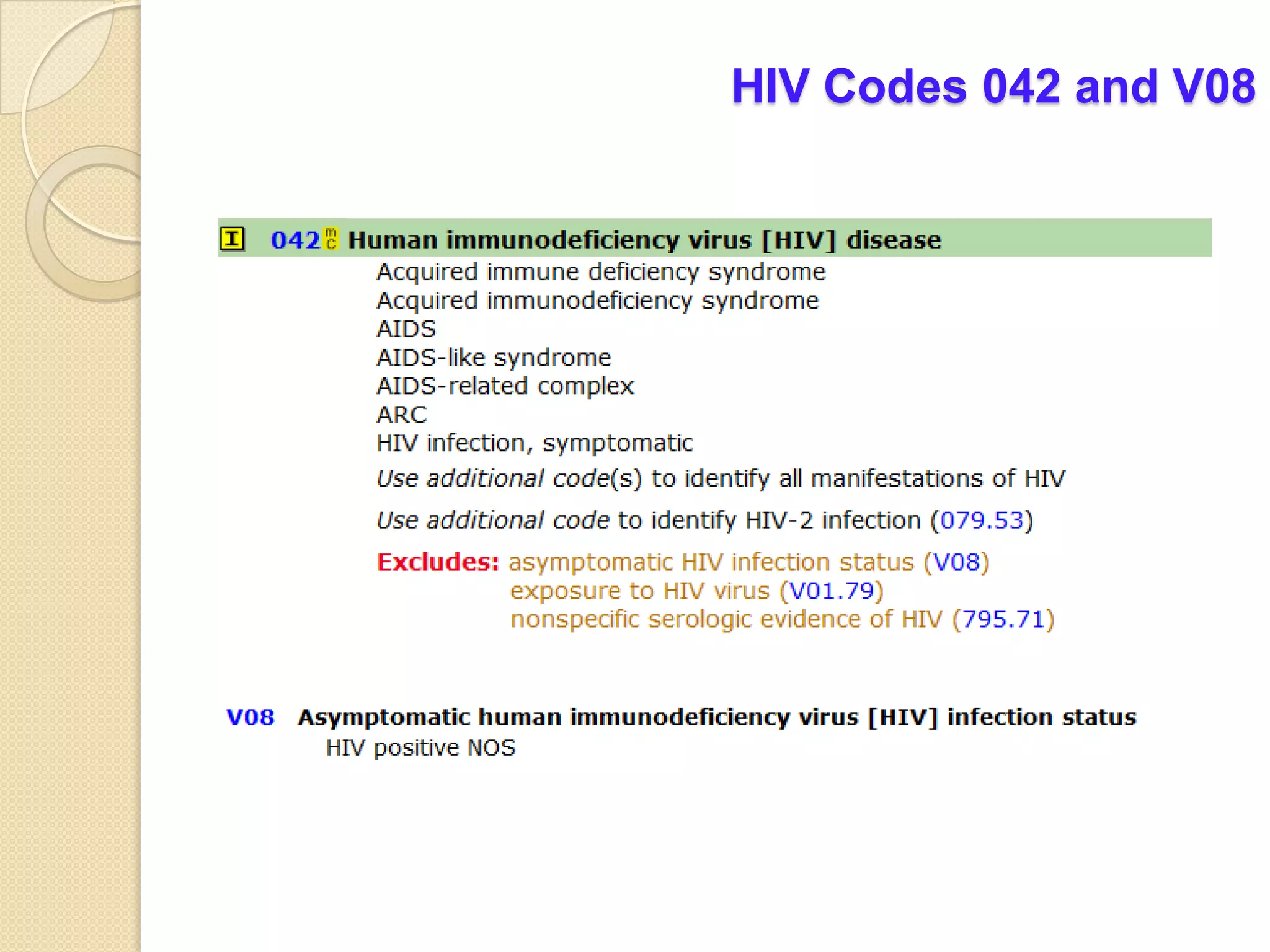
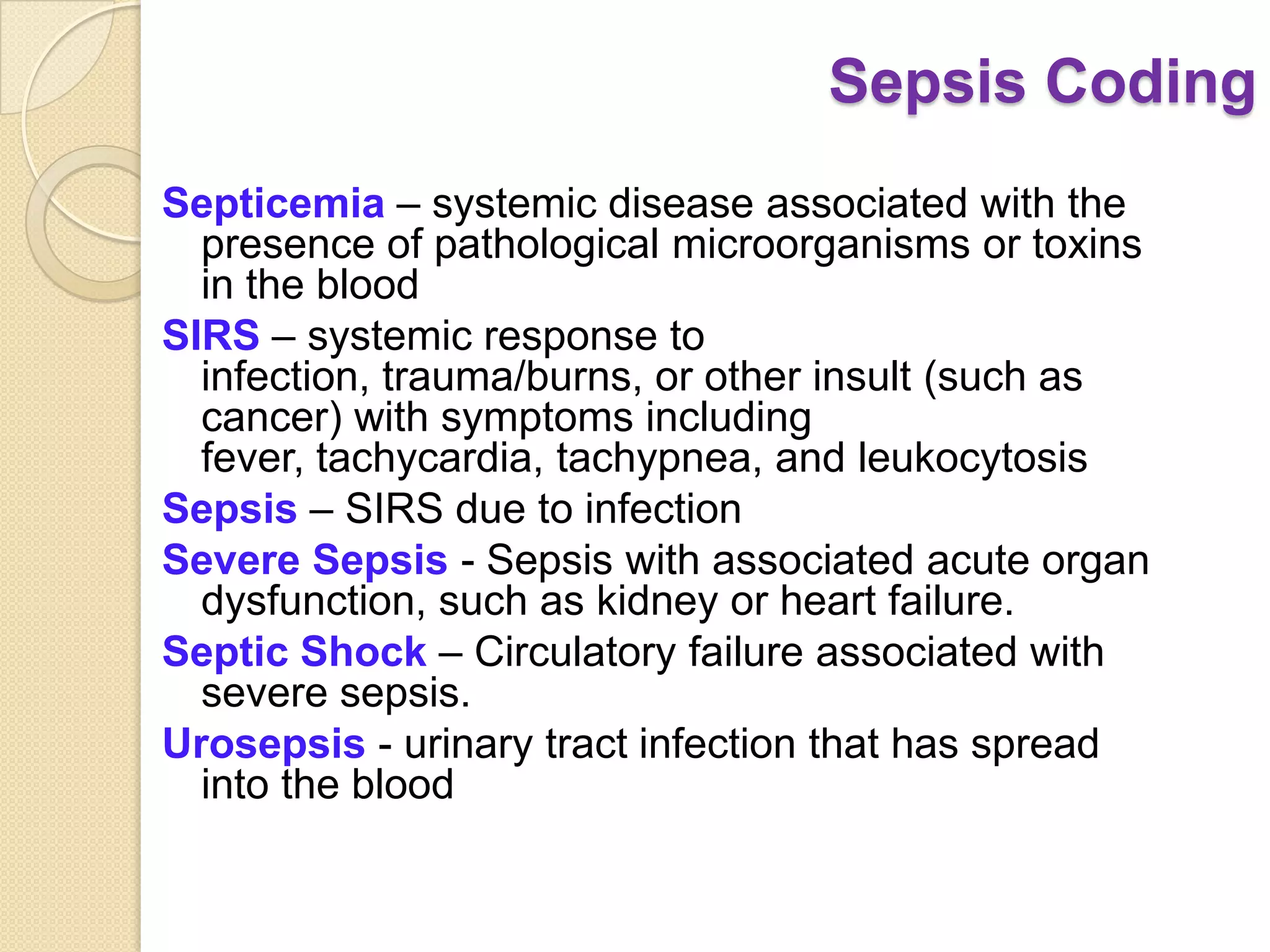

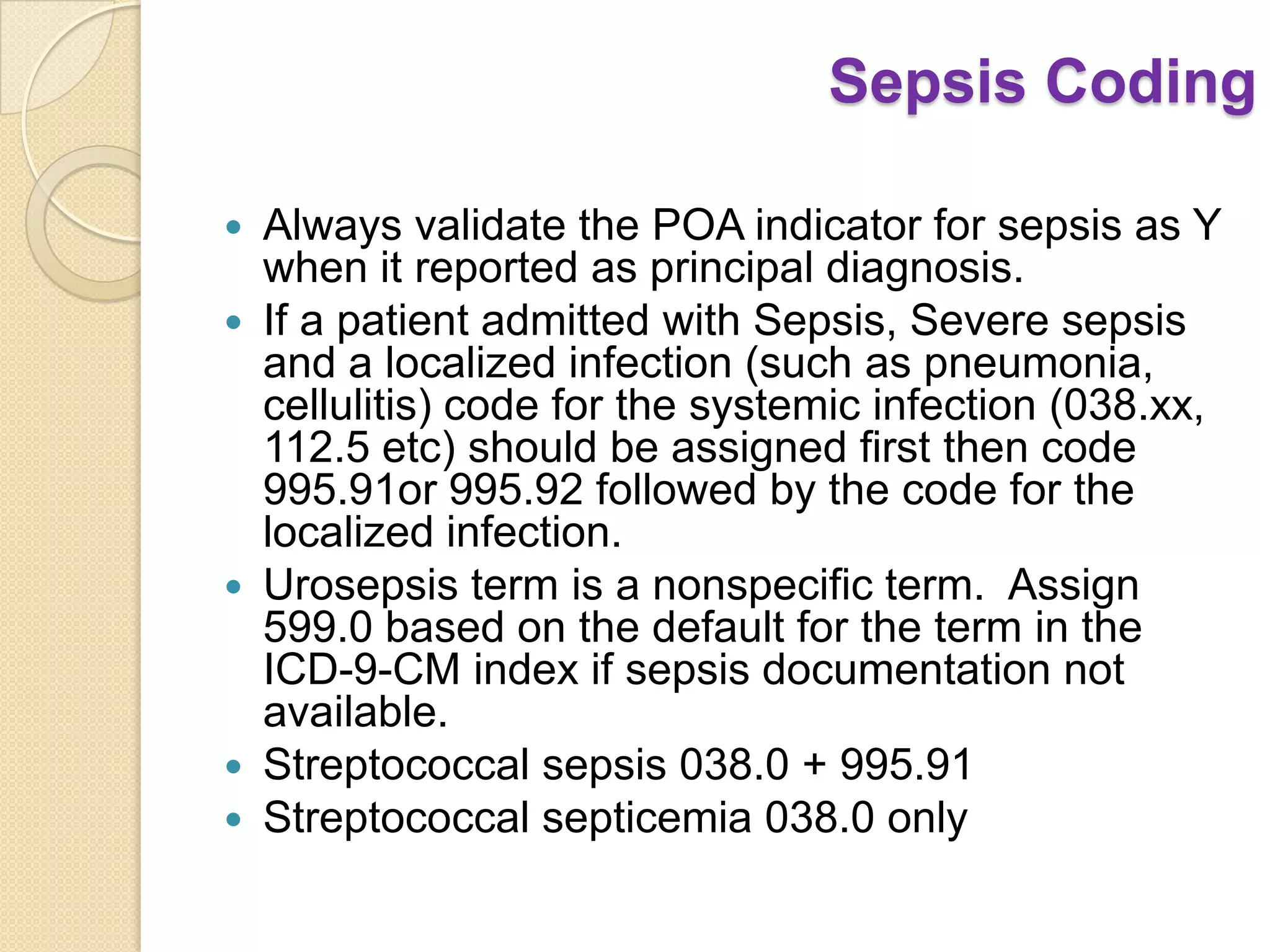
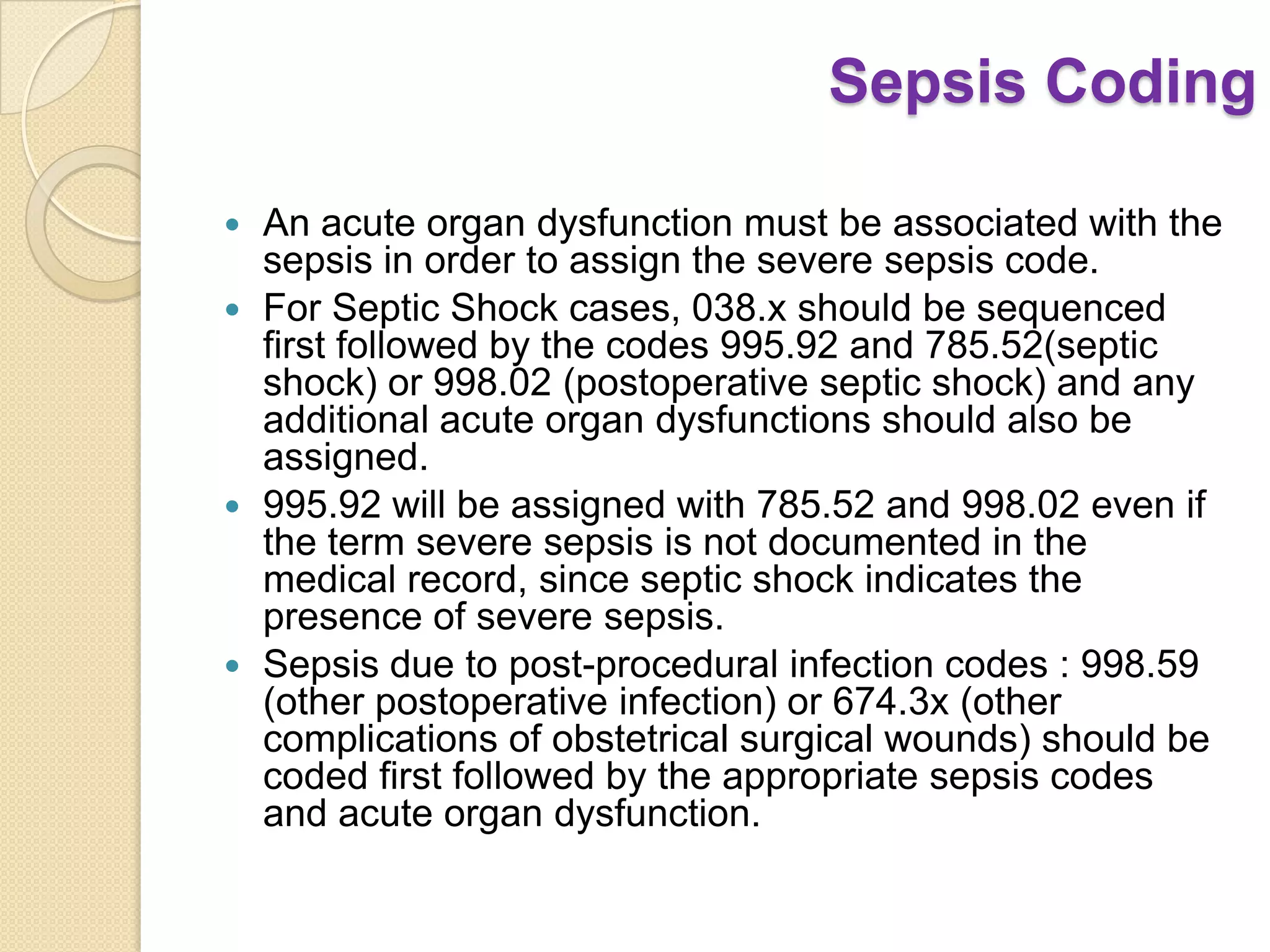
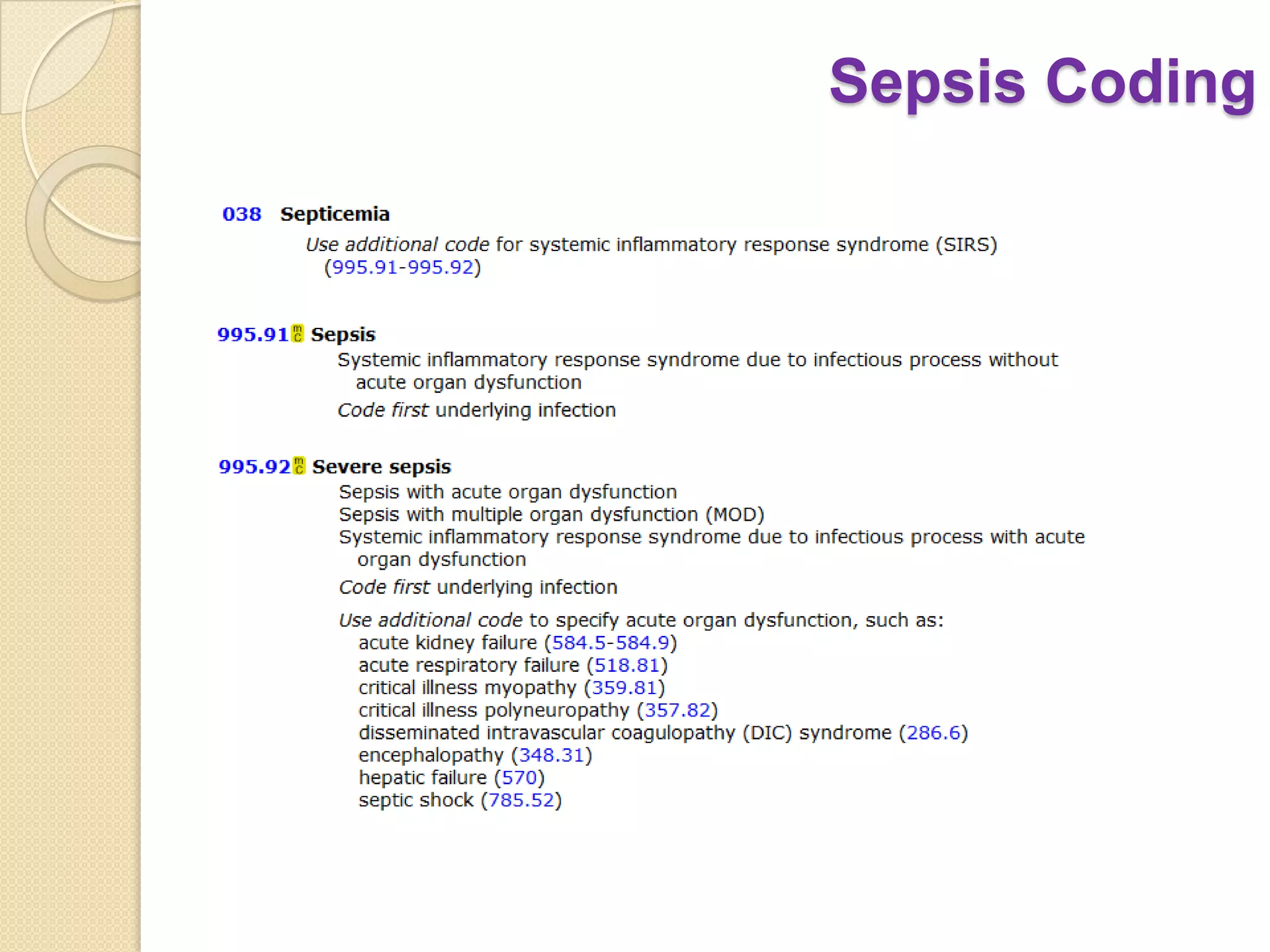
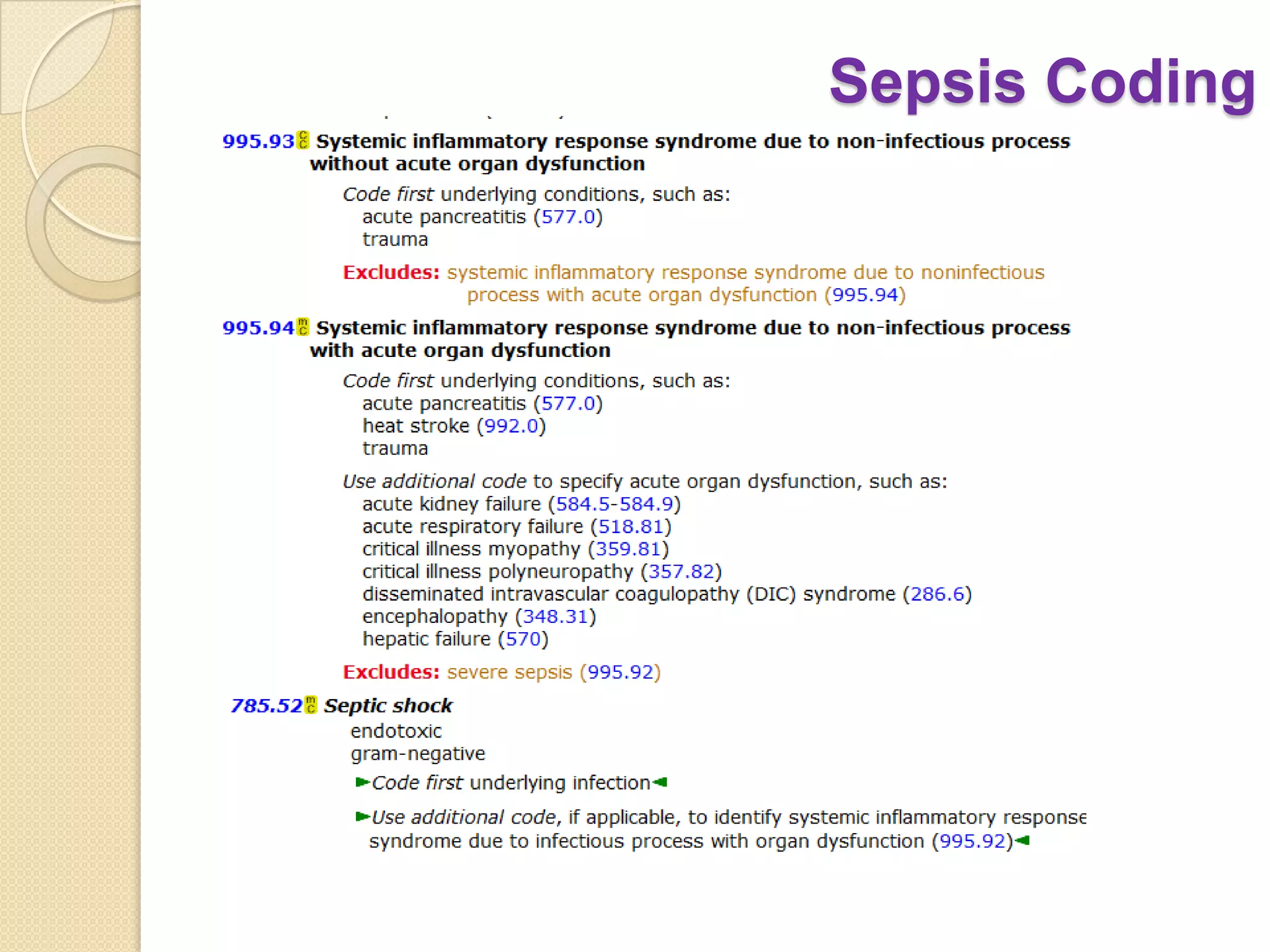
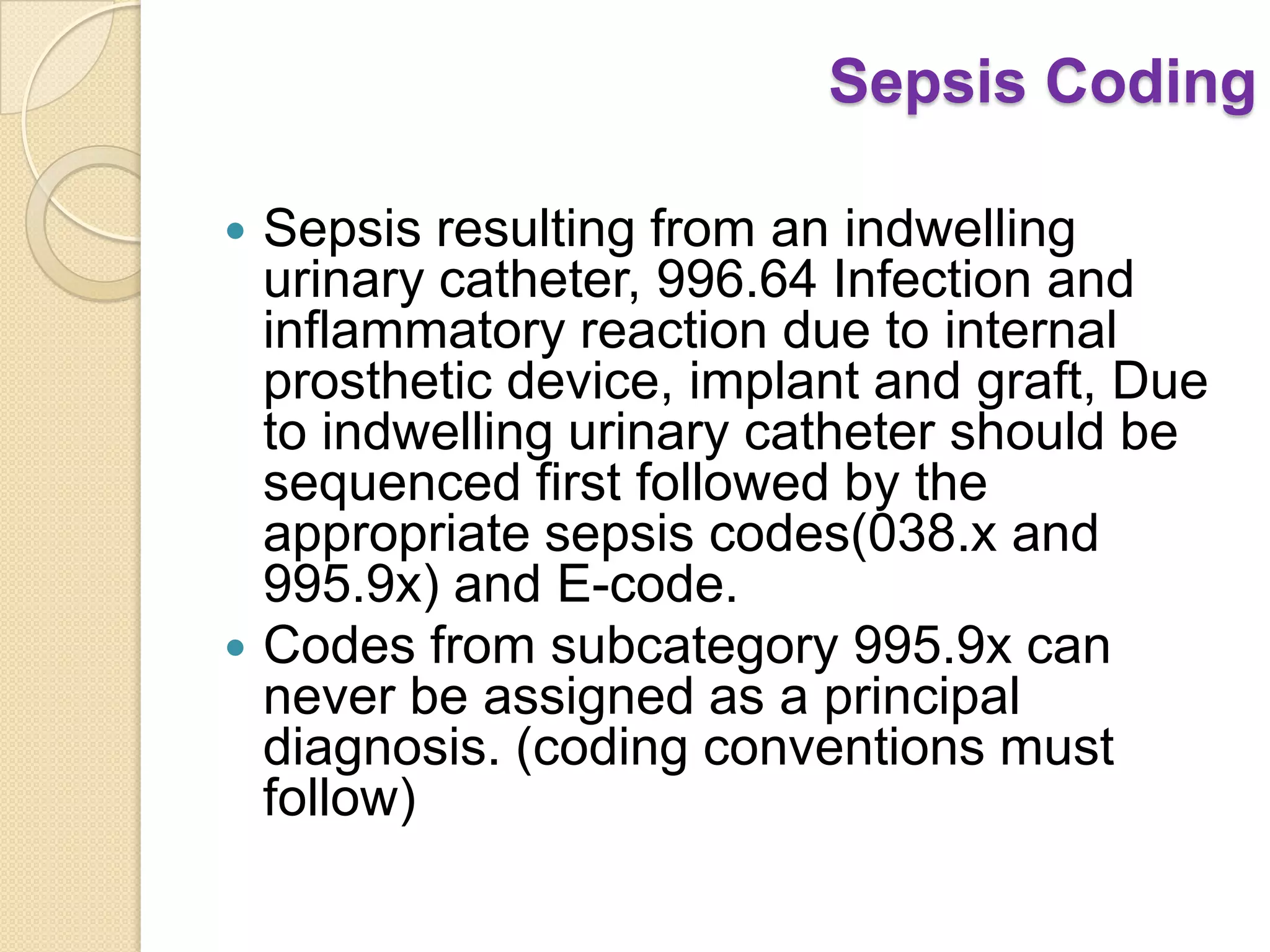
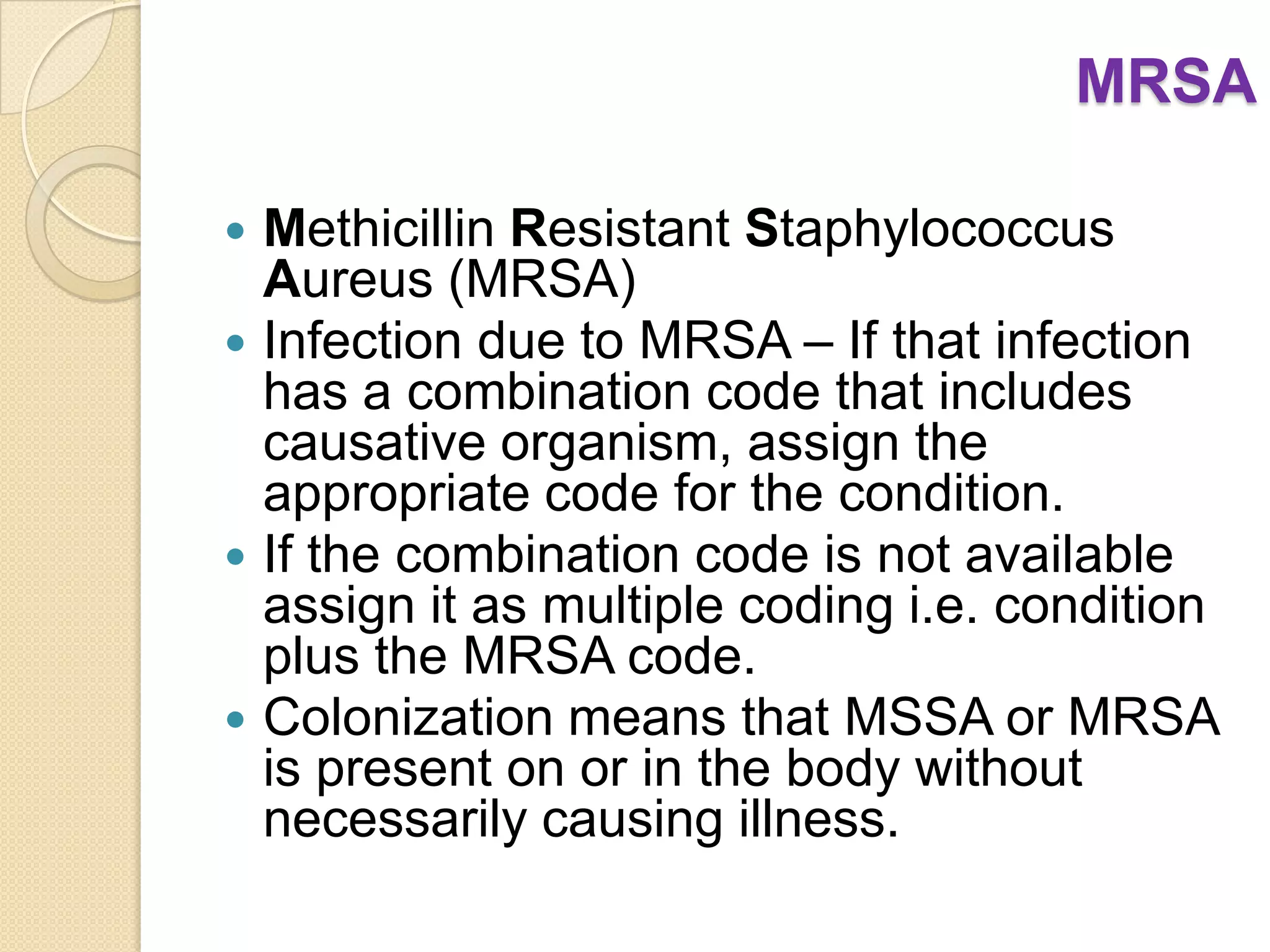
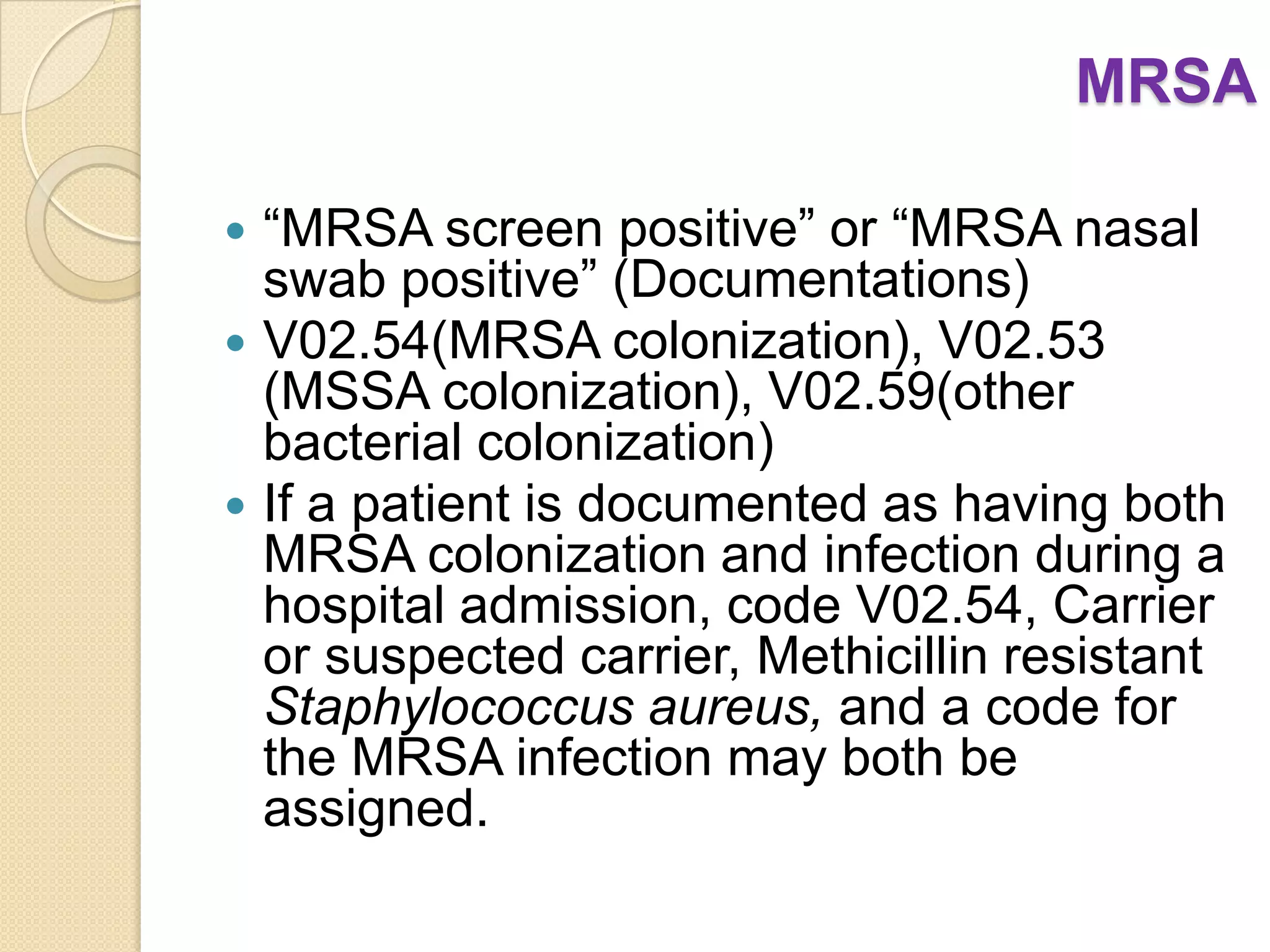
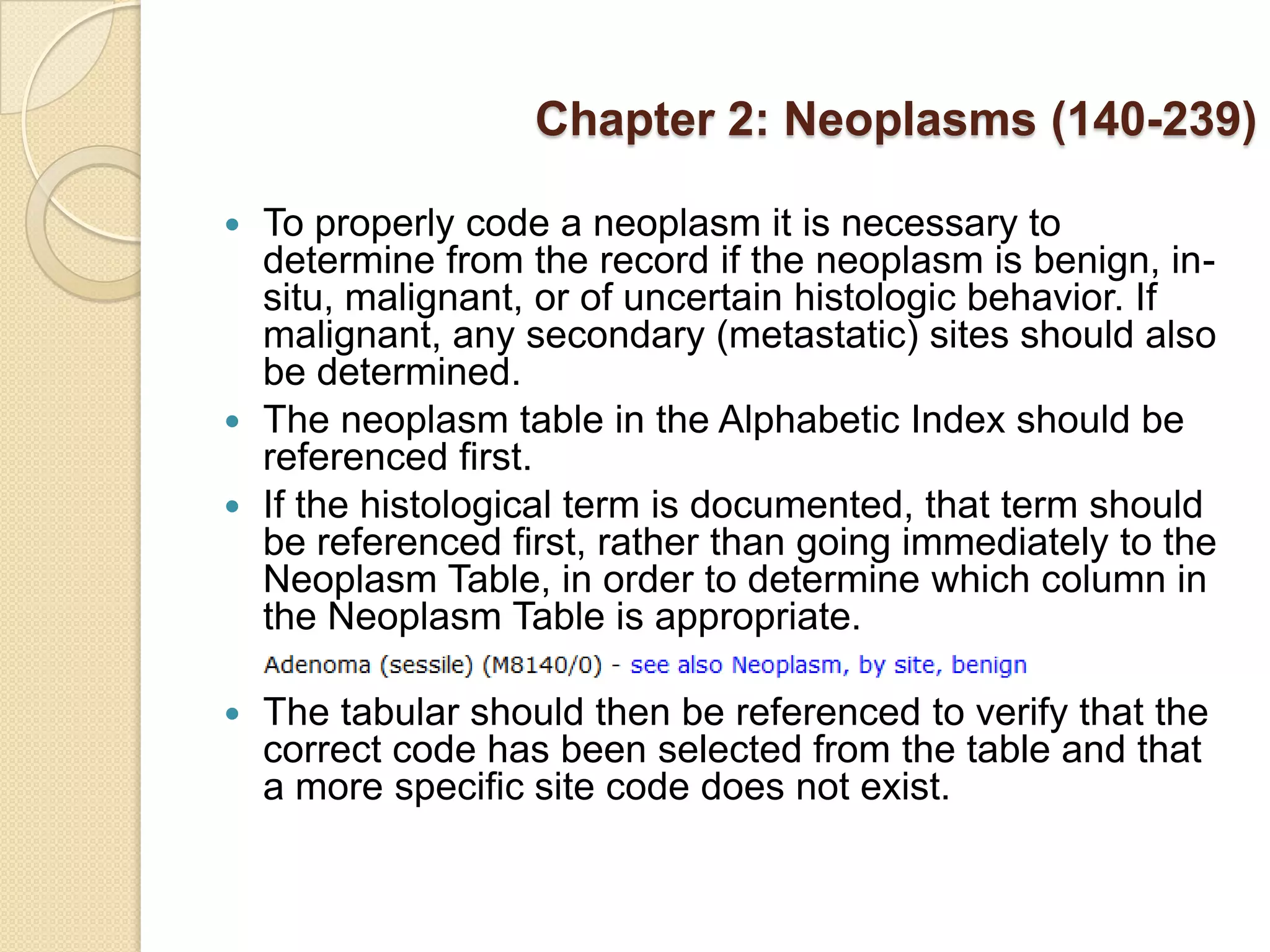
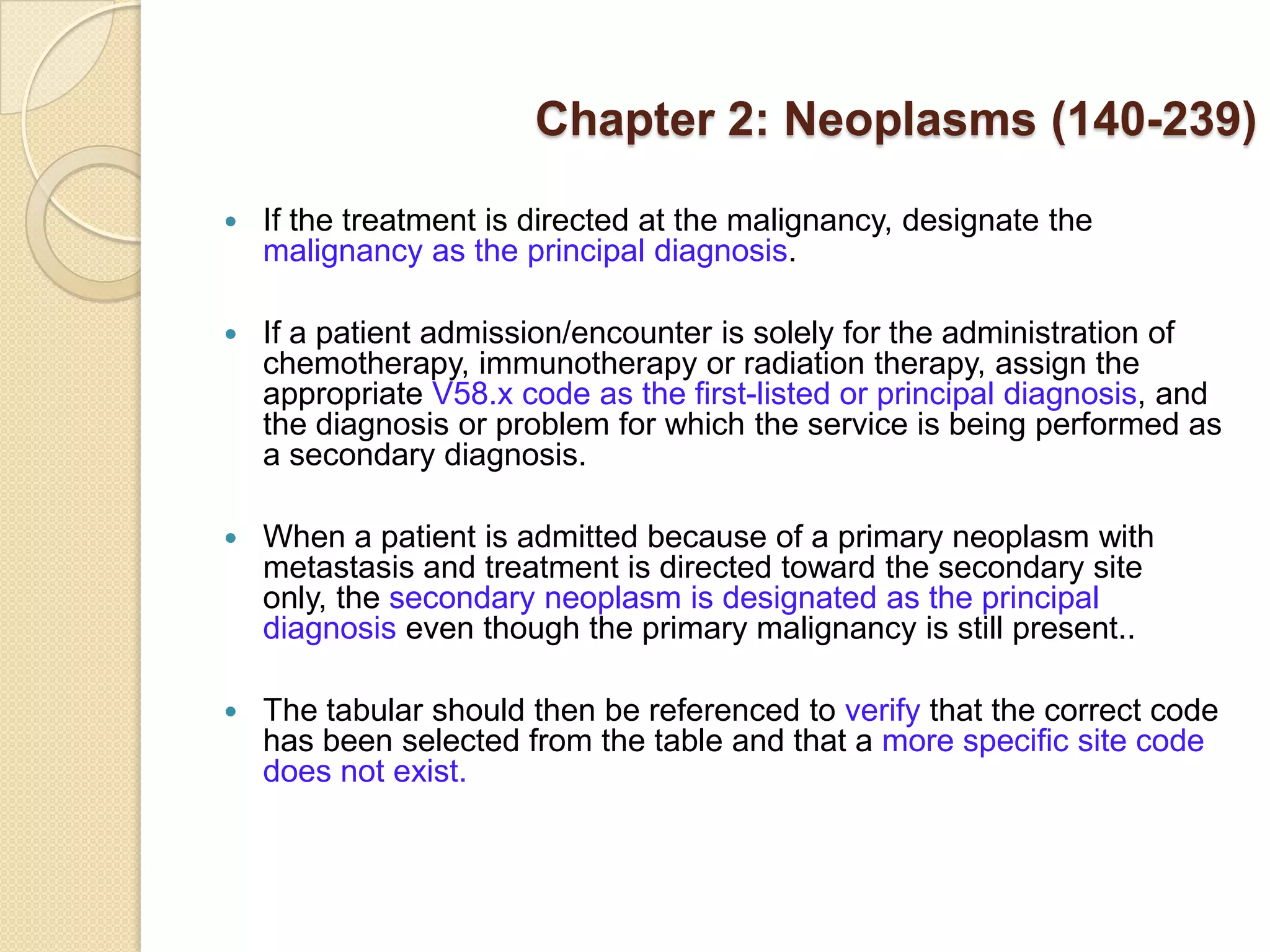

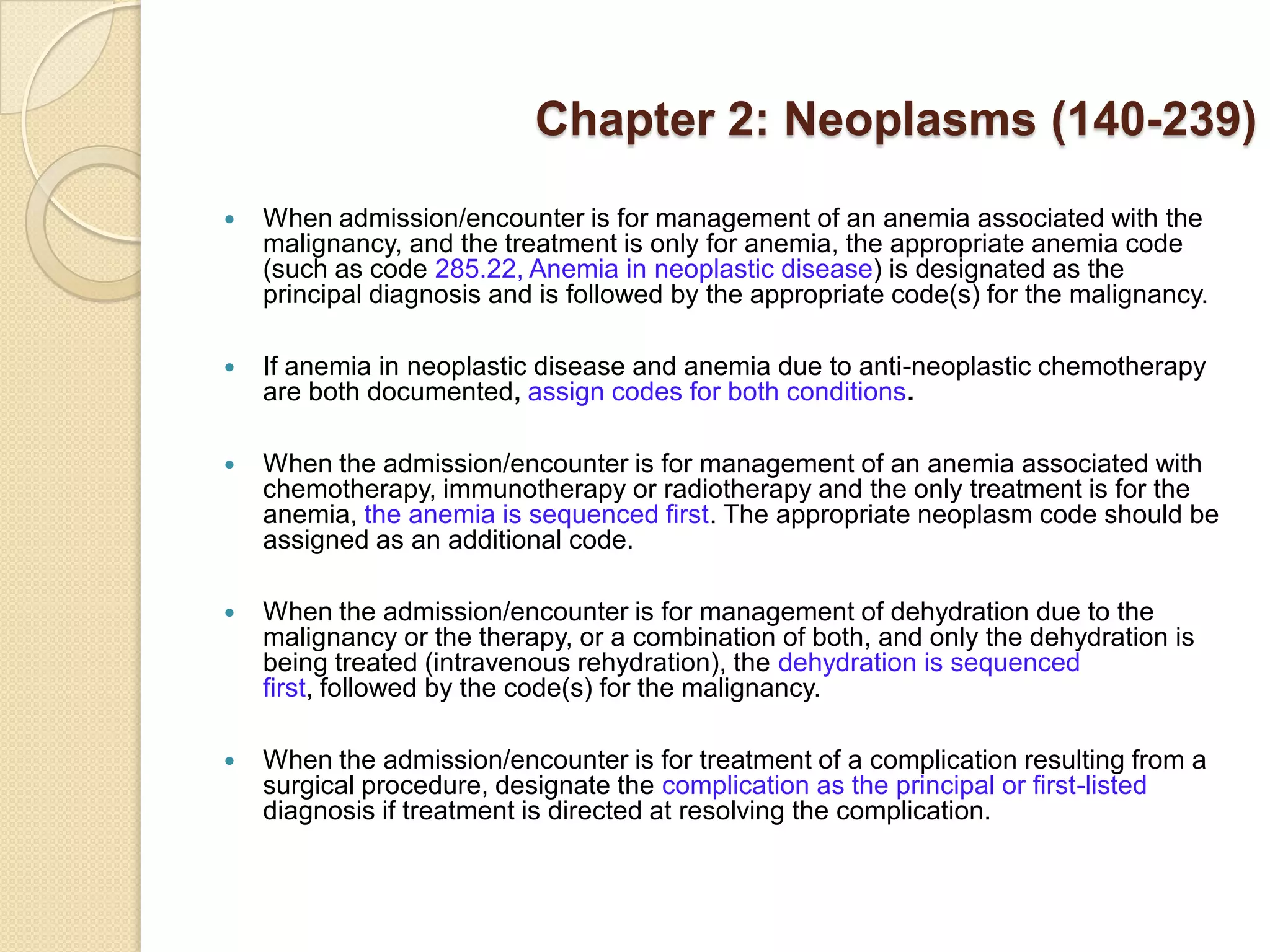

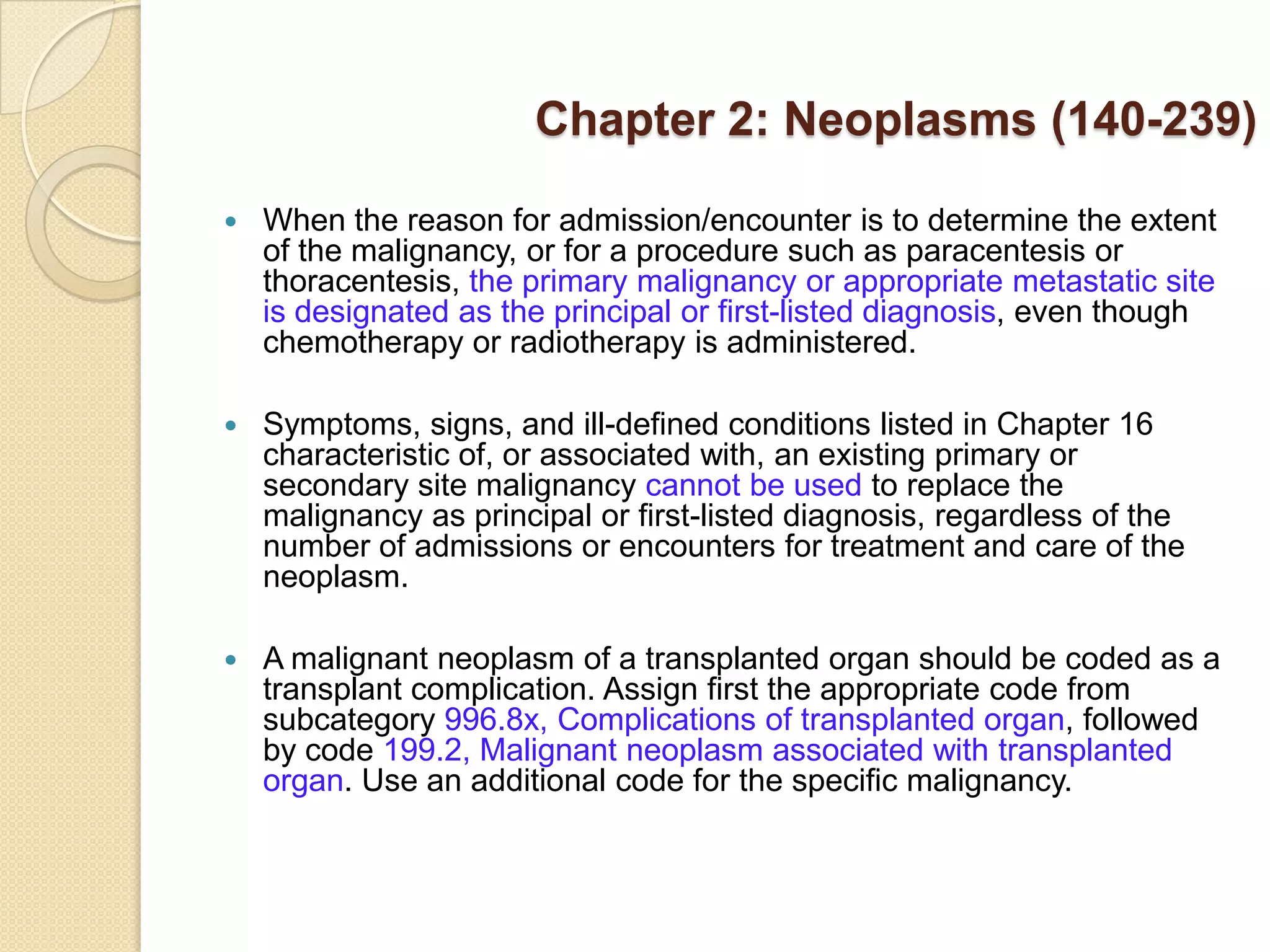
![Chapter 3: Endocrine, Nutritional, and Metabolic Diseases
& Immunity Disorders (240-279)
Diabetes Mellitus
Category 250 to identify complications/manifestations associated
with diabetes mellitus
The following are the fifth-digits for the codes under category 250:
0 type II or unspecified type, not stated as uncontrolled
1 type I, [juvenile type], not stated as uncontrolled
2 type II or unspecified type, uncontrolled
3 type I, [juvenile type], uncontrolled
If the type of diabetes mellitus is not documented in the medical
record the default is type II.
Patients who routinely use insulin, code V58.67, Long-term (current)
use of insulin, should also be assigned to indicate that the patient
uses insulin.](https://image.slidesharecdn.com/medicalcoding-120702214422-phpapp02/75/Medical-coding-and-ICD9CM-review-57-2048.jpg)
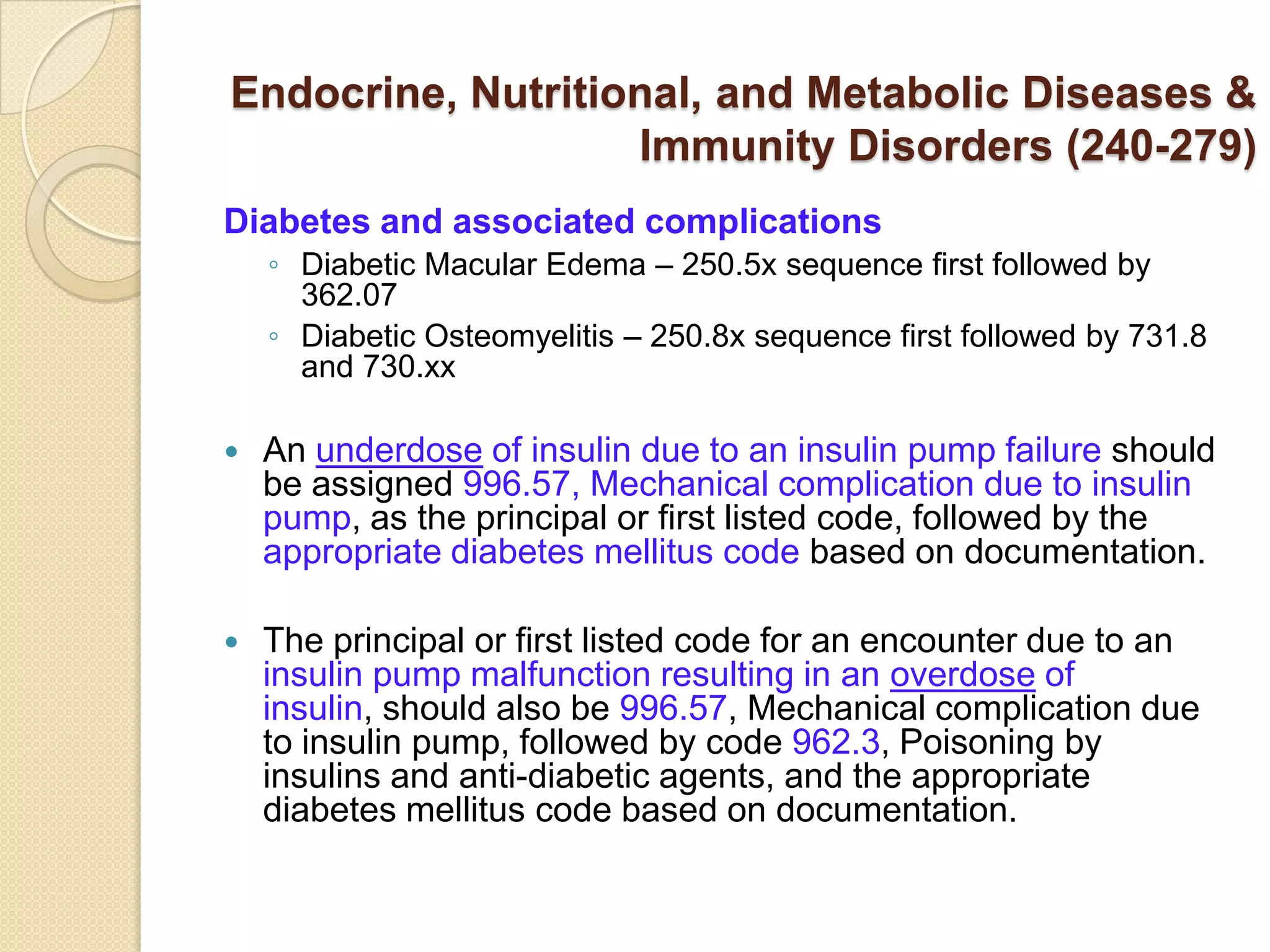

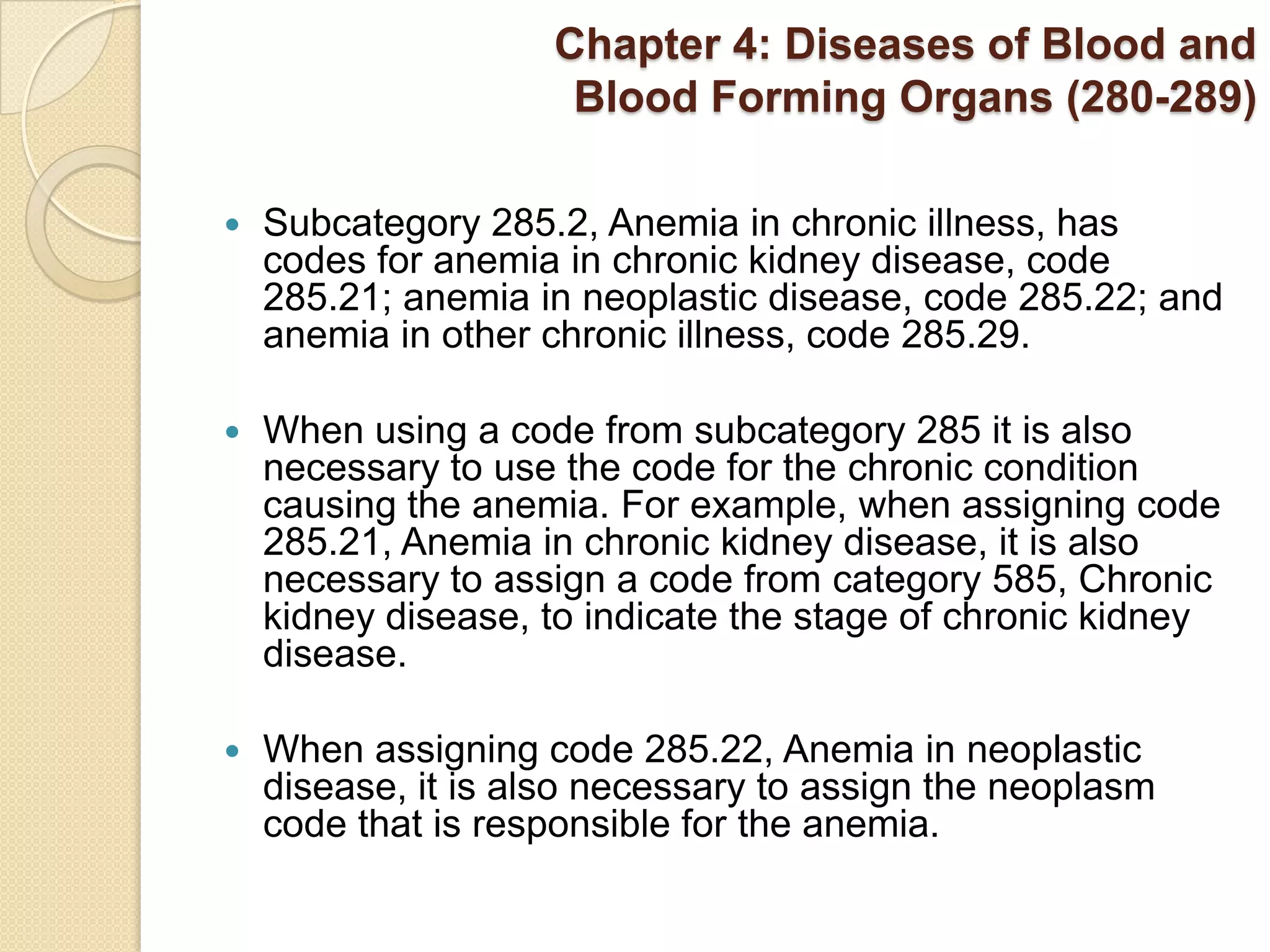

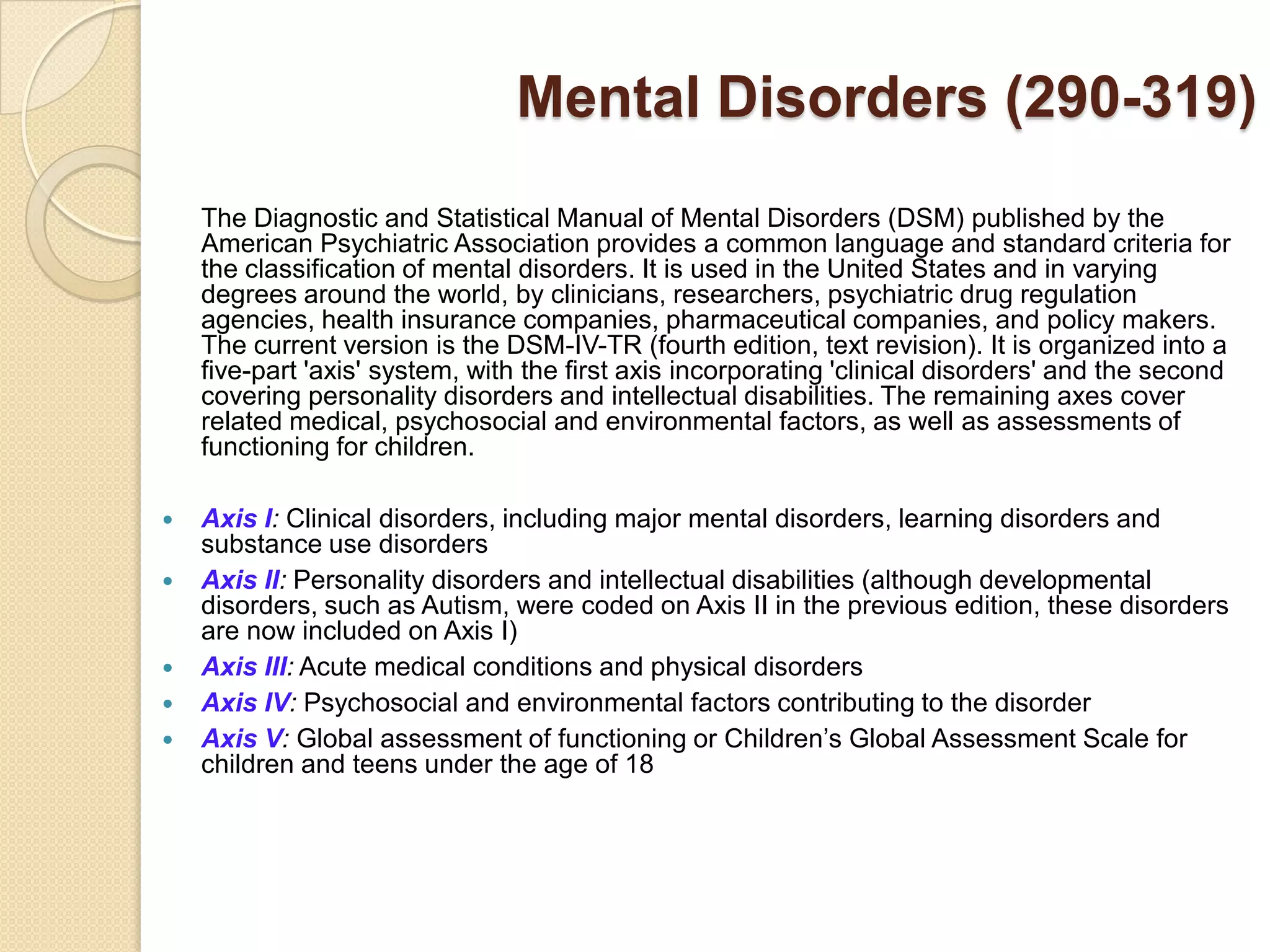
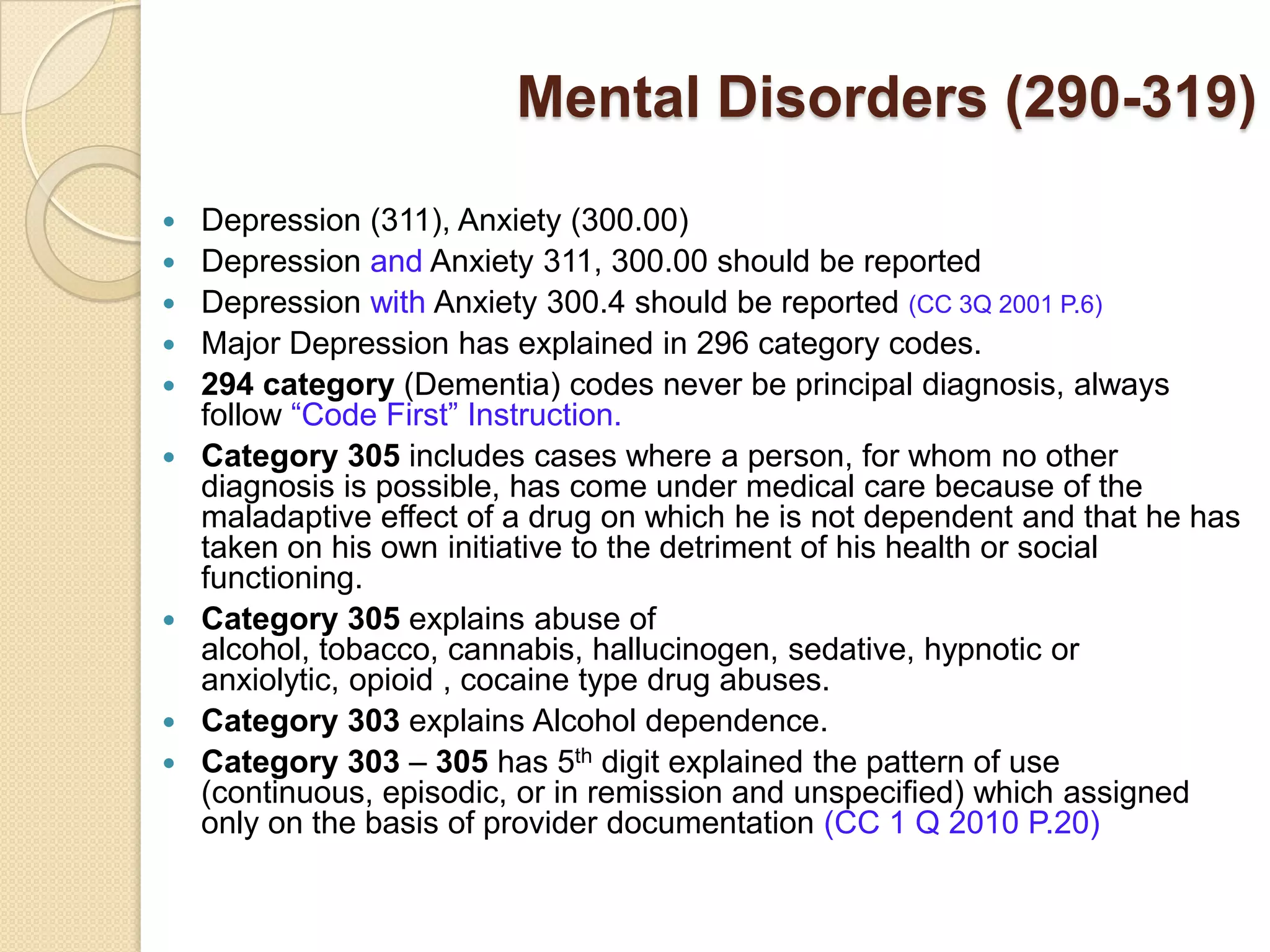
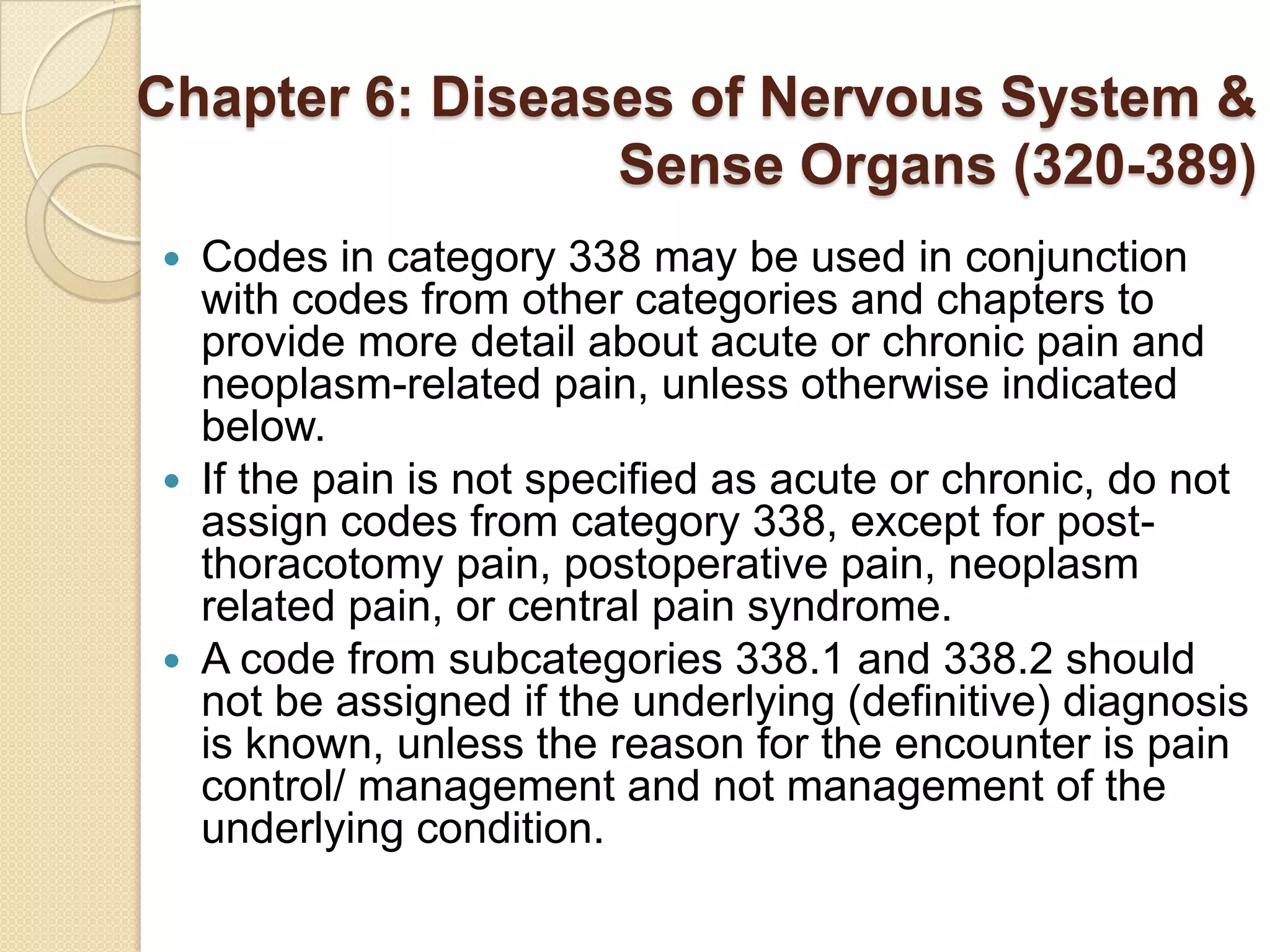
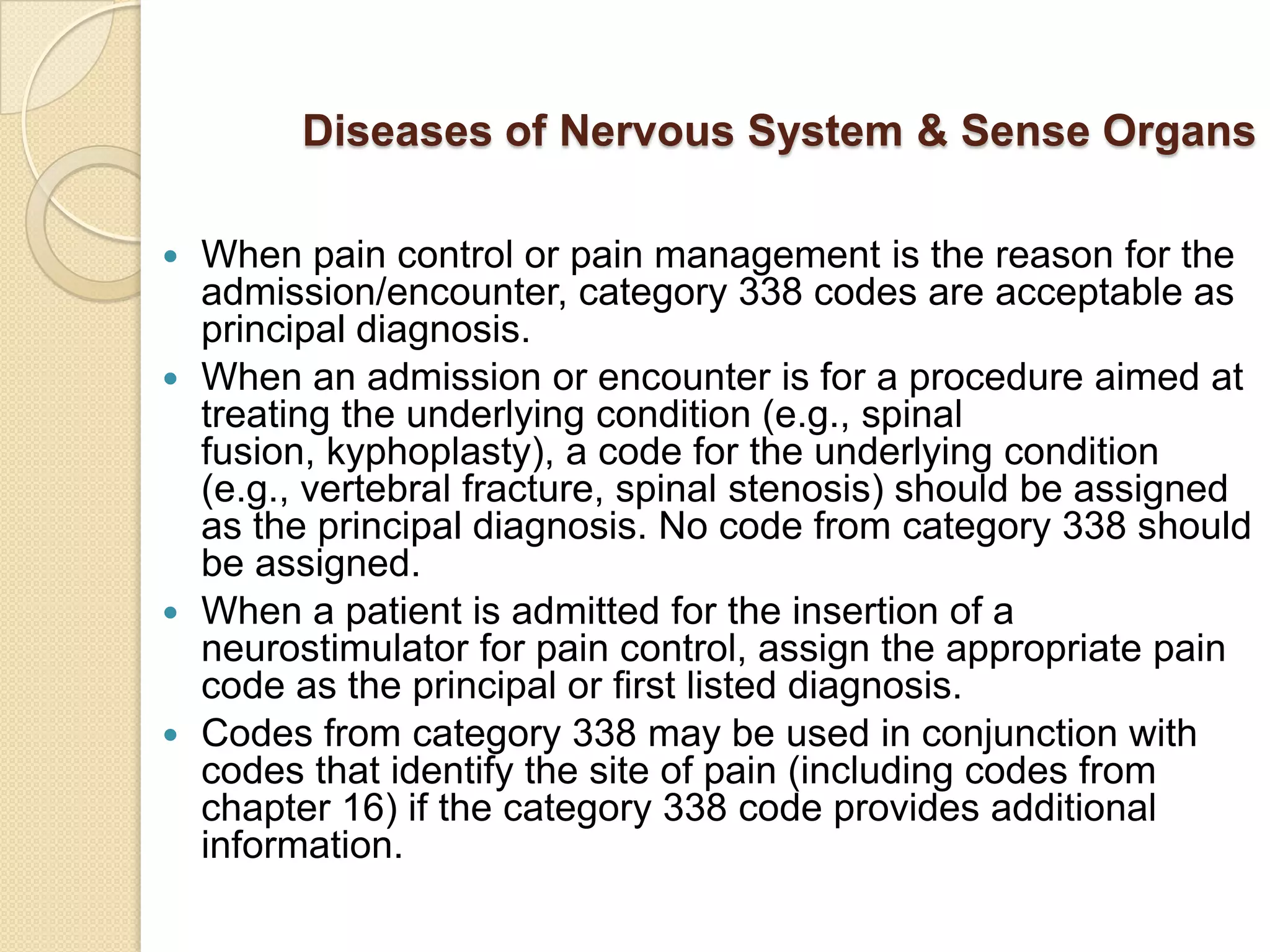
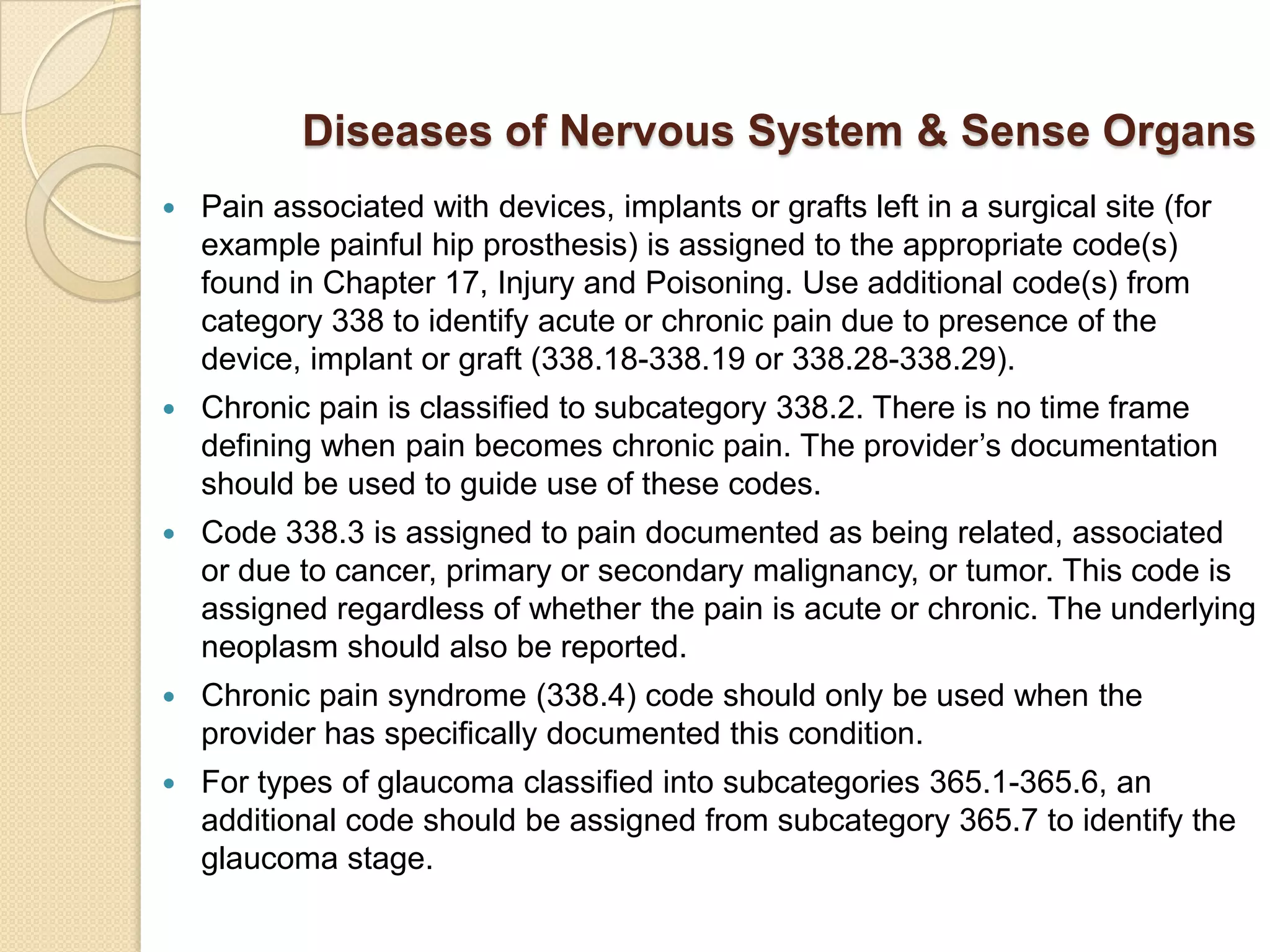
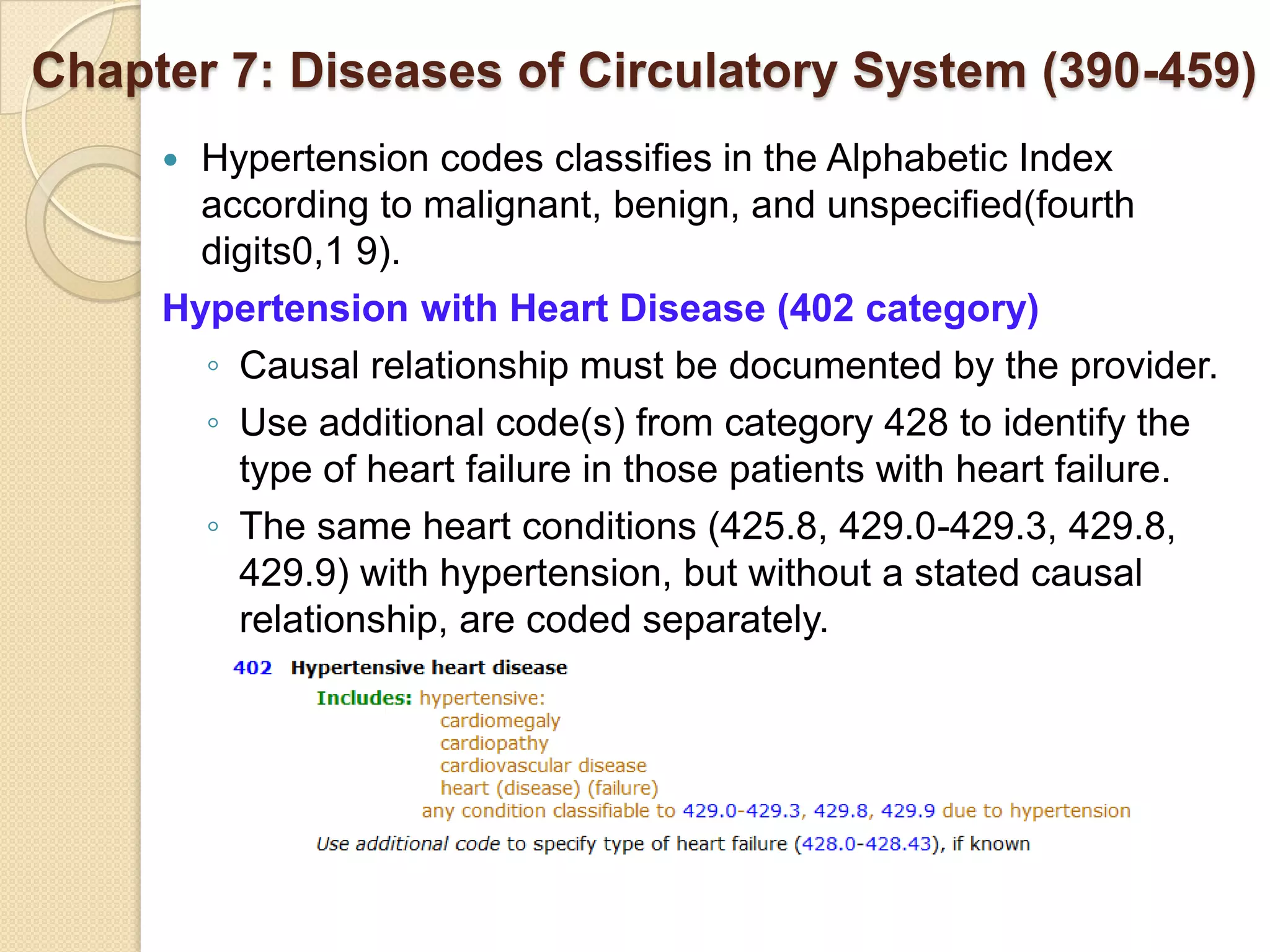

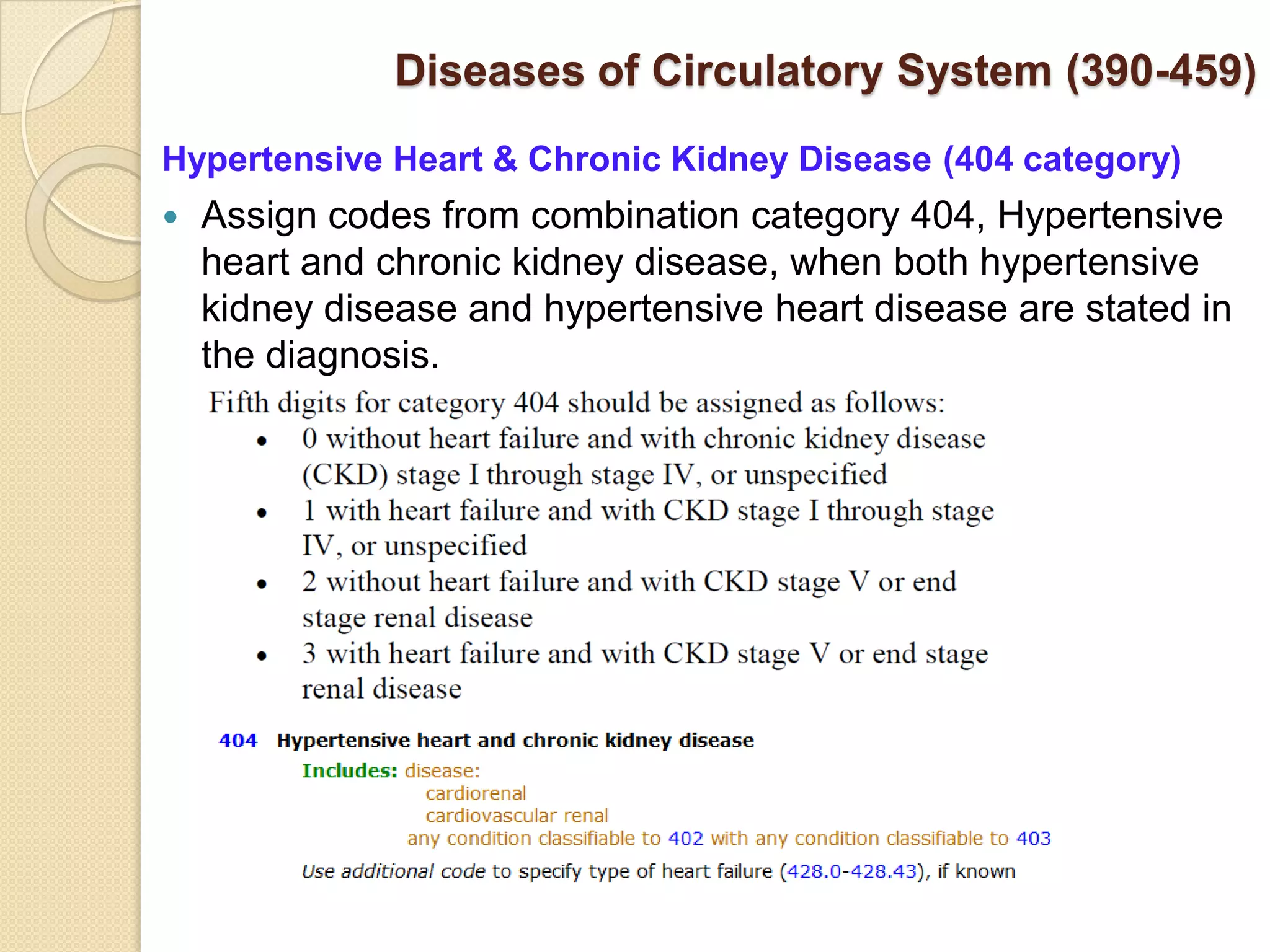
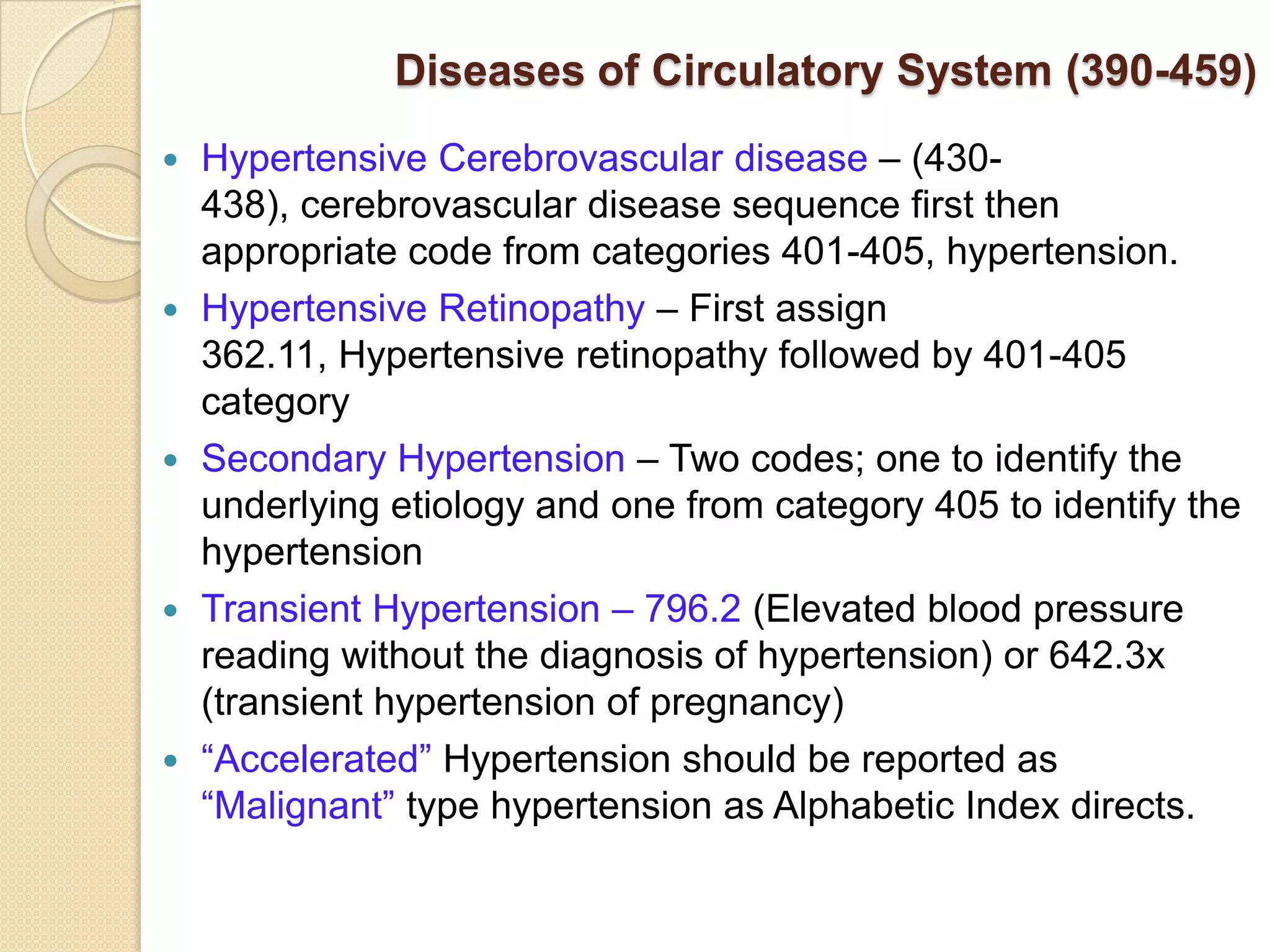
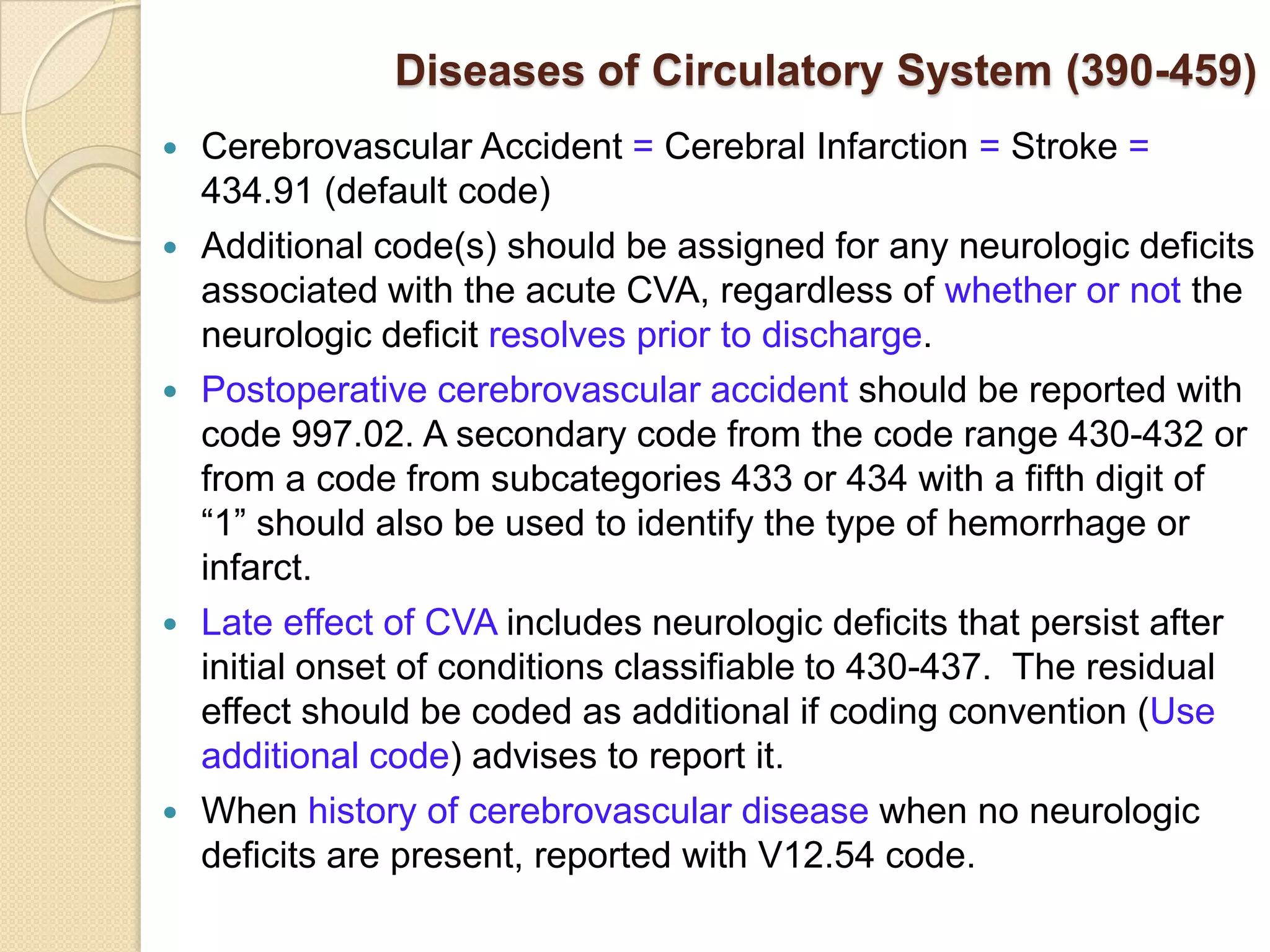
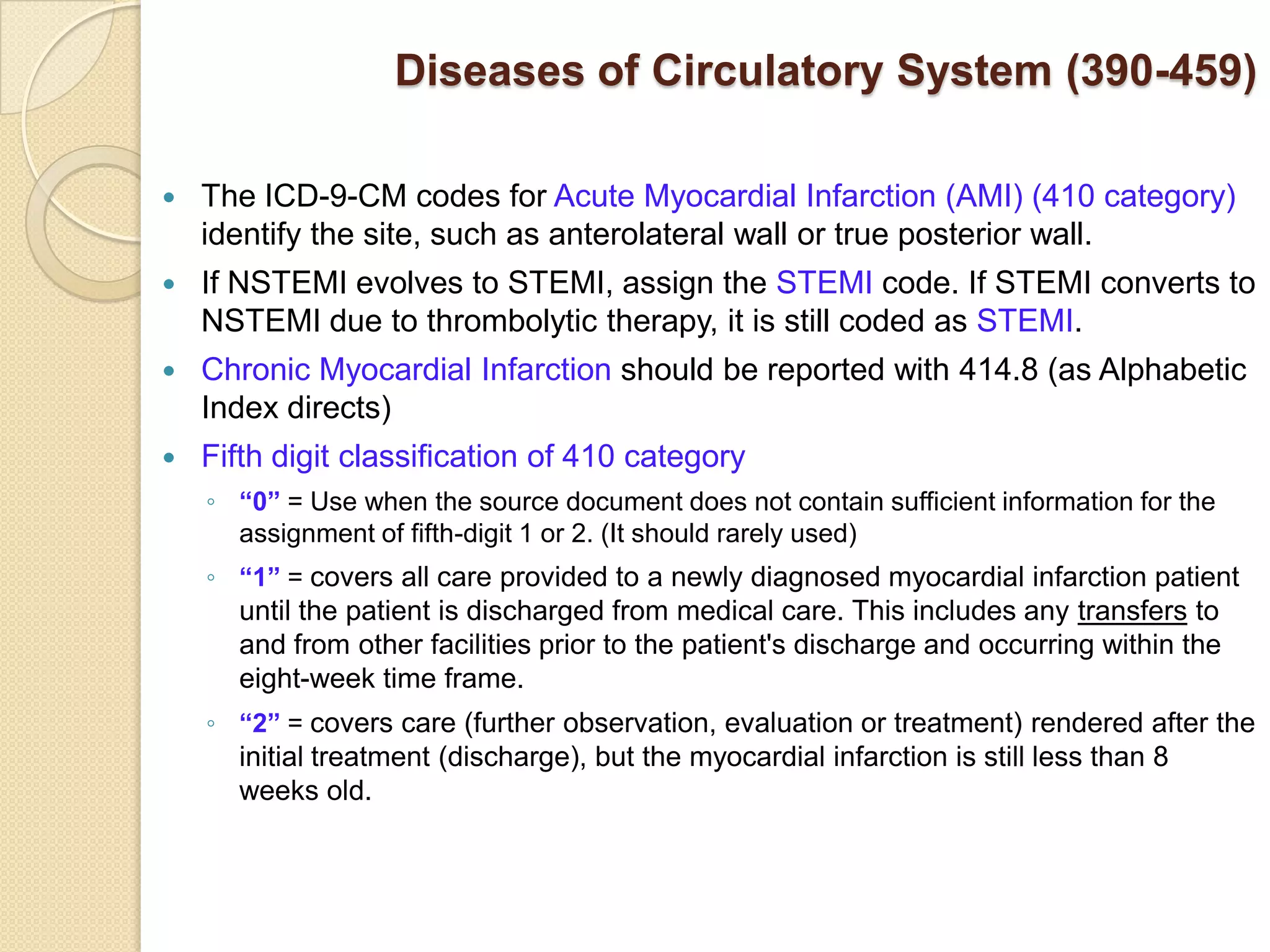
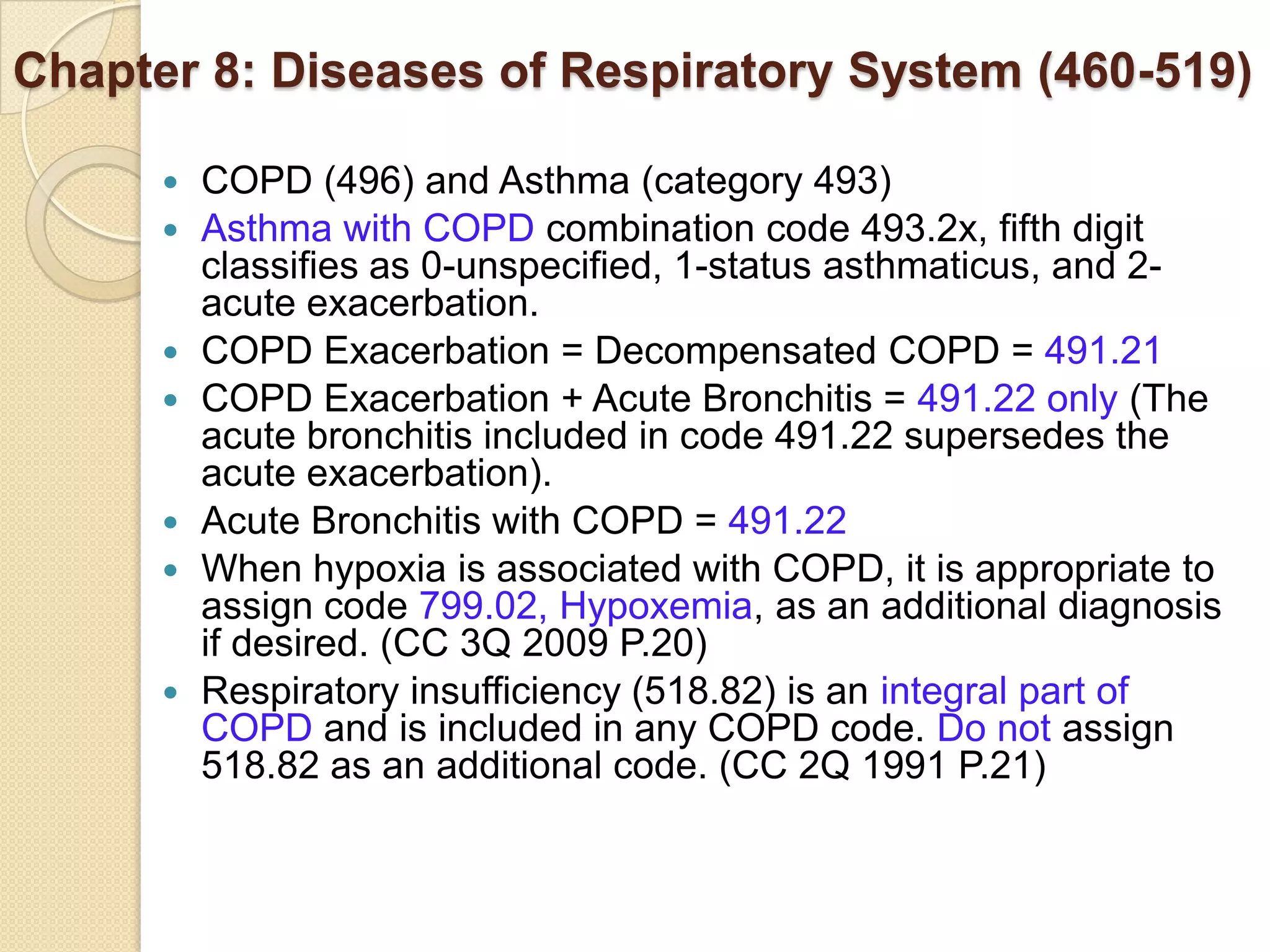
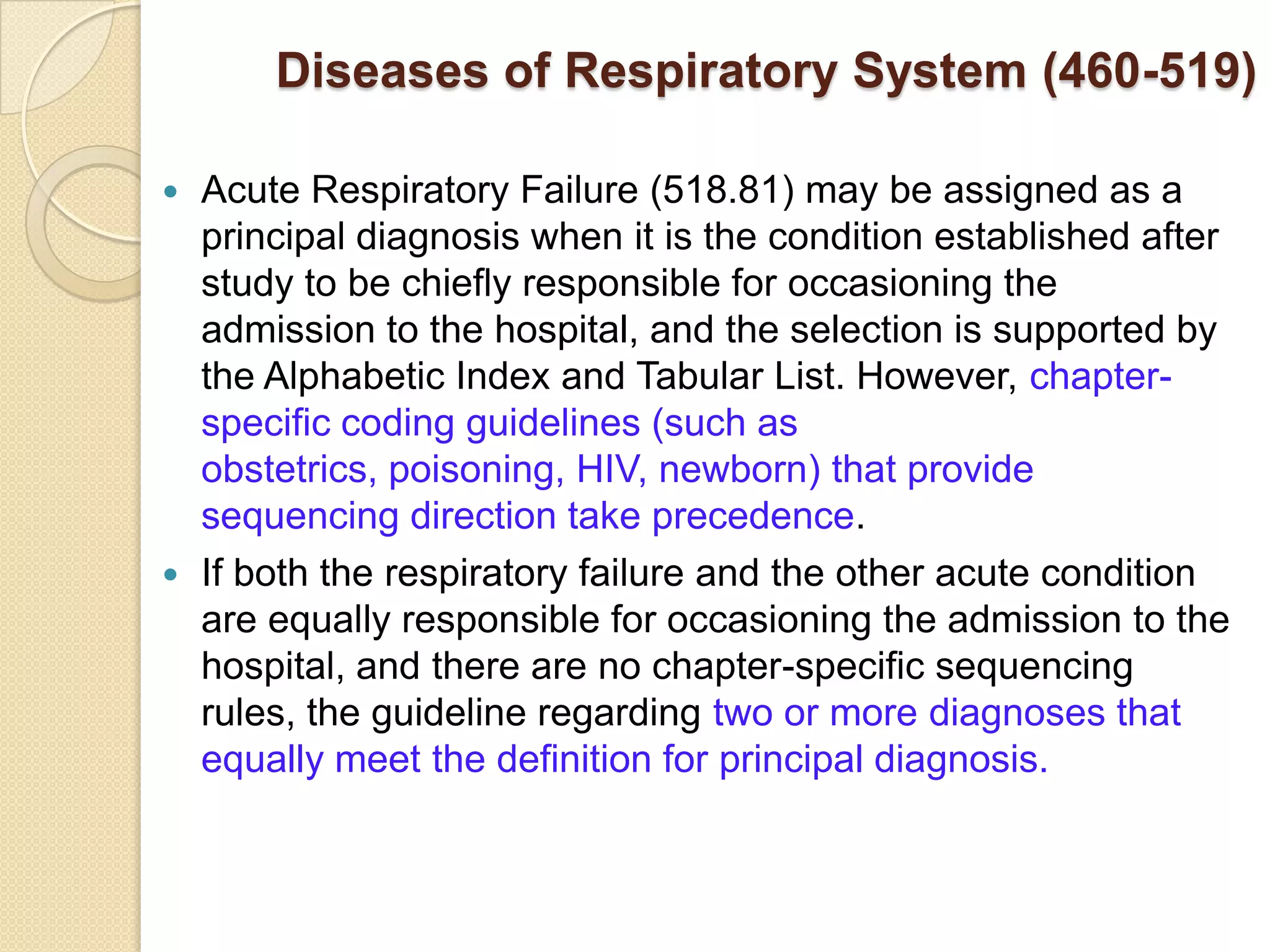


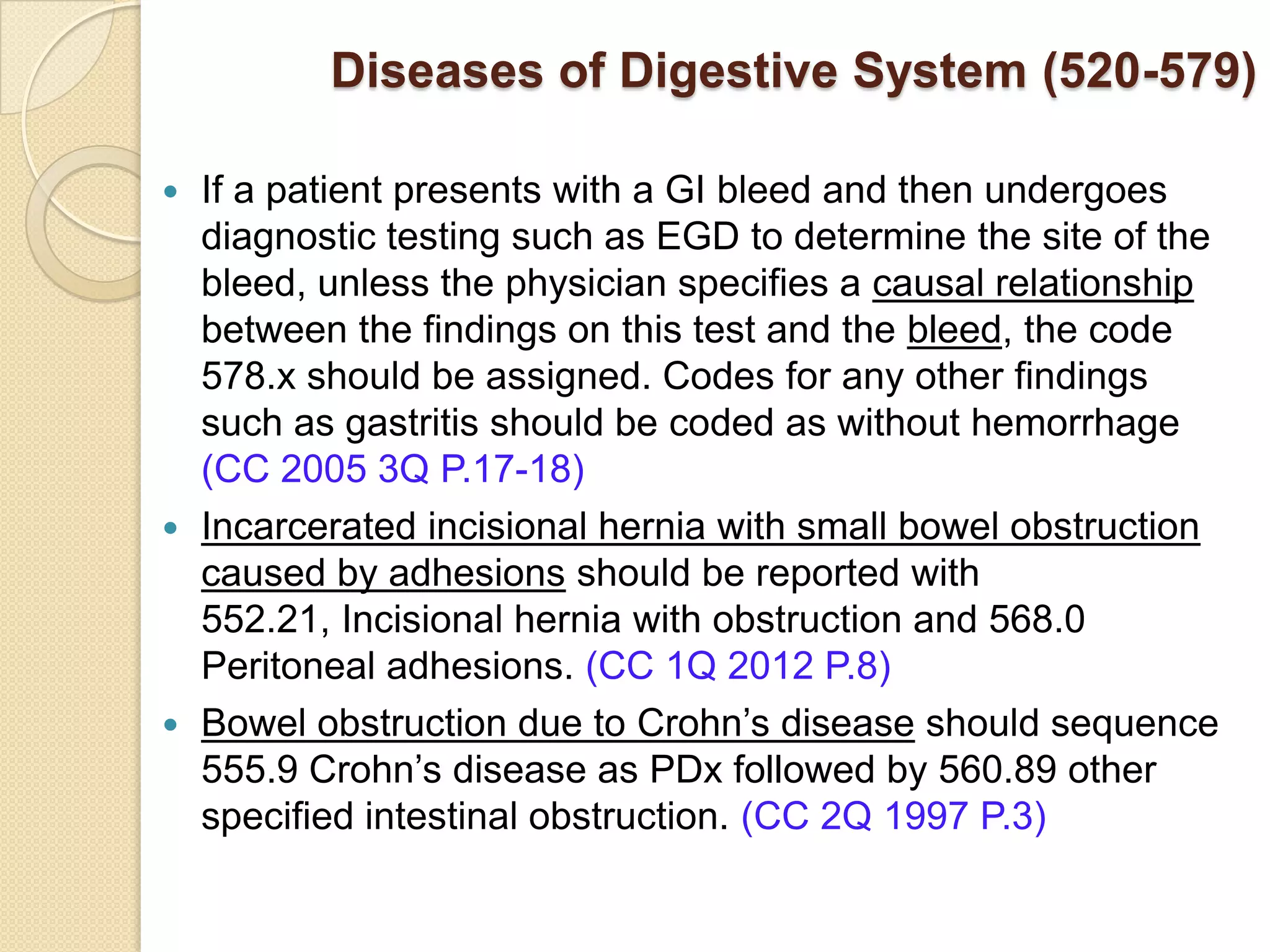
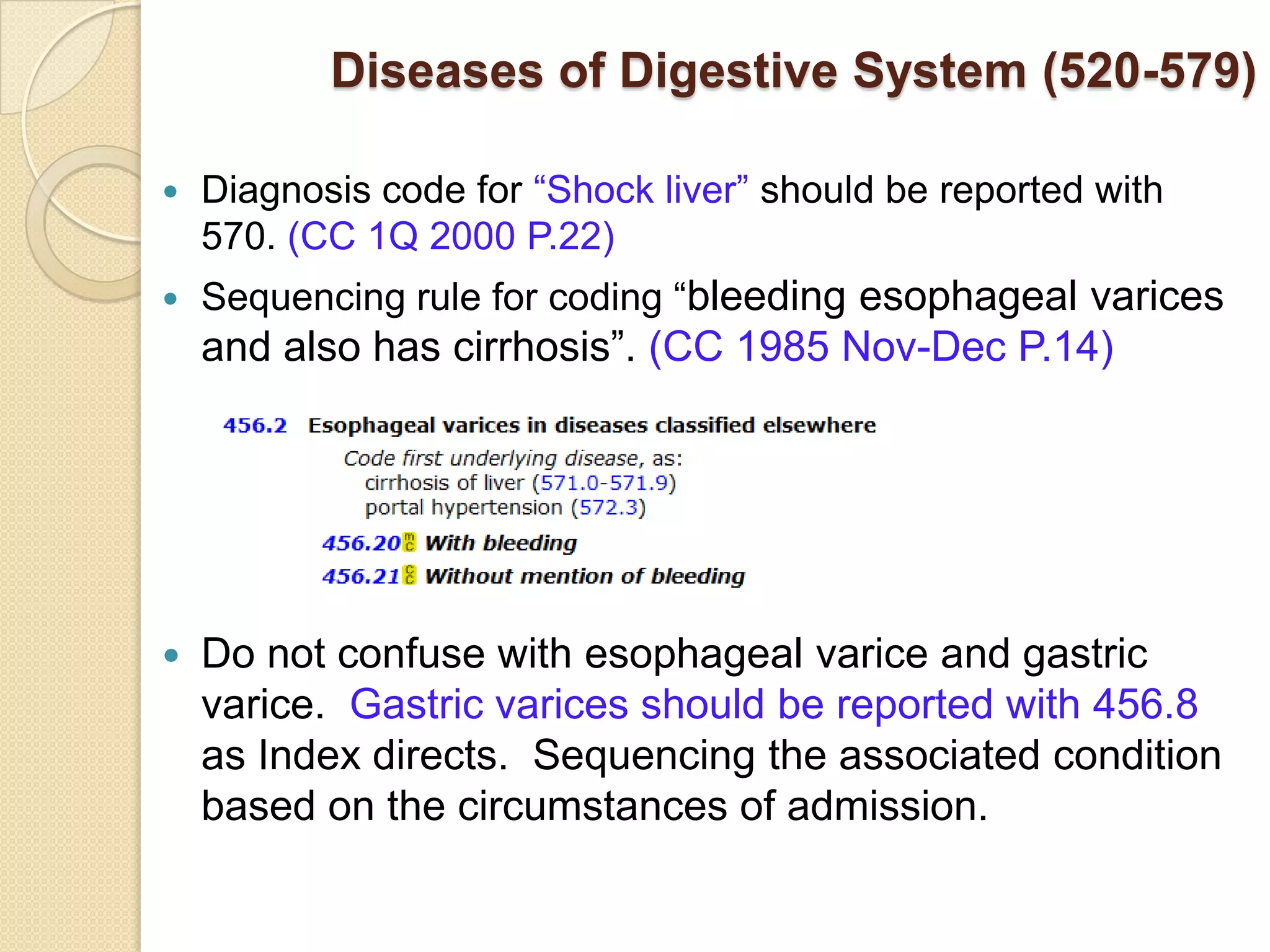
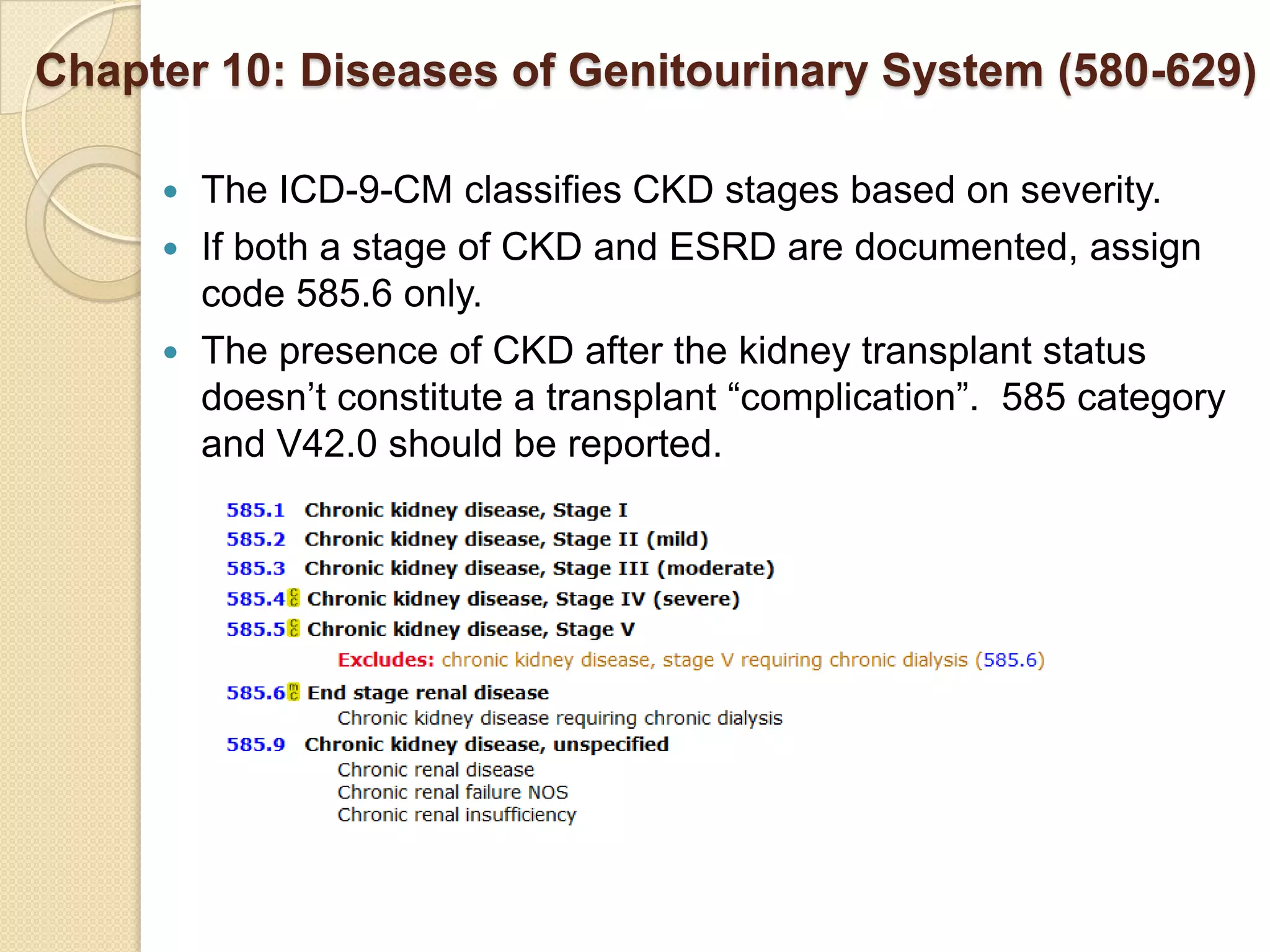
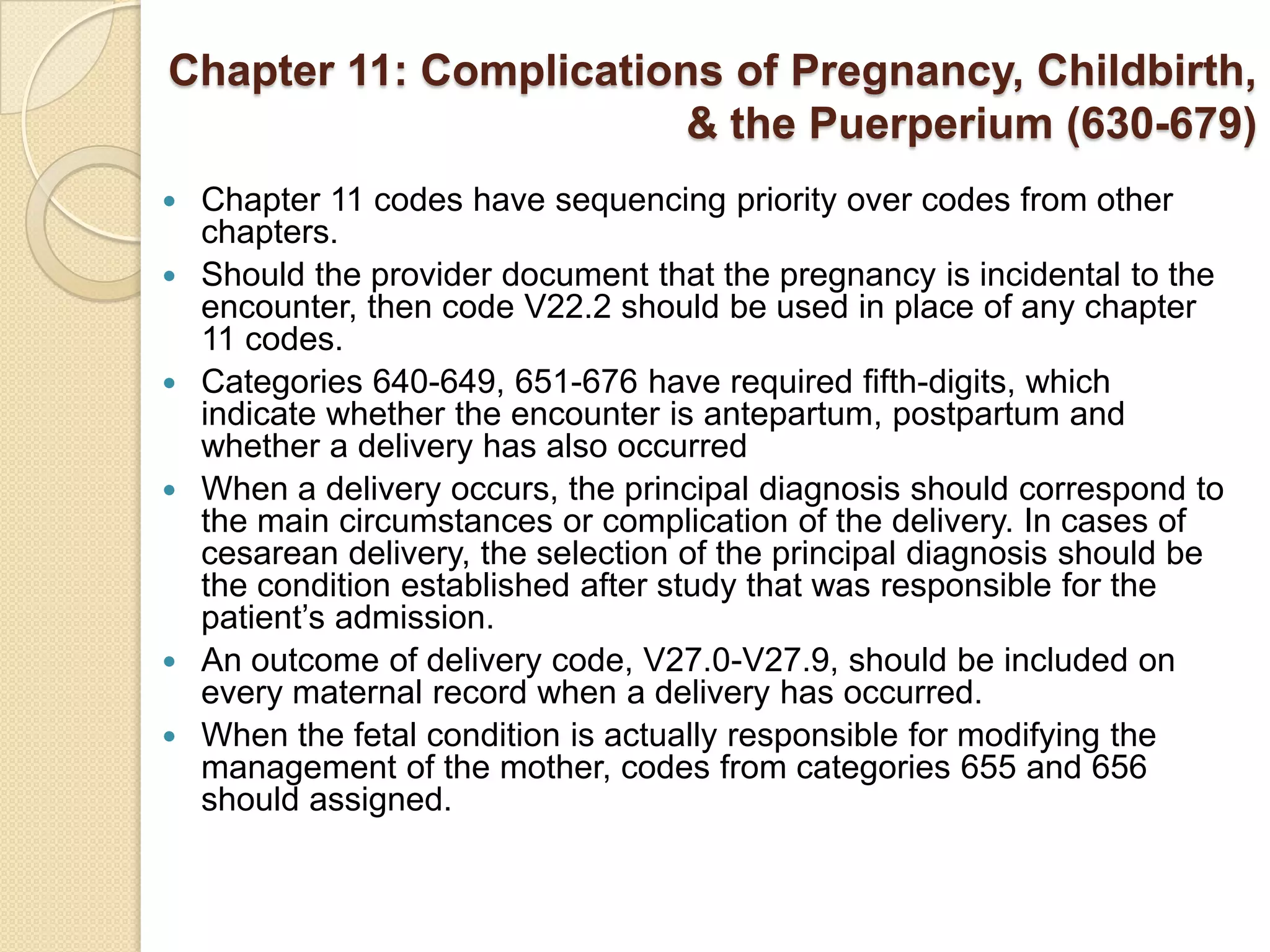
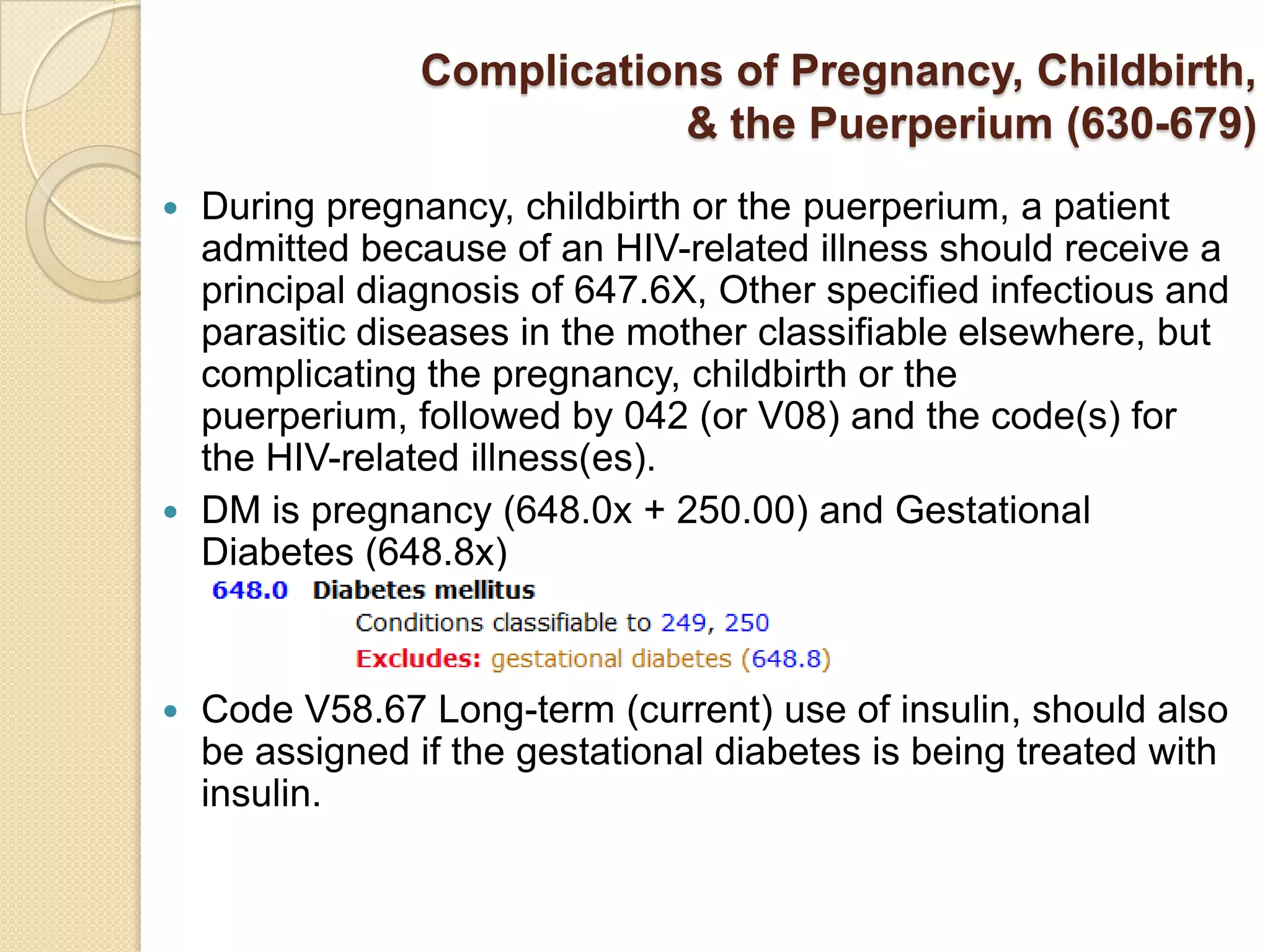
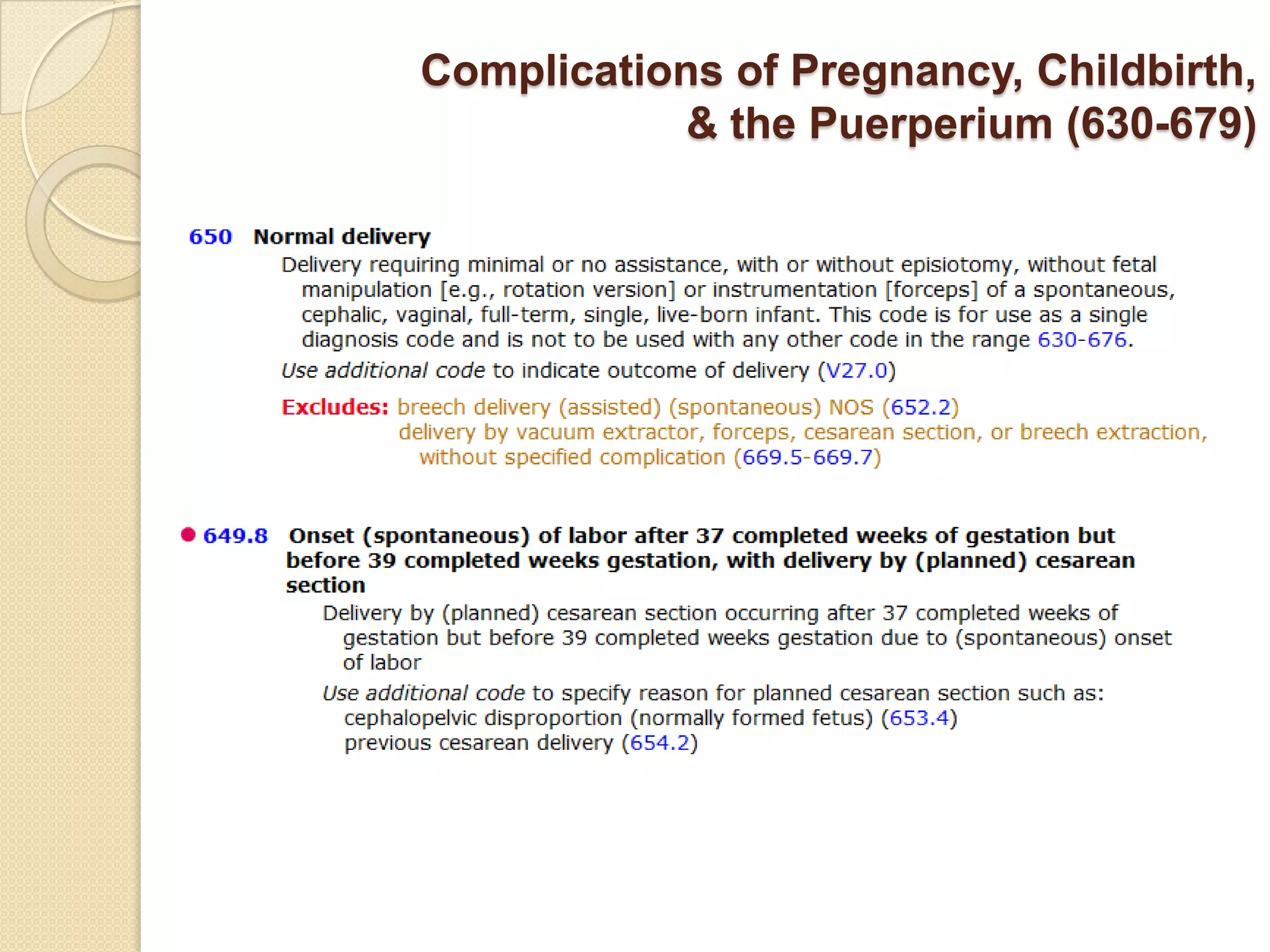
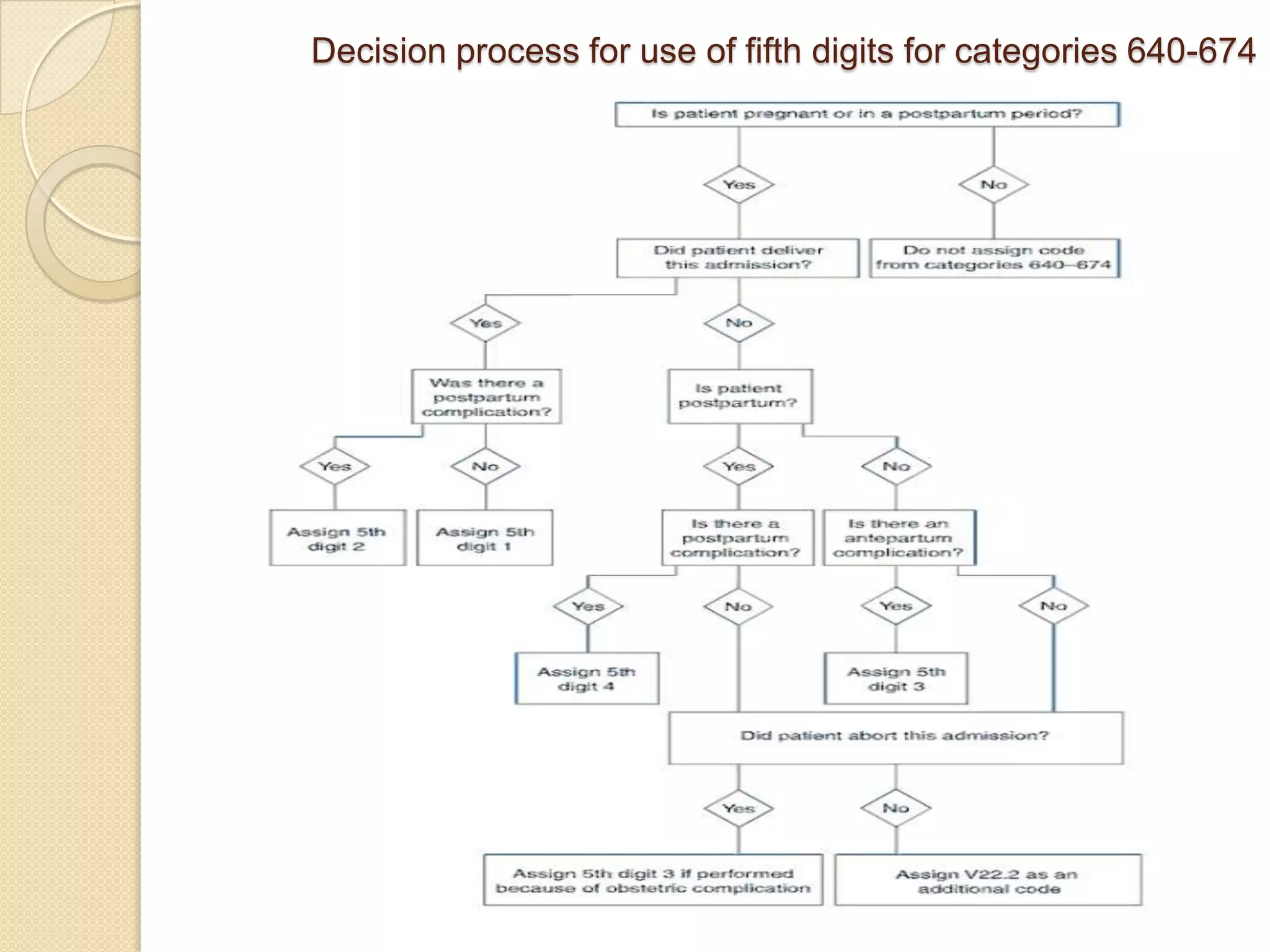
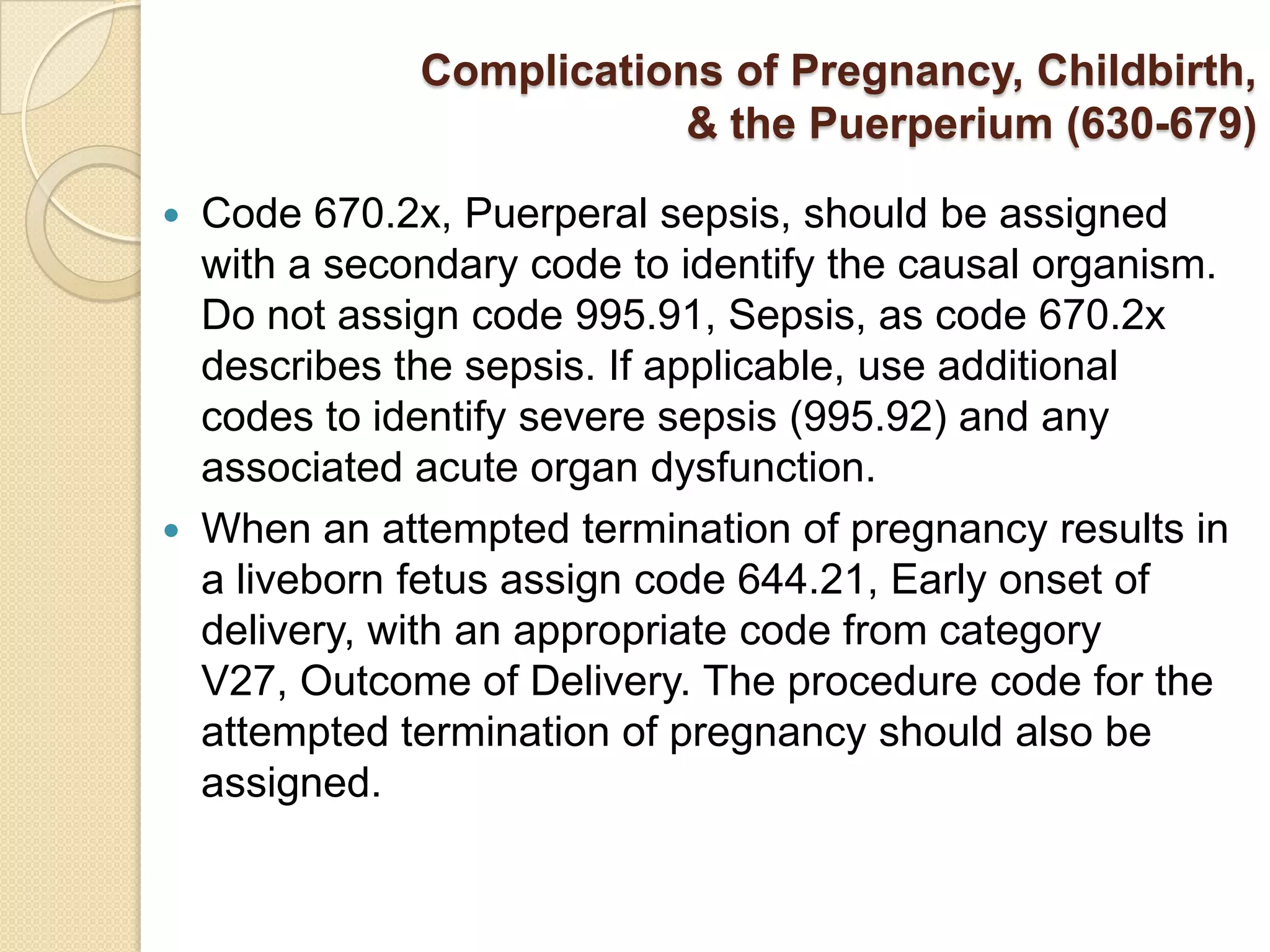

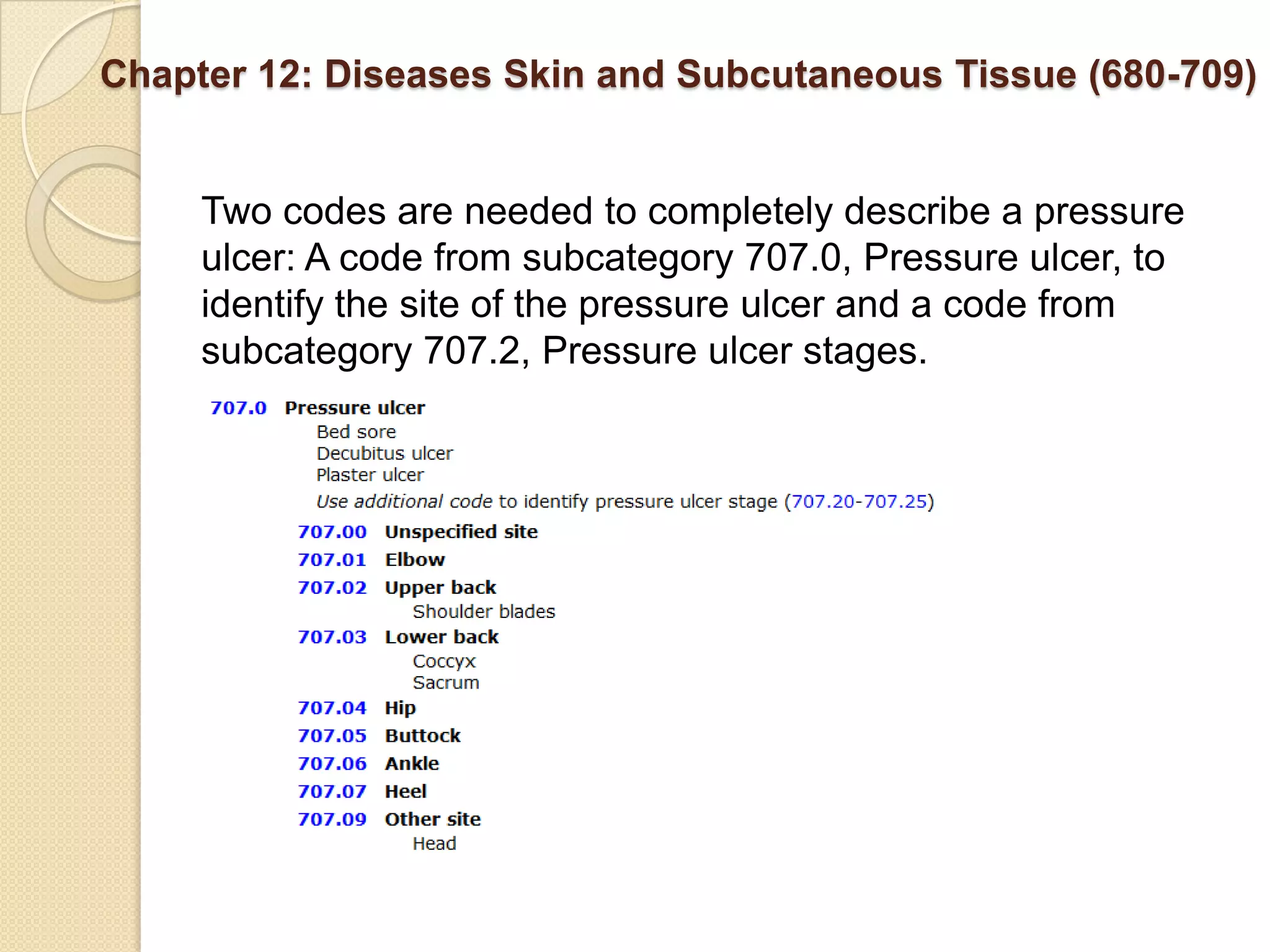
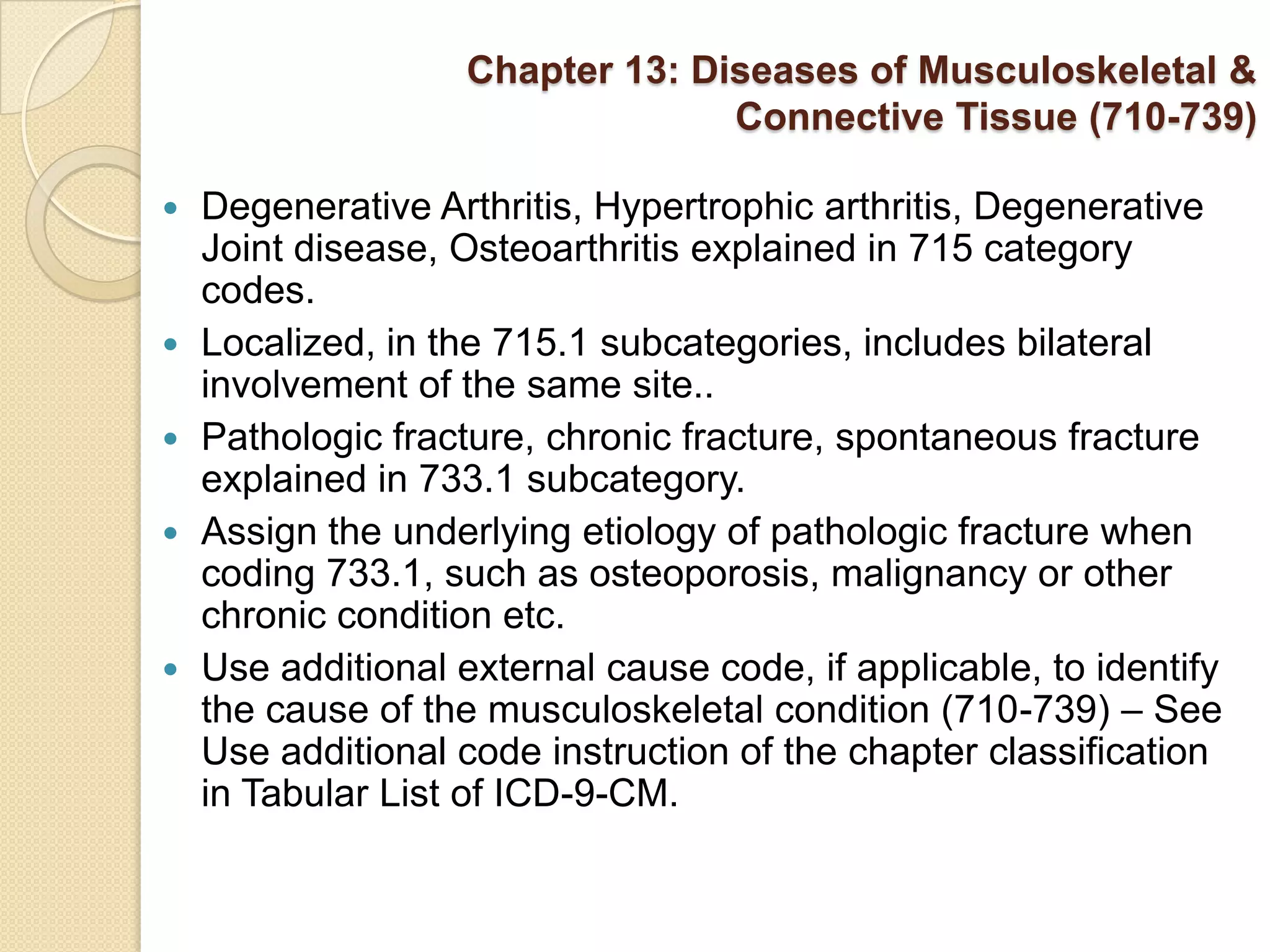
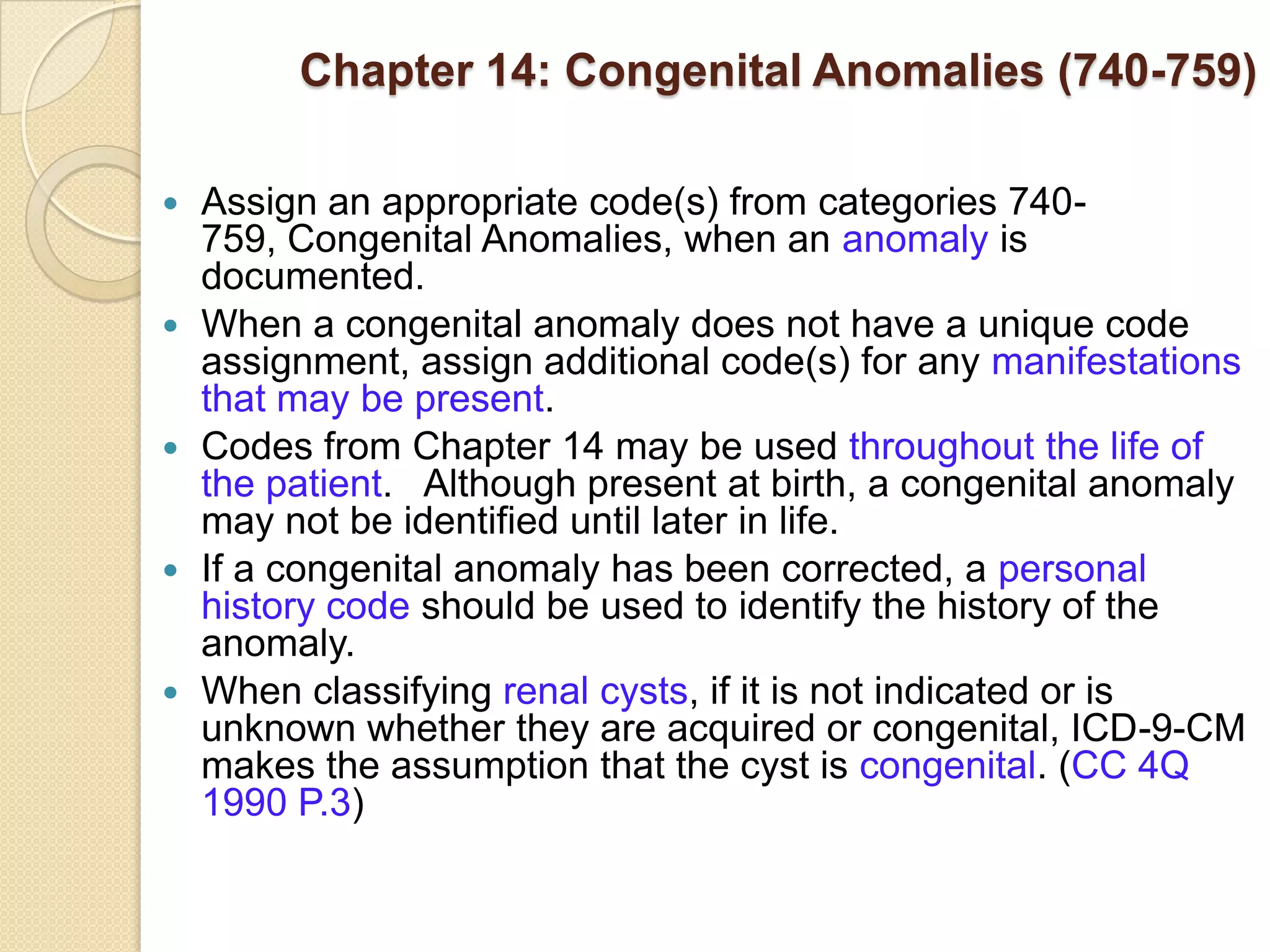
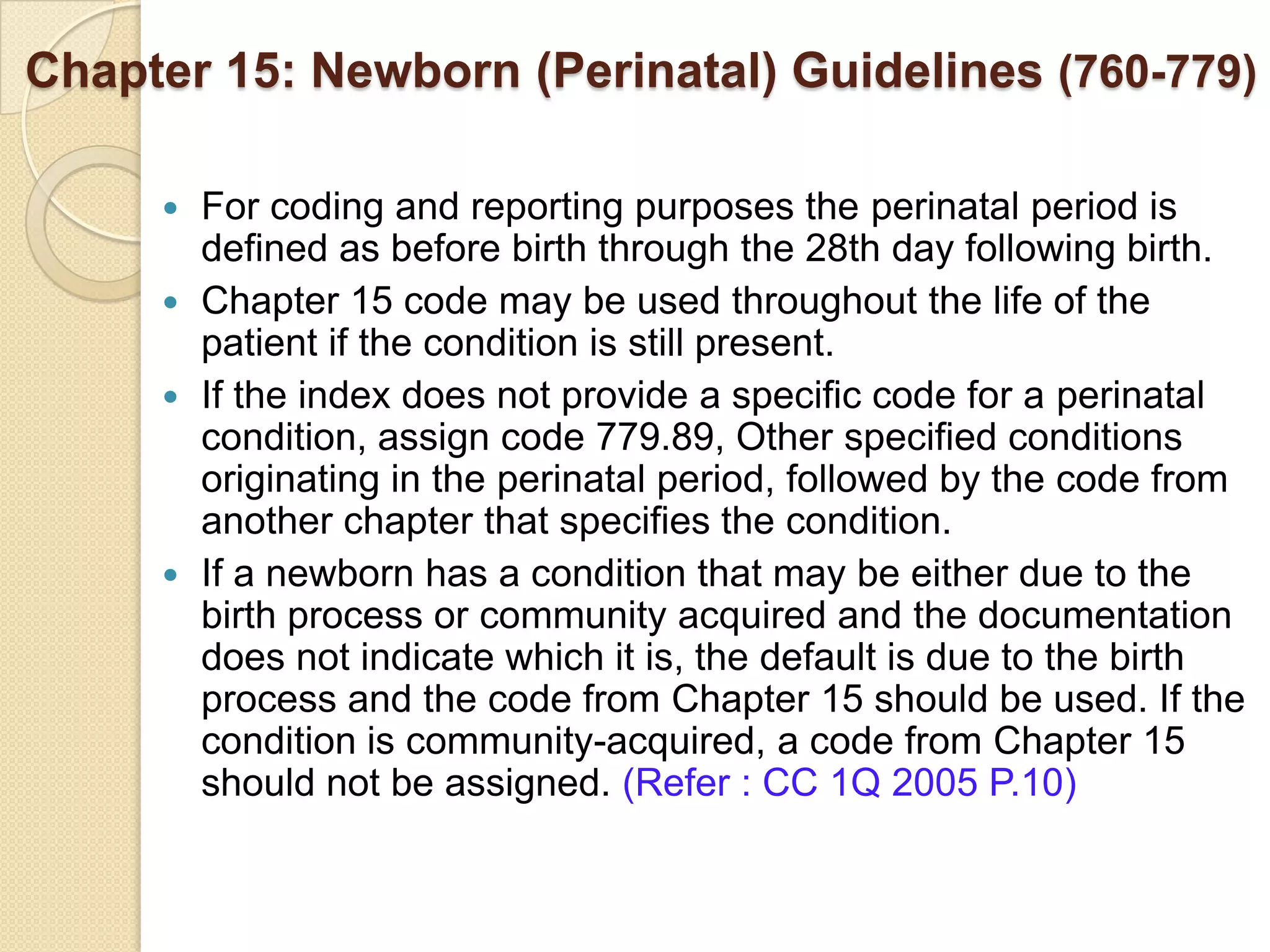
![Newborn (Perinatal) Guidelines (760-779)
All clinically significant conditions noted on routine newborn examination
should be coded. A condition is clinically significant if it requires:
clinical evaluation; or
therapeutic treatment; or
diagnostic procedures; or
extended length of hospital stay; or
increased nursing care and/or monitoring; or
has implications for future health care needs
When coding the birth of an infant, assign a code from categories V30-
V39, according to the type of birth. A code from this series is assigned as a principal
diagnosis, and assigned only once to a newborn at the time of birth.
Assign a code from category V29, Observation and evaluation of newborns and
infants for suspected conditions not found, to identify those instances when a
healthy newborn is evaluated for a suspected condition that is determined after
study not to be present.
A code for prematurity should not be assigned unless it is documented.
Newborn Sepsis Code 771.81, Septicemia [sepsis] of newborn, should be assigned.
Do not assign code 995.91, Sepsis, as code 771.81 describes the sepsis.](https://image.slidesharecdn.com/medicalcoding-120702214422-phpapp02/75/Medical-coding-and-ICD9CM-review-90-2048.jpg)
